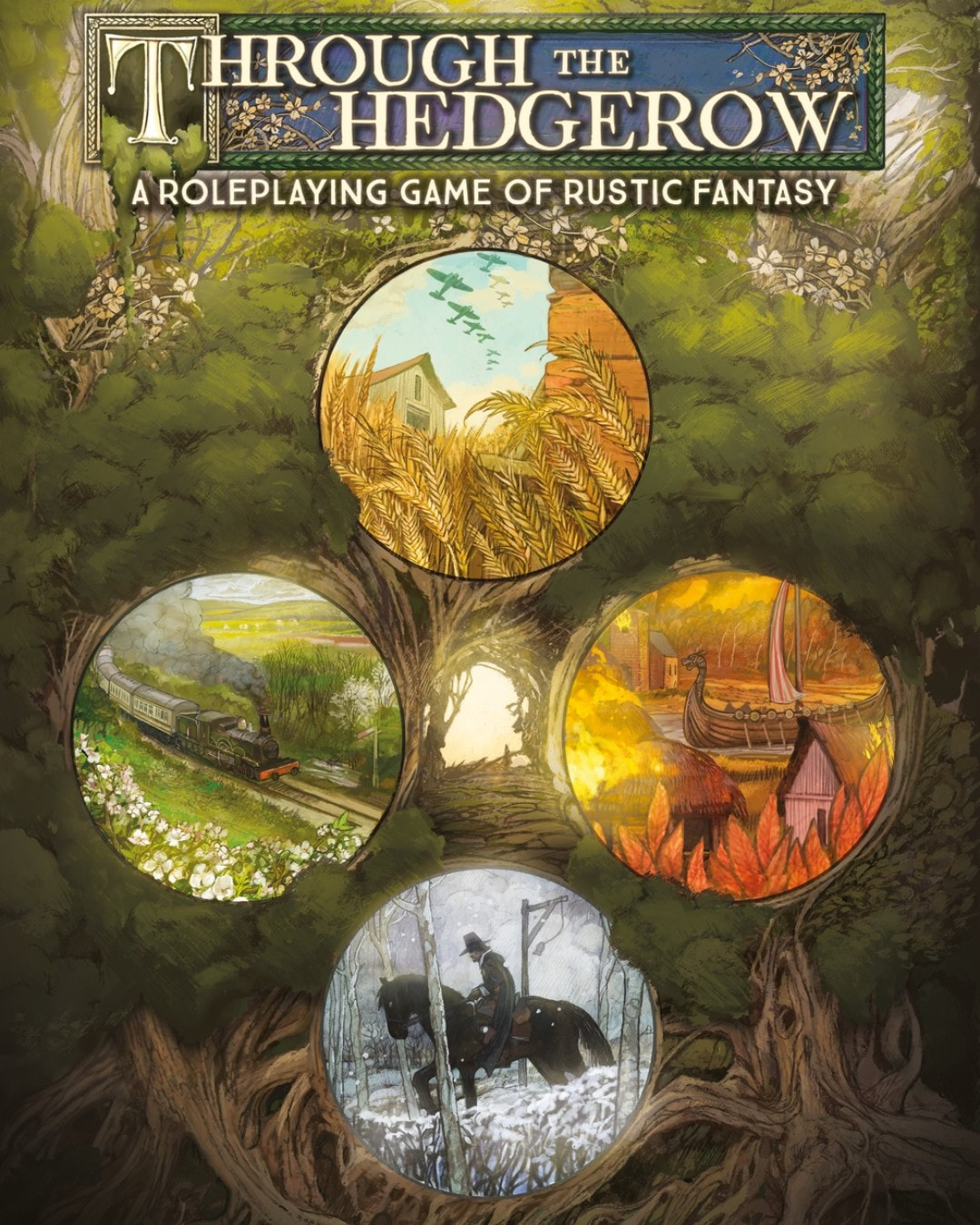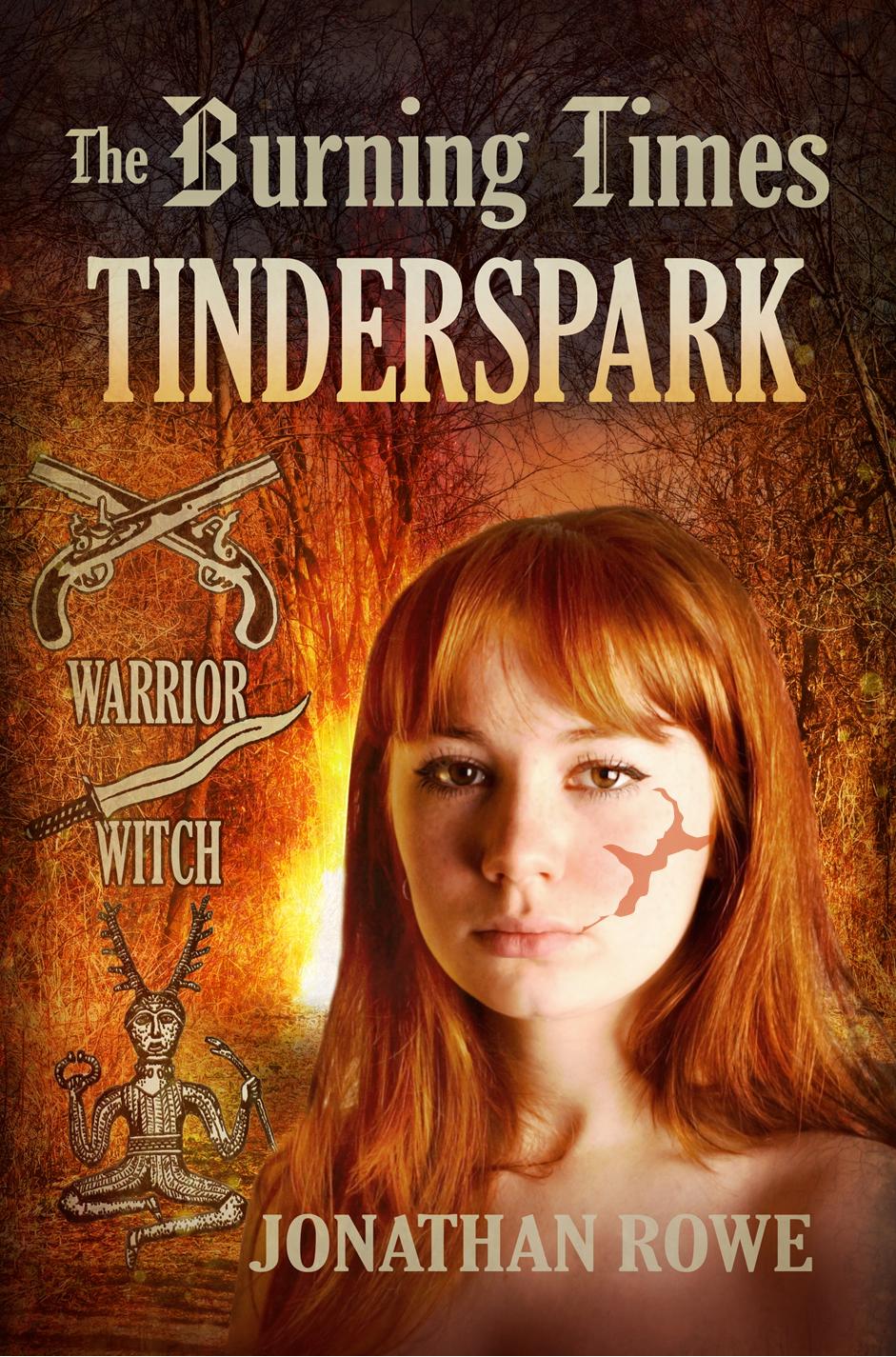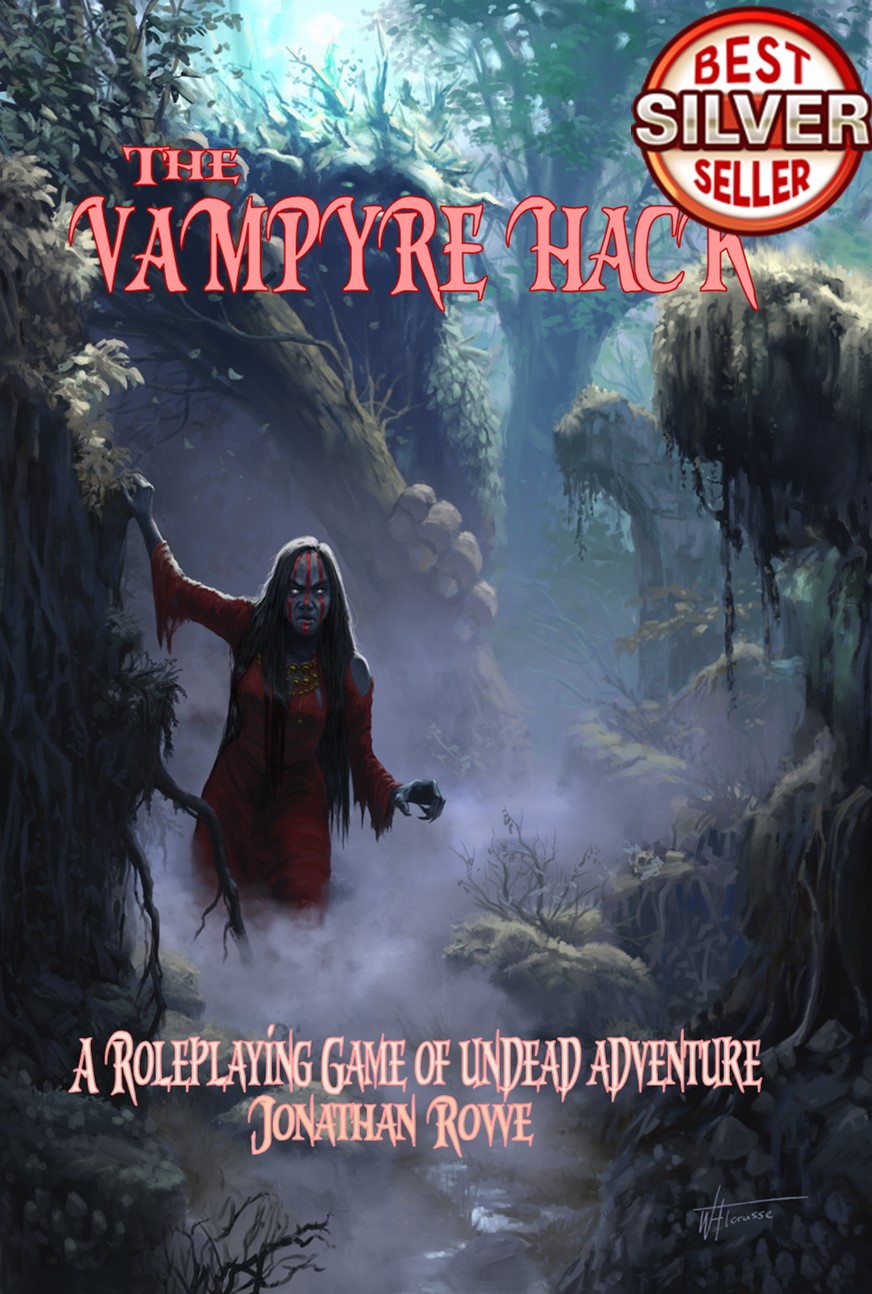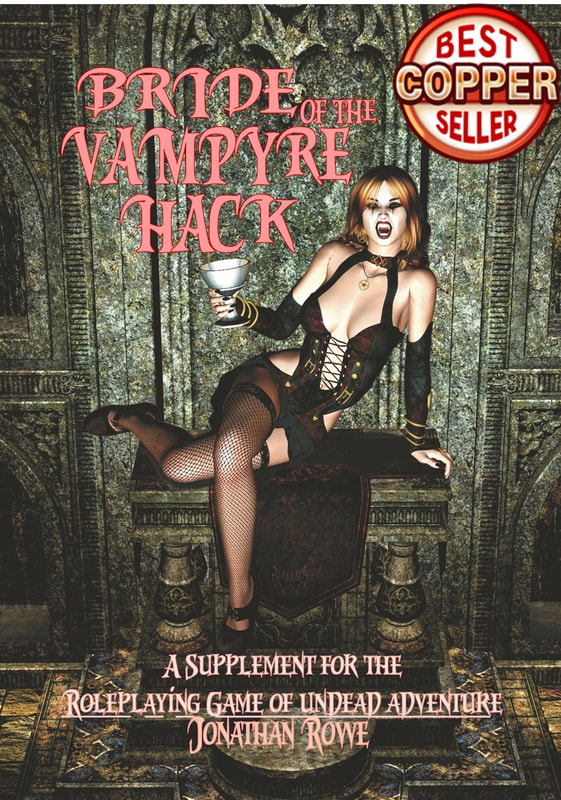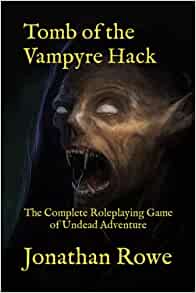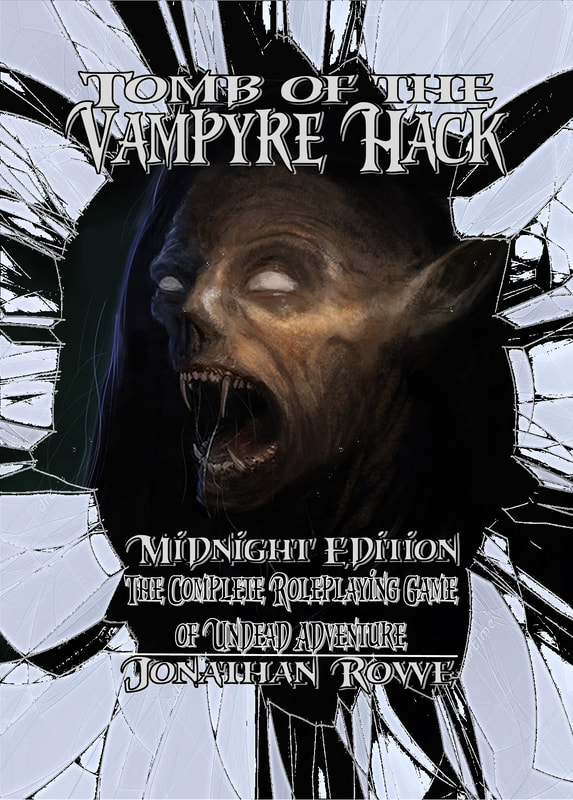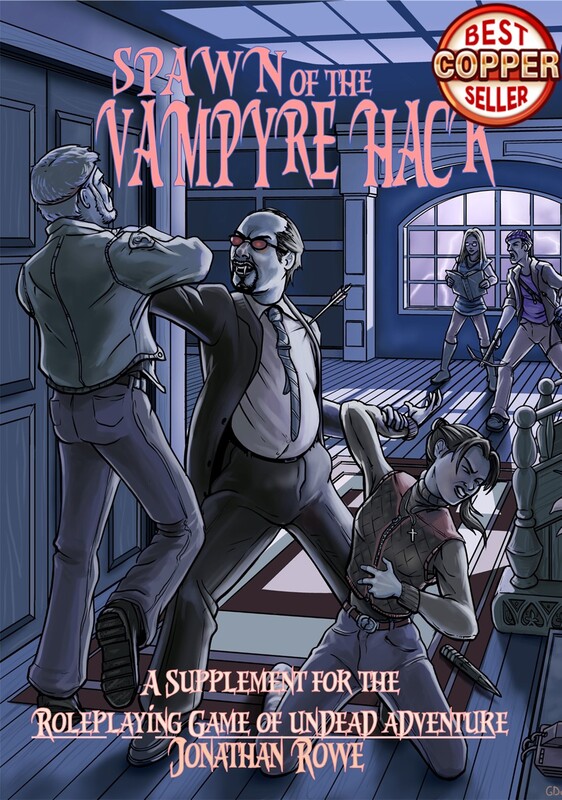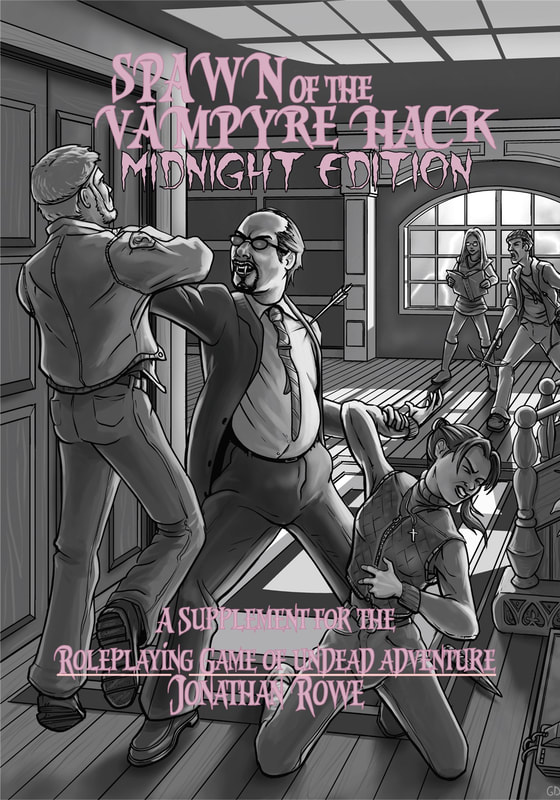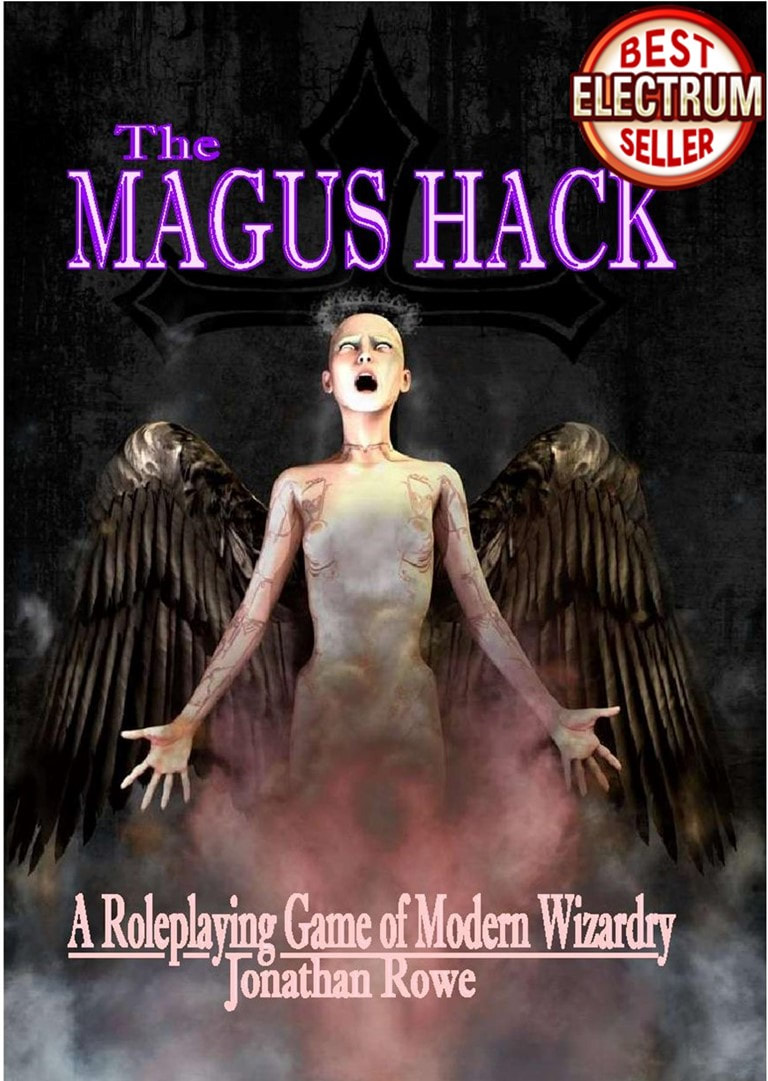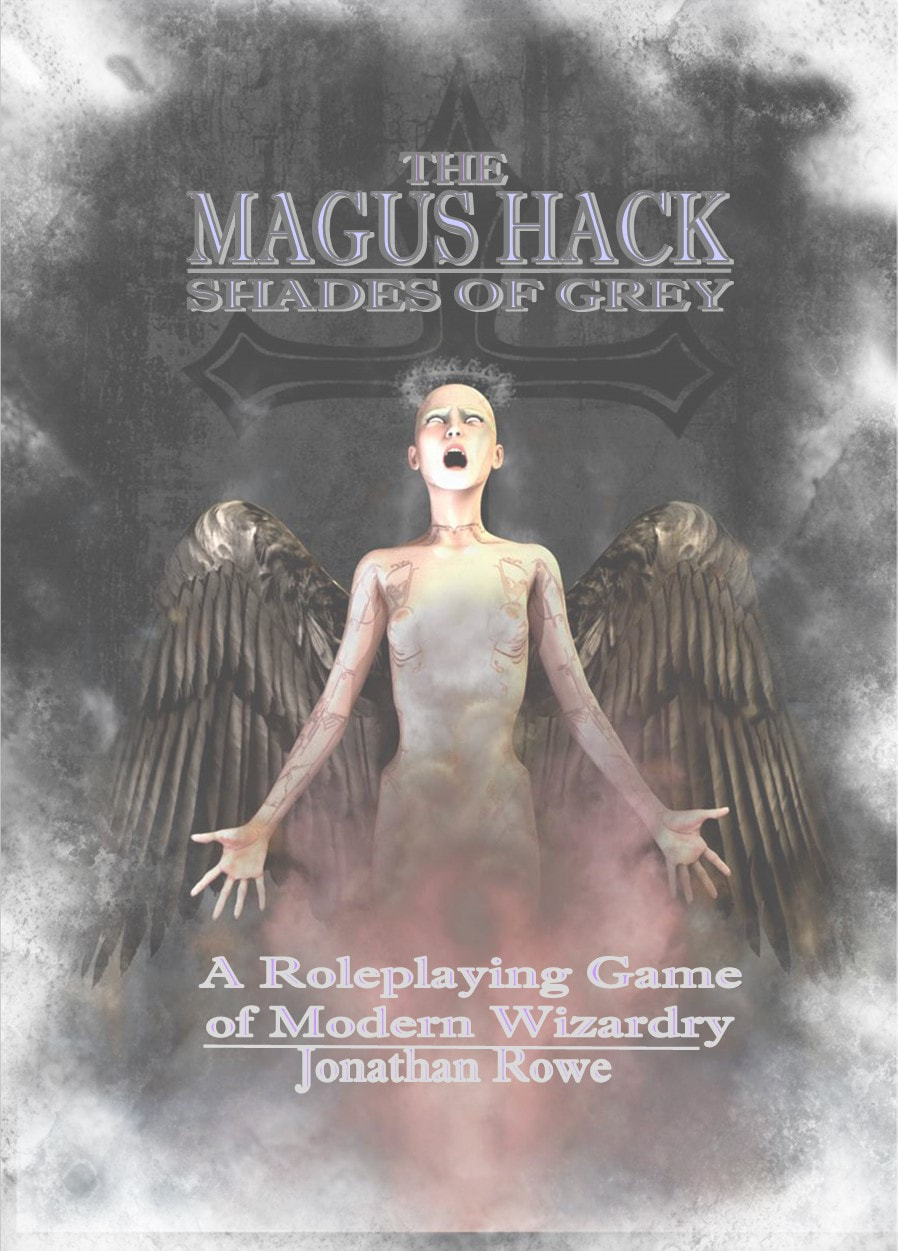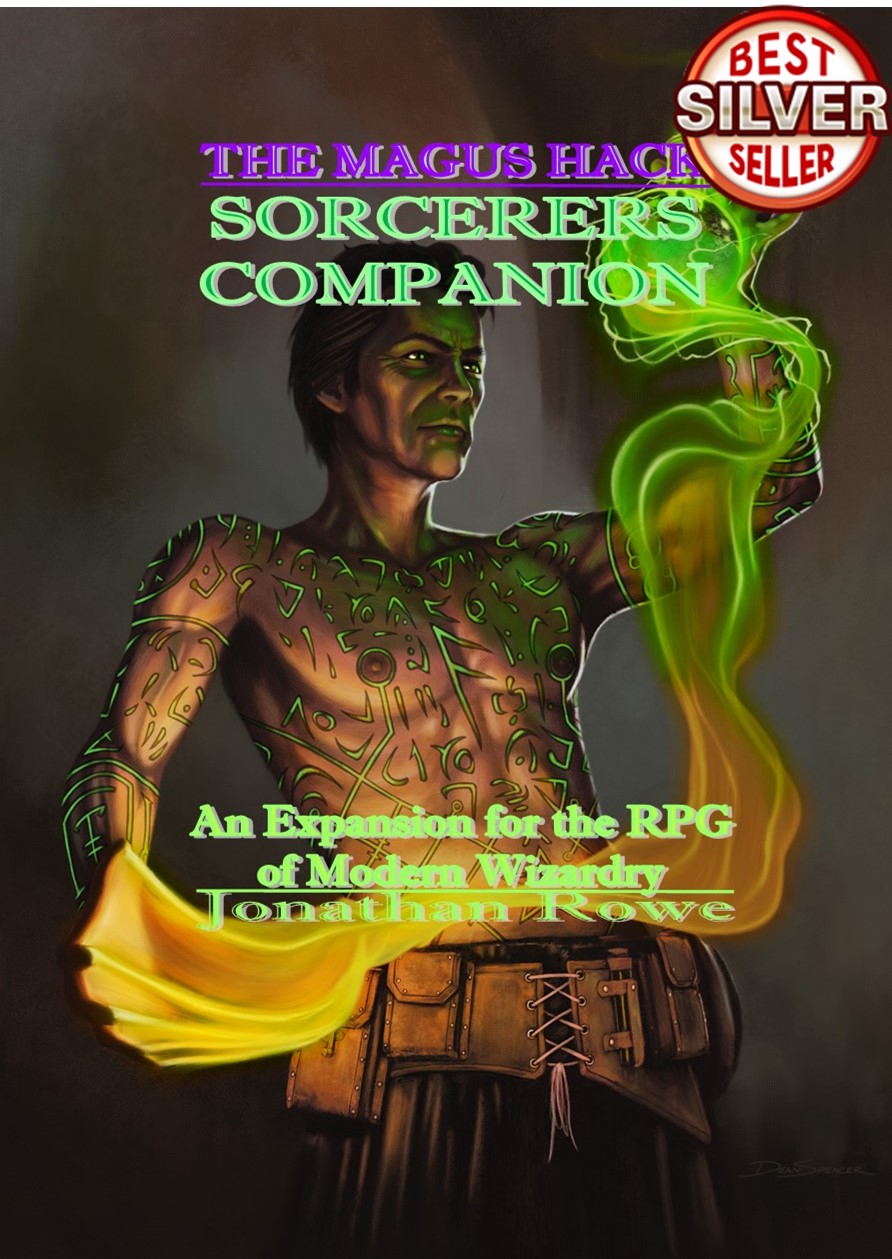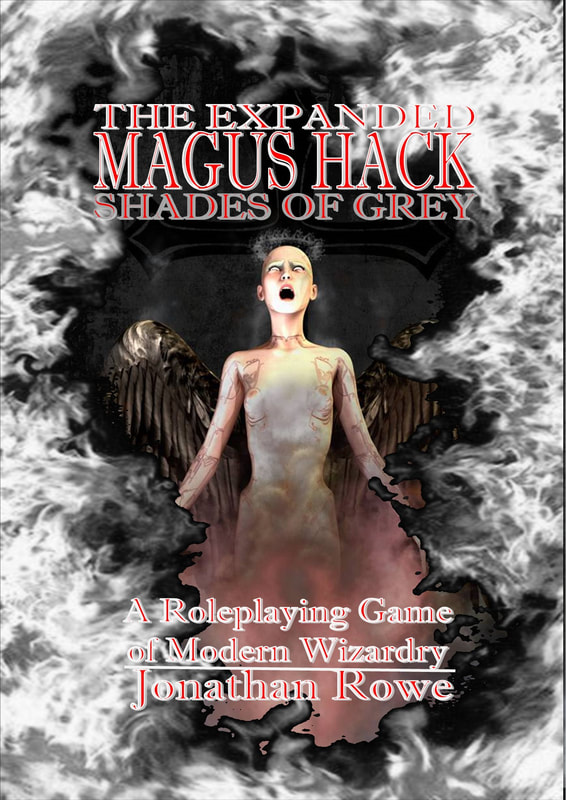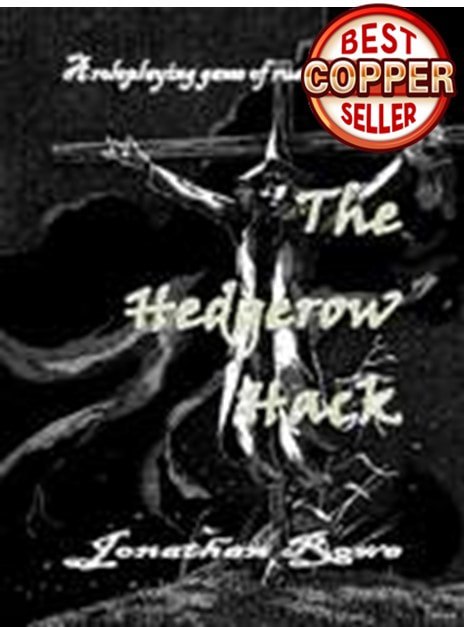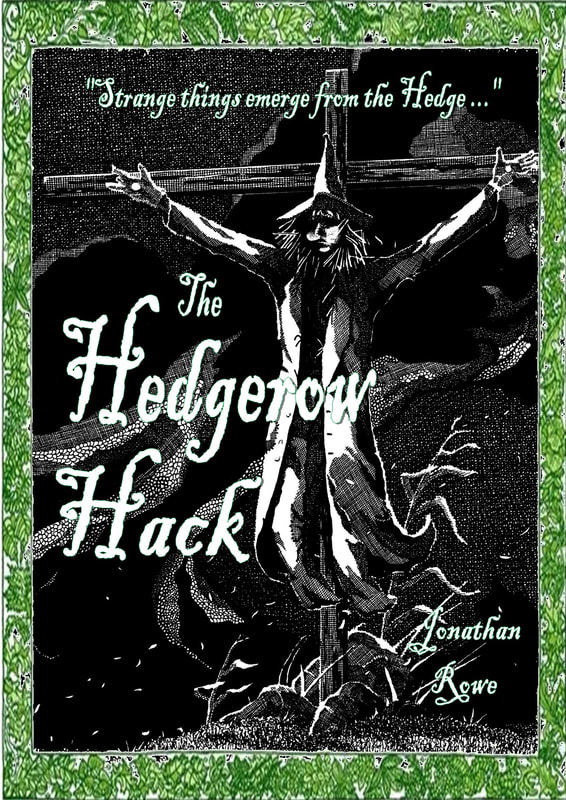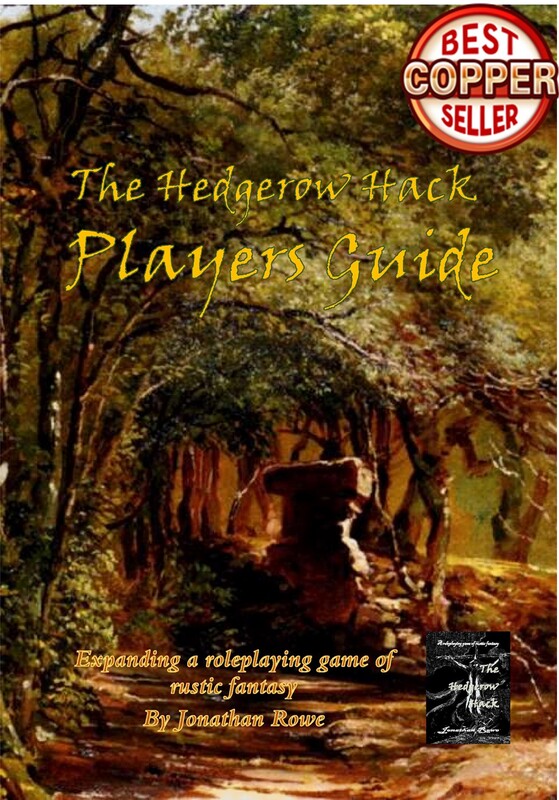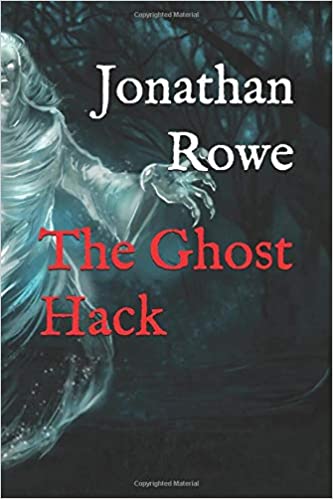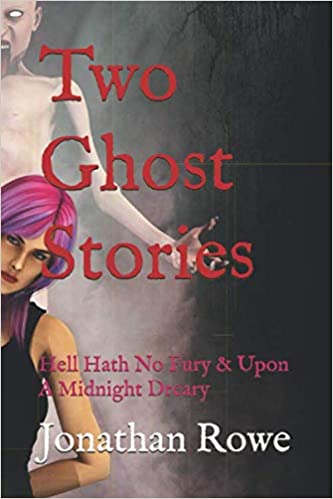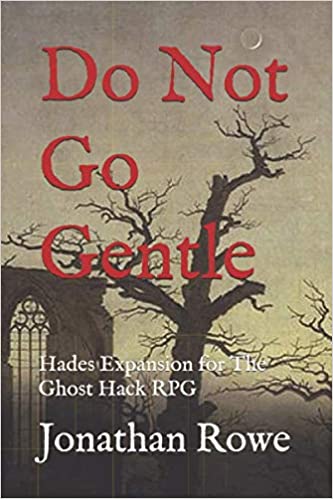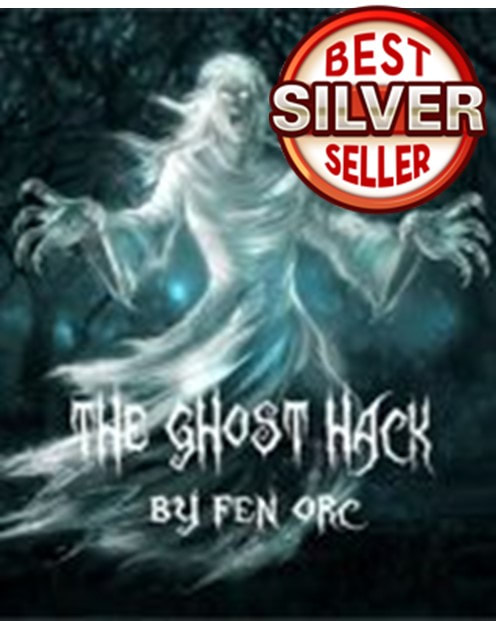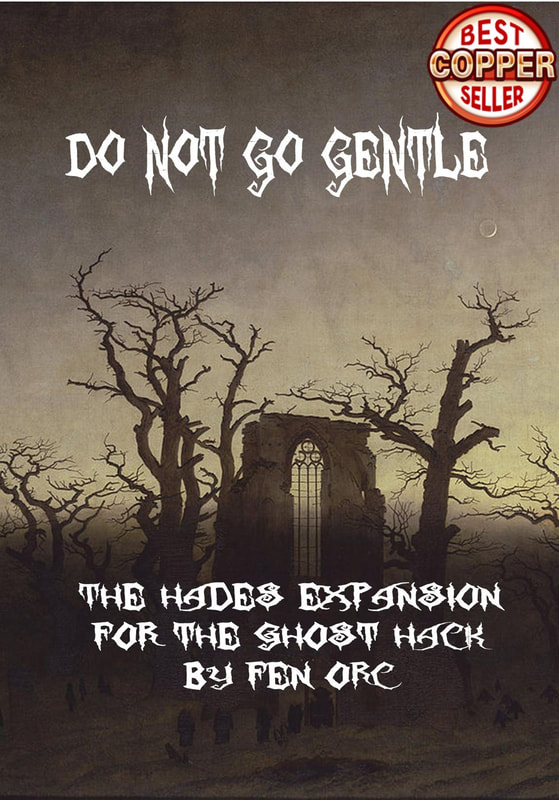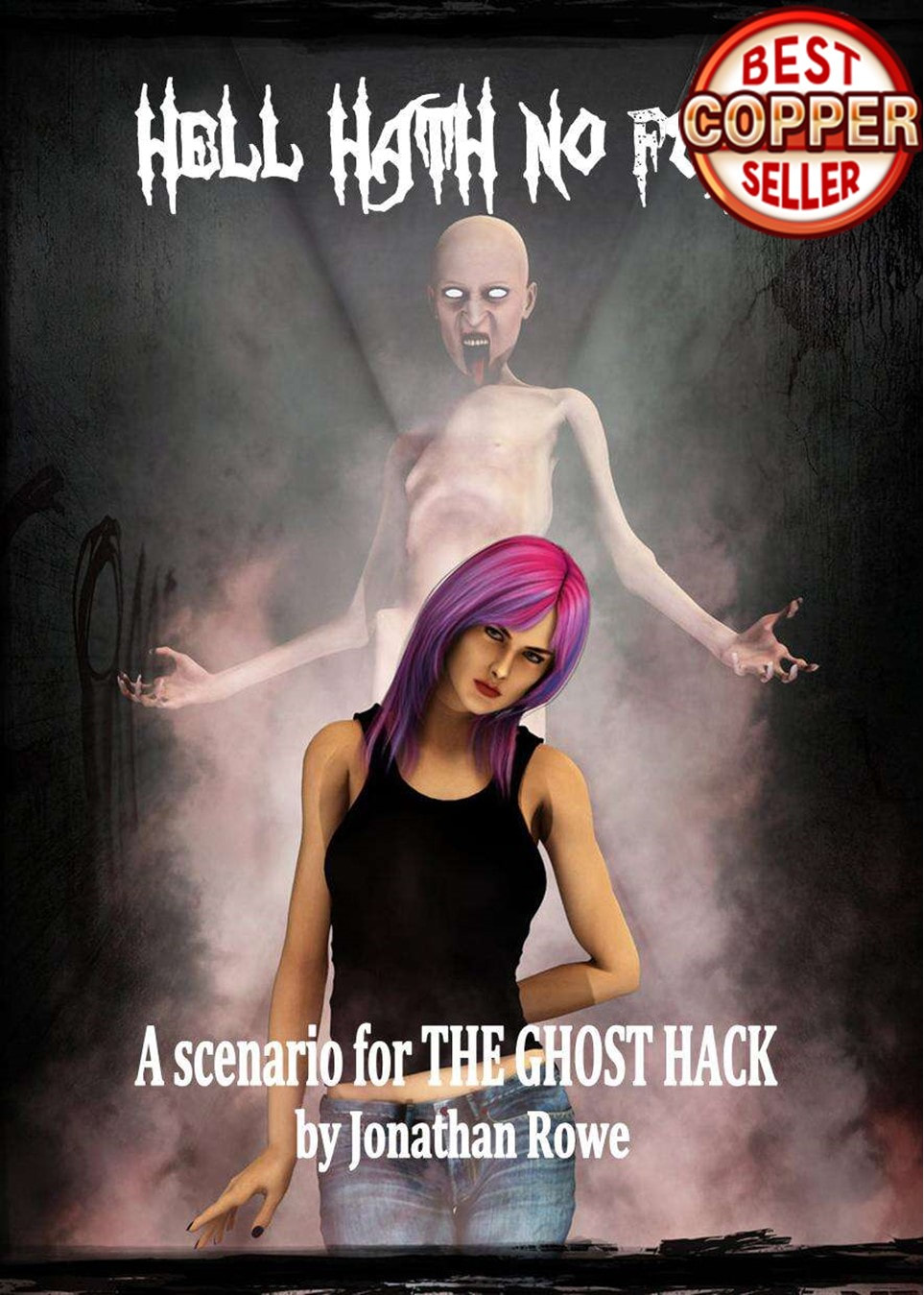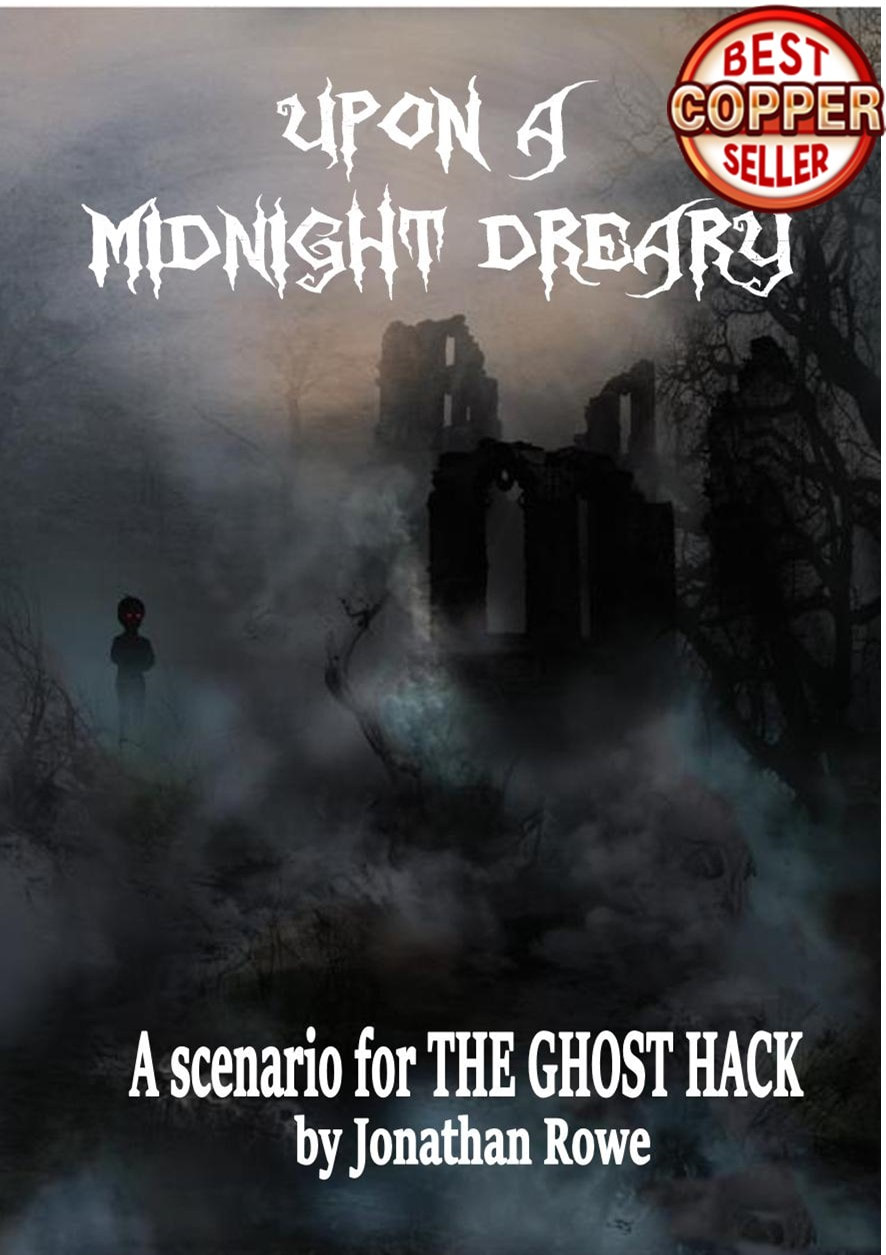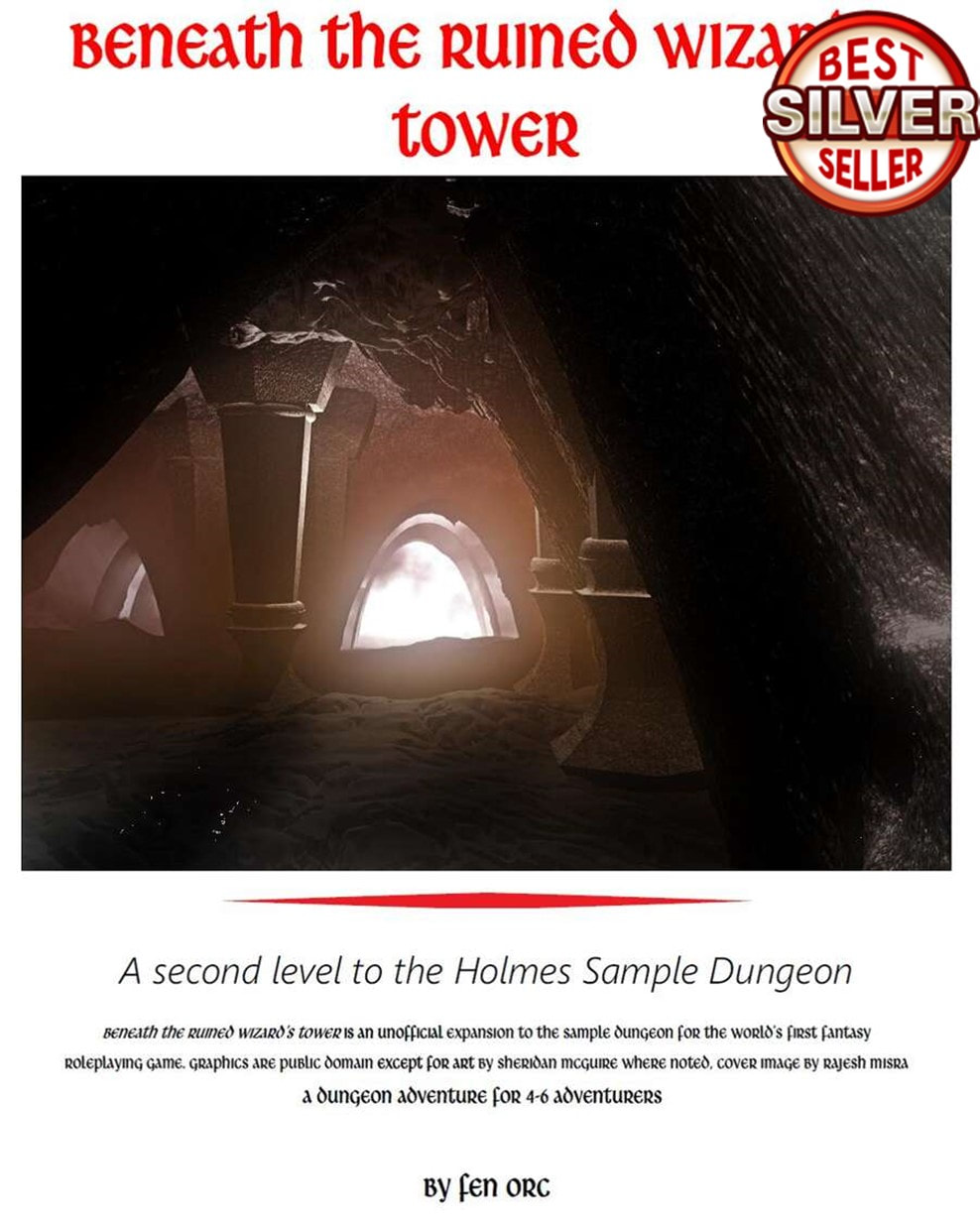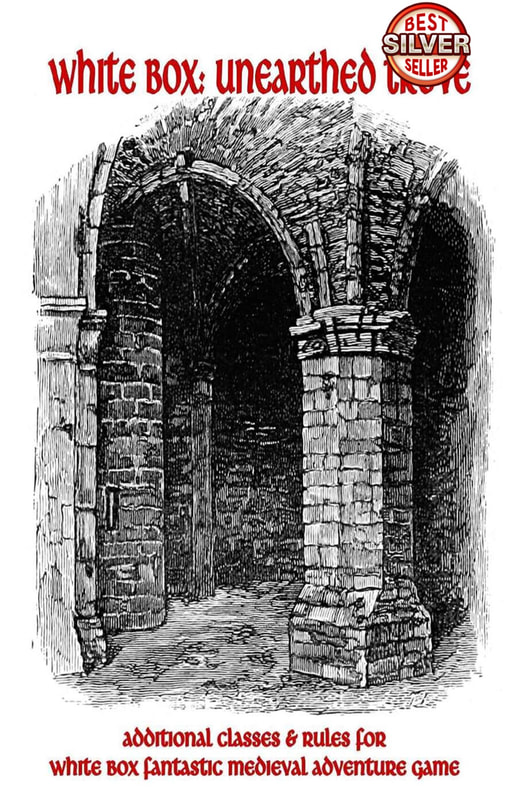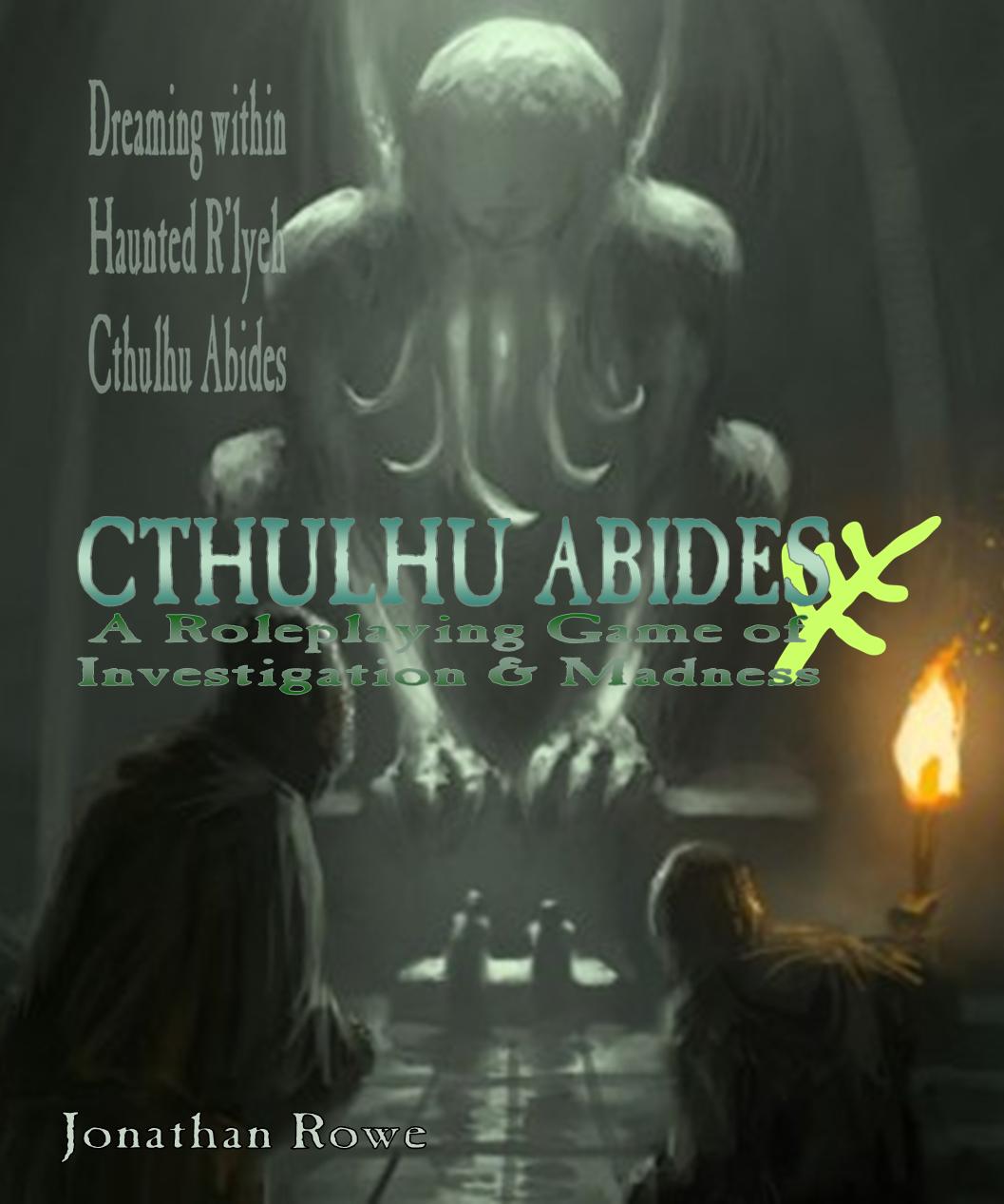|
Back in the early-1980s, White Dwarf became the premier magazine for the roleplaying hobby. In America, Dragon reigned supreme in its support for D&D, but White Dwarf covered the whole hobby (more or less) and was unequalled for the quality of its journalism and contributions. There really were some fantastic scenarios for D&D and Runequest in particular, a brilliant column by Andy Slack supporting Traveller, a bestiary feature that inspired most of the AD&D Fiend Folio and great articles on campaign design generally. My favourite issue of White Dwarf (24) and the Fiend Folio, a sequel to the AD&D Monster Manual containing a mixture of monsters from TSR modules and the pages of White Dwarf. All things must come to an end and as White Dwarf moved into its 50s (in 1984) there was a perceptible dip in the imaginative temperature. Don't get me wrong: there were still some cracking scenarios to be published and most issues had a solid article or two, but it stopped being groundbreaking. The RPG companies were getting into gear supporting their own products with increasingly thoughtful modules and campaign settings. There was just less for a magazine like White Dwarf to do. Perhaps also, less consensus in the hobby over who it was primarily for. Ultimately, White Dwarf would turn into a showcase for Games Workshop's own products, but that was still a few years down the line. There was life in the old dog yet. One promising sign of continuing relevancy was a trend for scenarios for a new RPG: Chaosium's Call of Cthulhu, now a mighty industry behemoth but then a quirky outlier in the gaming constellation, pitching a roleplaying experience of dread, futility and, ultimately, madness and death in the world of H P Lovecraft's distinctive American Gothic. Call Of Cthulhu had been reviewed back in White Dwarf 32 (1982), with reviewer Ian Bailey clearly as impressed by the game as he was perplexed by how to make use of it (a common response at the time). He also observed that the game was "U.S. orientated and consequently any Keeper ... who wants to set his game in the UK will have a lot of research to do." The original Call Of Cthulhu RPG (the best cover too) and the White Dwarf issue that reviewed it - along with an excerpt from Ian Bailey's review Of course, since this was the Golden Age Of White Dwarf, it only took 10 issues for hobby maestro Marcus L Rowland to appear in the magazine, offering 'Cthulhu Now! - Call of Cthulhu in the 1980s.' The article grounds itself in an early '80s setting with an illustration of a punk studying a Job Centre noticeboard while a tentacled gribbly writhes up behind him! A follow-on article offered three contemporary scenarios: Dial 'H' for Horror, Trail of the Loathsome Slime, and Cthulhu Now! This opened the floodgates for White Dwarf contributors to submit a range of Call of Cthulhu material, including Cthulhu in space (The Last Log, by Jon Sutherland, Steve Williams and Tim Hall, from issue 56 in 1984) as well as Cthulhu in rural 1930s England (The Watchers of Walberswick by Jon Sutherland, from issue 50 in 1984) and Cthulhu in British Mandate Palestine (The Bleeding Stone of Iphtah by Steve Williams and Jon Sutherland, from issue 60 in 1984) . You'll notice Sutherland's name recurring? He was quite prolific in 1984! These early scenarios are typical for White Dwarf: they are concise but erudite, with a close attention to period and setting; they are thoughtful affairs, far removed from the pulpy excesses of Chaosium's own globetrotting campaign packs (like the epic Masks of Nyarlathotep, also from 1984 and closer in tone to a Bond movie than a Lovecraft story - a really good Bond movie spliced with Indiana Jones but pretty far from Lovecraft's cerebral interests). I suppose Jon Sutherland's efforts were attempts to take Call Of Cthulhu by the horns and deliver a narrative experience that feels like it really could be a horror short story by Lovecraft himself: very low-key but also, whatever their ostensible setting, very British. All this preamble is the context for me blowing the dust off White Dwarf #60 to run Sutherland's The Bleeding Stone of Iphtah on a group of three players over two evening sessions. Why pick this scenario? Well, it was used as the final scenario in the 1984 Games Day official Call of Cthulhu Competition and the introduction boasts that it provides "an interesting one-off session or addition to an existing campaign" - which sounds ideal for my needs. Next, the question of which rules set to use? That might sound odd, but post-CoC rules have proliferated recently and my respect for Sandy Peterson's imaginative achievement with Call of Cthulhu is only matched by my distaste for CoC's rules themselves, which are Chaosium's Basic Roleplaying system, with the addition of a diminishing Sanity (SAN) stat that spirals down to nothing as the Elder Nasties emerge. Lots of skills expressed as percentages, professions defined by skills and a lumbering combat system that manages to simultaneously make player characters too flimsy (any Mythos monster will squish them) and too tough (you have to shoot or stab someone several times before they fall down). The two contenders to replace CoC are Paul Baldowski's The Cthulhu Hack and Joseph D Salvador's Eldritch Tales. You can find both on drivethrurpg, but Cthulhu Hack is also available from the nice people at Zatu I've written about Baldowski's Cthulhu Hack before and, like most Hack games, it's great for pick-up-and-play. There are only two problems. One is that it tends more towards the pulpy action-adventure side of the CoC congregation and the other thing is that its Hack-derived mechanics don't greatly resemble classic CoC at all; both are problems for adapting the reserved tone and low-key assumptions of Sutherland's CoC scenarios. No, Salvador's game is the one I choose for this. For those who don't know it, it bills itself as Lovecraftian White Box Roleplaying. This means it takes the bare rules and conventions of Original D&D, especially the iteration known as White Box: Fantastic Medieval Adventure Game by Charlie Mason. Now, I fell in love with White Box when I attempted a long D&D-style campaign during 2020's Lockdown, so I'm excited by this. Mason's White Box is free (FREE!) on drivethruprg but a physical copy is stupidly cheap on Amazon too Eldritch Tales is a beautifully presented indie RPG product with evocative (and pleasingly amateur-style) art, fantastic layout, a delightful overview of the Lovecraftian milieu and careful explication of the (essentially simple) rules. Only the presence of a much-needed index would complete my bliss! The game invites you to create characters by rolling 3d6 for the classic six characteristics (Strength, Dexterity, Wisdom, etc.). Non-combat 'Feats' are attempted by rolling a d6 and you succeed on a 6 if your relevant characteristic is low (6 or less), on a 5-6 with ordinary characteristics and on a 4-6 of your relevant characteristic is 15+. Having a particular skill either adds +1 or +2 to the roll or lets you roll twice, choosing the best score - or sometimes both. So much better than faffing around with percentage dice. There are four character classes: Antiquarians, Combatants, Opportunists and Socialites. Within your broad class, you also roll or choose an Occupation that might give you particular skills, funds or possessions. Your Character Class gives you a d6 Hit points at first level (d6+1 for those hardy Combatants). Most weapons do a d6 damage (d6-1 for a thrown knife, d6+2 for a shotgun). Yes, every exchange of violence is potentially life-ending, especially as going up a level usually adds just +1 to your Hit Points. The levels only go up to 6th by the way. I think if your investigator gets to 6th level (with usually 3d6+1 HP), you should interpret that as the universe telling you not to push your luck any further. Insanity is a score that goes up during nerve-wracking encounters. If it ever gets to the level of half your Wisdom you gain a permanent insanity and if it ever matches your Wisdom you become a gibbering NPC. There are short-term shocks for people who fumble their Insanity saving throws (roughly 10% of the time) or gain 3 Insanity in one go (not that uncommon either once gibbous entities come calling). Two nice features of Eldritch Tales are the tables to roll up your Contacts (you have quite a few of these) and the table to roll up your Character Relationships. There are 20 of these suggestions, ranging from 'You are in love with another character (or their spouse or sibling)' through to 'You and another character witnessed something astounding.' These are so helpful for turning a bunch of numbers on paper into a team of investigators ready to risk life and sanity to investigate eldritch mysteries together. Past that point, Eldritch Tales is old-skool D&D: you roll saving throws and roll to hit Armour Class, there are familiar spells and monsters from the Mythos, you gain experience points from defeating the monsters or solving mysteries, you go up levels. The Bleeding Stone of Iphtah by Jon SutherlandThe scenario kicks off in Jerusalem in the 1920s, a time when the Palestine Mandate was overseen by the British Empire. It's a fantastic setting to launch any story - so good in fact that Kenneth Branagh (clearly also a fan of '80s White Dwarf) stole the idea to begin his recent film of Murder On The Orient Express. The PCs are Percy Goodfeather, a Gentleman Socialite who is searching for his vanished sister Darcy. He brings with him his university friend Howard Harris, an Australian Occultist Antiquarian: the two bonded when another friend disappeared, never to be seen again, during one of Howie's rituals in the college rooms. Percy's largesse helps fund Howie's growing drug addiction. They have been brought to Palestine by Joe Birdwell, an Opportunist Outdoorsman who knows the region and its peoples. Birdwell is secretly in love with Darcy Goodfeather, but he knew her as Dahlila de Gul, a torch singer and medium; he was an enthusiastic participant in her demimonde orgies until her strange disappearance. He has tracked her to Jerusalem, but not told Percy of his sister's double life. What's Going On? Actually, none of this is in Sutherland's scenario; these are incidents derived from Eldritch Tales' table of relationships and a few Tarot card draws to help brainstorm a plot. But I can tie it together
Start With Action The scenario starts with the PCs browsing a museum in Jerusalem when they are approached by a shifty Turkish gentleman named Lakey who wants them to take on a job for his boss, a businessman named Lotto who owns the Domino Club and is obsessed with antiquities. This is a run-of-the-mill CoC plot hook and the two NPCs are a delightful hommage to Peter Lorre's Ugarte and Sydney Greenstreet's Ferrari from Casablanca (1942). The sweaty grifter and the intimidating black marketeer Except that being led by the hand by a bunch of NPCs to a patron who explains why they have to go to a dig site in the Judean Mountains and chivvy along an archaeologist called Foster who has promised to bring back treasures for Lotto but has so far turned up nothing ... well, that's a slow start my friends. So instead we have Joe Birdwell see Darcy pass by in the street - and he jumps out of the window to give chase. Darcy is being stalked by dangerous looking Bedouins but when Joe reaches her she reacts without recognition. One of the Bedouins fires a gun at Darcy, but Joe is hit and Darcy takes off in a car while the street erupts in confusion. Percy and Howie arrive to find an Arab doctor treating Joe and warning them that the Bedouins were tribesmen or a cult called Pachalim (made up name but it'll fly) and very dangerous customers. A Side Plot Develops The PCs are supposed to take the job from Lotto and journey to the dig site at Iphtah, but my ad libbed side plot has taken over the story. Joe goes to find out more about the Pachalim from a contact - an Arab businesswoman nicknamed 'the Ibis' (for her pronounced nose). This vociferous widow with her melodramatic flights of insulting rhetoric quickly becomes one of my most beloved NPCs! Joe parries and feints and handles her beautifully and ends up shadowing a pair of Pachalim goons as they invade the seedy guest house where Darcy is staying. Joe gets knocked out when he tries to intervene but, waking as a prisoner of the Pachalim, learns that they are trying to stop 'the Forgotten' (almansiayn) from carrying out a ritual. Yup, they're the good guys. Joe is released, doped up with hashish, and stumbles home to the Domino Club. Percy and Howie have been pulling their own contacts, find out a lot about Foster and discover that the local gangs that Lakey buys drugs from have acquired new weapons in the form of Rot spells that do horrific things to their victims. When the three PCs visit Darcy's guesthouse the next morning, they find Darcy has moved on, but one of the Pachalim is there, dead from a Rot spell, and clues point to Iphtah where Prof. Foster is digging. Yes, this is me trying to re-direct things because this side plot has taken up the evening and we haven't even arrived at the location of the actual scenario. Journey To Iphtah The main scenario takes place at the dig site at Iphtah, where Prof. Foster is going mad. The Professor is using opium to keep the Yithians out of his head, but he's run out of drugs and thinks that Lakey (his supplier) is holding out on him. The PCs get to snoop around the site, spy on the erratic Foster and realise strange things are afoot, but this is a programmed scenario where the PCs have to be onlookers to certain events and no amount of roleplaying or researching will speed them up. In the middle of the night, Foster murders Lakey to get at the drugs, then overdoses himself. The PCs manage to stop the truck escaping with Lakey's corpse by shooting out a tyre. They are left at the dig site with no Lakey, no Professor but a mysterious red stone - the Bleeding Stone of Iphtah. This is where it gets creepy, because a bunch of Dimensional Shamblers show up if anyone tries to remove the Stone from the site without performing the ritual. I hide the Shambles in an eerie dust cloud (for extra creeps) and use them as silent sentinels who murder the Arab labourers to establish their monster bona fides but otherwise leave the PCs to explore. There's a buried shrine to be found and opened and the Stone has to be 'bled' inside a pit to power up the ritual and then ... err .. and then ... ah, well, that's about it really. The PCs are free to leave. Perhaps suspecting that things could turn out rather anticlimactic, Jon Sutherland suggests a raid by snooping Bedouins and I've already set up the Pachalim for exactly this sort of work. The PCs end up stuck in the shrine with the Pachalim outside with rifles in a tense standoff. Then Howie the Antipodean Antiquarian leads the charge, shoots the Pachalim sheikh dead, but is riddled with bullets himself. Percy and Joe shoot their way to safety and the Shamblers disembowel the fleeing Pachalim. Percy and Joe get to leave the site, supervised by the silent Shamblers. And that's, kind of, where it ends. The scenario doesn't make it clear just how the ending is supposed to go down. My players decide to return the Stone to Lotto and continue their pursuit of Darcy. They are unaware of the role they have played in facilitating the arrival of the Yithians by performing the ritual. Evaluating the Scenario and Eldritch TalesThe Bleeding Stone of Iphtah is a rather slight affair. In fact, all of Jon Sutherland's 1984 scenarios are oddly muted. I think they were written in deliberate contrast to the gangbusters style of American CoC material, to be atmospheric, unsettling and cryptic, rather than kinetic, deadly and cosmic in scope. In all of them, the Mythos is a marginal force, largely operating off stage. The PCs spend most of their time exploring a realistic but evocative location, then at the very end there's a Mythos intrusion. The central problem is that there's no way for the PCs to understand the significance of what's been going on or their role in it. Now, in an ongoing campaign this is acceptable - further down the line, the PCs might uncover information which casts a revelatory light on the goings-on at Iphtah and realise that, by performing the ritual, they brought the Yithian-apocalypse a dread step closer. They might then understand why Foster was taking drugs and why the Shamblers appeared to stop them leaving with an un-bled Stone. But as things stand, there's no way to learn any of this - and this was a scenario, you will recall, billed as "an interesting one-off session or addition to an existing campaign." One wonders what the contestants at Games Day '84 made of it. I know some people will retort that Lovecraftian roleplaying is supposed to be mysterious and it's a good thing, not a bad thing, if a scenario leaves players puzzled and disquieted. Yes, that's true, I suppose, but my taste is more for a scenario that places the players in positions of at least partial knowledge. Too much of Iphtah was meaningful only for the GM, even with my improvisations. But these are minor gripes and I should perhaps essay another Sutherland scenario - perhaps the well-received Watchers At Walberswick - before forming a judgement on his output. Eldritch Tales served us very well and is now my go-to RPG rules set for Coc material. I was pretty generous in handing out experience points for roleplaying (and why not? the roleplaying was stellar!) and of the two characters who survived, Percy reached second level (losing some Insanity and gaining that precious extra Hit Point) with Joe just missing his level-up. I'd love to dust off a larger campaign pack - perhaps Shadows of Yog-Sothoth - to run using Eldritch Tales. However, I became very aware of how flimsy Eldritch Tales PCs are compared to CoC: every gunshot or knife wound is potentially lethal. Perhaps swashbuckling Cthulhu Hack would be a better fit for those pulp-y Chaosium campaigns? But for the studious and low-key Call Of Cthulhu scenarios that White Dwarf and Jon Sutherland were publishing in the mid-1980s, Eldritch Tales is ideal.
0 Comments
Do we really need another OSR fantasy roleplaying game? I mean, how many stripped-back, quirky, nostalgic homages to the golden age of tabletop RPGs (i.e. the early 1980s) can the market bear? Oh, all right then. Maybe just one more... Greg Saunders is the author of Warlock! and his game just oozes with love for a distinctively odd, low-key and punk-rock approach to fantasy storytelling. This isn't a high fantasy game of noble heroes on epic quests; no, it's a low-fantasy game of hoodlums with bad breath taking on missions of dubious morality for payment in pennies and stale crusts. Greg has nicely matched his minimalist rules set with striking B&W art (notably by Mustafa Bekir) that takes its inspiration from the fanzines and comic styles of the '80s, especially the Fighting Fantasy book series. This would make Warlock! worth purchasing just as a collector's piece - the new 'Traitor's Edition' is on drivethrurpg and the cover art is wonderful. You can find out more about Warlock! on Fire Ruby Design's website or Facebook page Beyond the aesthetics, Warlock! is worth picking up for another reason: it's a really good system with a distinctive design, rather than a now-typical retroclone of OD&D. Don't get me wrong: I love OD&D retroclones. I've posted before about my delight in Charlie Mason's White Box and Michael Thomas' BlueHolme games. But it's nice to see a game that doesn't start with 6 characteristics rolled on 3d6 and then offer a bunch of leveled character classes. Best Left Buried is a game that offers a novel (and rather subversive) take on old-skool dungeon-crawling by walking away from D&D and taking inspiration instead from Call Of Cthulhu's deteriorating Sanity mechanic. Warlock! does something similar, but its template seems to be Warhammer Fantasy Roleplay's early-Renaissance world with its focus on skills and progression through professions, rather than monolithic character classes but a slightly less gonzo and more mystical theme, perhaps inspired by Dragon Warriors. Enough context. Let's jump in. The Alternative to Hit PointsYou create your Warlock! character by rolling just two abilities: your Luck (d6+7) and Stamina (2d6+12). Stamina ticks down as you are injured - so it's Hit Points, right? Ah, but you get all your Stamina back after a sleep and half of it back after a short rest. This isn't like D&D, where your HP dwindles inexorably. If you survive a fight in Warlock!, you'll be right as rain half an hour later. The complication is Critical Hits. If you get knocked below zero Stamina, you pick up lasting injuries called Critical Effects and these don't go away so quickly. So even though you keep recovering your Stamina, the accumulation of Criticals can make your character non-functional quite quickly - and the worst Criticals will kill you outright. There's a set of entertaining Critical Hit Tables based around three weapon types (slicing, stabbing, bashing) and a fourth one for fire or magic ('blasting'). You make a simple d6 roll and add your negative Stamina to it, producing results that range from the icky ('That was my foot! Can only hobble for 1d6 days! Toes loose in boot!') to the gruesome ('Right in the kidney! Peeing blood! All tests at -5 penalty for 1d6 days') and a result of 10+ means you die (horribly). Another implication of this is that your Stamina increases over time, but only slightly. No one is cutting about with 100 Stamina. You'll be lucky if you ever get above 30. This is ideal for low-fantasy or grimdark gaming where everyone feels vulnerable all the time and every fight is a proposition you have to think twice about. Welcome to your Glamorous CareerNo 3d6 characterstics in Warlock! No Strength or Intelligence or Charisma. Instead, you have a list of 32 skills. Ten start at 6, ten at 5 and the other twelve all start at 4. The core mechanic in the game is a d20 roll, adding your skill or your Luck: if you get a result of 20+ you succeed; with an opposed test, the opponents both roll and the highest result wins. You adjust these skills based on your career. There are 24 basic careers and you roll four of them randomly and pick the one that appeals. Yes, I suppose you could dispense with the rolling and just pick, but this sort of larky roll-to-see-who-you-are fits the theme of Warlock!, which seems to be that you are a rabble of losers, chancers and grifters rather than epic heroes. Careers like grave robber, political agitator, beggar and rat catcher also lock players into the underbelly of a late-medieval world. Your career gives you five particular skills you can immediately increase by 10 levels. These skills have some maximums (10 or 12) - once again, nobody gets to be too competent in Warlock! You also have a Career Skill which matches your career and you use it to do stuff that people with your career ought to be good at. It starts at the level of the lowest of the five skills your career mandates. Experience points (usually 1-3 for an adventure) buy increases to skills in a straightforward way, but you can only improve your career skills. Improving your lowest skill will also improve your overall Career Skill and every time that goes up you add +1 to your Stamina. It gets a bit confusing talking about your five career skills and you overall Career Skill (with Capitals). Some more distinctive terminology is needed. However, in play it won't matter. If your career is Rat Catcher, you won't talk about your Career Skill, you'll refer to your Rat Catcher skill. You can change careers easily enough (it costs 5 experience points) and start advancing a new set of skills - but you keep your old Career Skill at whatever level you got it to. Once you've been in two careers and promoted three skills to 10+ you are eligible for an Advanced Career where skills can be promoted to 14 or 16. The Advanced Careers are almost heroic in stature compared to the scum and villainy going on in the basic careers. For example, a Basic Footpad starts with 'a nasty club, stained with blood, a cloak with hood, and a sack for your gains and a few pretty trinkets which make you feel special and aren't worth pawning.' What a champion, right? But an Advanced Class like the Bravo gets 'a fine arming sword, flashy clothes and a jaunty hat.' Walking tall! As well as your starting equipment, each career has a little table for generating background details. The tone is often funny, sometimes romantic but always downbeat. For example, our poor Grave Robber might have dug up his own mother ('A sad day!') and is haunted by the ghost of his lover ('who you buried and robbed'). Reasons Not to get into a FightWarlock! combat is simple, with combatants moving between abstract ranges (close, near, faraway, distant) and melee attacks being opposed skill tests, with the attacker gaining a +5 bonus to their skill. Because it's an opposed test, this means that if your opponent rolls higher, you take damage during your own attack. Then they get their attack (with that +5 bonus) so there's a good chance you'll take damage then too. If someone rolls a score that's three times their opponent, that's a Mighty Strike for double damage. One implication is that fighting a tough opponent is a mug's game. Any time you attack, there is a strong chance your opponent will hurt you instead; then they get to do their attack (and nasty monsters attack several times). Ranged attacks are a safer option: they're not opposed tests, so if you fail your roll you just miss and that's that! I notice the rules allow combatants to retreat from fights without penalty - none of that 'attack of opportunity' nonsense to punish you for running away - so this is a game that rewards players for valorous discretion and explicitly instructs NPCs to pull out of a fight before their Stamina approaches zero. Armour reduces incoming damage, either by d3 (light), d6 (medium, e.g. mail) or 2d6 (heavy, e.g. plate). Shields increase the effectiveness of armour by one step (so adding a shield to light armour would give you d6 damage reduction instead of d3) and confer penalties on ranged attacks against you. A nice distinction is between 'casual' and 'martial' arms and armour. The casual stuff you can wander round town wearing: light armour, a club, perhaps a short sword. Martial stuff like mail armour and two-handed swords will send peasants fleeing, cause shopkeepers to bar their doors and bring the constables running. Magic and other Stuff you can StealAnyone can cast spells (a nod to Runequest, I think) but only two classes let you increase the Incantation skill you need to do this: the Priest and the Wizard's Apprentice. You pay the casting cost in Stamina whether you succeed in the test or not, so non-specialists won't enjoy mucking about with spells, especially as miscast spells can backfire, with results that can be disquieting (two small horns grow out of your head) or deadly (blasted across the room for 2d6 damage). Another nice touch is that spells are physical things: they're written on scrolls or amulets. This means they can be copied, vandalised or stolen. Searching out new spells and finding ways to earn or swindle them from other casters is the preoccupation of magic-users. Once again, a downbeat world emerges from the rules. Money is slightly abstracted. You have pennies, silver coins and gold coins. All characters start with 2d6 silver. Commoner items cost d6 pennies, middle-class items cost d6 silver and noble/luxury items cost d6 gold. Adding to the quality or workmanship increases the cost by 1d6 or 2d6 and metal weapons/armour always add 1d6 (for poor quality) or 2d6 (good quality) to the base cost. This means you don't need a price list, just a notion of the class bracket an item or service belongs to. The price isn't fixed, representing the vagaries of supply and demand. Buying a cudgel costs 1d6 pennies, a beautifully carved cudgel costs 2d6 pennies; a sword is 2d6 or 3d6 silver; mail armour is 2d6 or 3d6 gold. The World and Stuff You Can Run Away From
The bestiary includes standard fantasy critters, though the presence of Ratmen makes me suspect Warhammer's influence again. The Stat Block is pretty simple: how many actions does it get, what weapon skill, how much damage, armour type and Stamina. Ratmen with a single action, 10 Stamina, light armour and a weapon skill of 4 won't detain you for long; a dragon with 5 actions per round, heavy armour, Stamina 62 and an attack skill of 11, dealing 3d6+2 damage will be rather overwhelming but still on a human scale. There are no monsters with Stamina into triple figures, attack skills in the mid-teens or damage output more than twice what a player character could muster. Final Thoughts on Warlock!Warlock! is note perfect as a stripped-down low-fantasy RPG that you can pick up and play. The setting of 'the Kingdom' is reminiscent of Warhammer's Empire, without the distracting presence of Chaos: Greg Saunders clearly prefers BBEGs with more interesting (i.e. human) motives. If you don't want Warlock!'s setting, then it's a supremely adaptable system. For example, I used to run a campaign using The One Ring RPG where the PCs were hobbits living in Bree, having low-key adventures: everyday tales of country folk. However, TOR is a heroic RPG, so characters quickly progress into being rather overpowered warriors, despite the scenario themes of source fresh eels or judging a village choral competition. Warlock! might actually be a much better system for a rustic campaign in Middle Earth, with just a few tweaks to skills and careers and a Corruption mechanic bolted on. The Traitor Edition of Warlock! is a handsome-looking book, but a few typos and syntactical infelicities have made it through the proof-reading. If you buy on DTRPG, note that the PDF version is fully updated but the physical version has some uncorrected errors. In particular, it still has the rules for the Career Skill from the old edition - the updated rule is that Career is always matched to your lowest career-based skill. I was a bit surprised that there are no Critical Hit tables specifically for monsters. I spoke to Greg Saunders who defended keeping tables to the minimum necessary, saying "Warlock is in the OSR style - minimal rules relying on lots of interpretation by the GM." I'm all for freewheeling, but tables can be part of the gonzo charm of OSR, so (with respect to Mr Saunders, who would do this sort of thing much better) here are a couple more Crit Tables for the two most common monster attack types: Three's Company:To help me get into Greg Saunders' headspace with Warlock!, I picked up Three's Company, a book of three ready-to-play adventures available on drivethrurpg. The first scenario is Ghosts of Hollyford. The PCs arrive at a community in the wilderness, best with political difficulties; they are invited to track down and kill a monster that wiped out a gang of outlaws, in return for looting the outlaws' treasure. The monster puts up a challenging battle, but the pleasure here is in the conflicting agendas of the NPCs (and possibly conflicts among the PCs who could end up serving opposed causes) and the elegiac atmosphere as the adventurers explore a ruined city whose inhabitants have become the mysterious 'ghosts' of the forest. Vice and Villainy in Verminham is a bar room brawl, raised to a level of feverish confusion. Once again there are several well-motivated factions converging on a notorious gambling hell to make off with a valued ledger. The scenario offers maps and NPC profiles and a rough timeline, but could play out in many different ways, depending on who the PCs decide to work for and how they go about their mission. Red Night in Fair Marenesse is the most 'high fantasy' of the set. The PCs are recruited by a merchant to steal back some goods from local smugglers and get the contraband into the city. Naturally, things are not as they seem. This is another scenario that could go off in wildly different direction, perhaps as a detective-style murder investigation, perhaps as an espionage-style theft or a big gangster battle. The BBEG that shows up at the end introduces themes of overt supernatural horror. All three scenarios have excellent NPC profiles, imaginative tables to assign motivations for PCs to take part and 'wandering monster' tables that make overland journeys into very thoughtful affairs. These tables rarely involve monsters, but deliver theme in spades. In fact, all three settings are vividly realised - especially the limestone market at Fair Marenesse, but the Bloated Boar tavern in Verminham and the ruined city of Golethas Arzul are memorable locations too. In fact, the scenarios work as a fantastic calling-card for Greg Saunder's 'Kingdom' setting, touching upon distinctive cults and criminal gangs as well as the fallout of the civil war against the Traitor mentioned in the main rulebook. It isn't necessary to use that setting to run these scenarios, but they certainly make you more curious about this fantasy world. If I were to criticise, it would only be for the lack of maps. Warlock! tends towards the theatre-of-the-mind end of the gaming spectrum, but lots of OSR fans love using miniatures and floorplans. The Bloated Boar gets a set of floorplans, but the smugglers' base at Seastead doesn't. The forests around Hollyford would benefit from a map to help orientate the various journeys involved in that scenario. But never mind that. These are three very thoughtful scenarios, each with a sharply realised setting and covering a range of themes. Hollyford evokes the mysterious concept of Waldeinsamkeit (a German word with no direct translation into English which means 'the feeling of being alone in the woods') and an insight into the fragility of a pioneer settlement in lands usurped from a declining, but not yet vanished, elder race. Verminham is a high-spirited and cheerfully amoral romp, but Red Night offers a memorable conclusion that hints at a deeper supernatural menace behind the petty gangsterism and greed that characterises the world of Warlock!
In the last post, I described how my Magus Hack campaign took a strange turn as I staged a Total Party Kill by getting the players to roleplay the villains and defeat their own PCs. That ended with sole survivor Edgar Raven, a time traveller, detonating a temporal grenade that hurled him into a different timeline where the PCs were still alive but ... different. 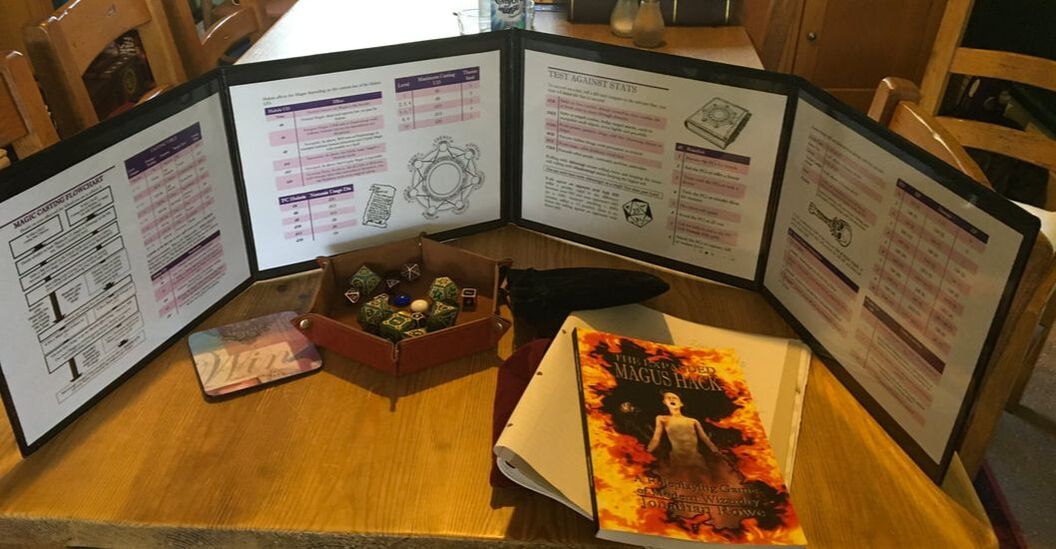 Garrr. My lovely GMs screen from drivethrurpg didn't turn up in time for the session, but it would have looked like this, with the Magus Hack inserts. Yes, it's a multiverse-themed session where the players get to roleplay alternate versions of themselves in an alternate setting. My hope was that this experience would deepen everyone's roleplaying before the alternates replace (or somehow merge with) the original characters in the original timeline. Will that happen? Let's find out. I didn't want this to be another game where the players were simply handed pre-generated characters, so there had to be meetings beforehand to discuss these variant-PCs, so that they would represent possibilities for the original characters that the players were interested in pursuing. Alex (playing Luke) wanted his variant to be an active Magus in this timeline, but a fugitive on the run from the world's angelic overlords. This was an opportunity to play a more focused version of his original character. Oliver (playing George Smith, now George Smythe, MP) wanted his variant to be a Magus who had renounced his magic and was now a successful politician, helping the angels rule the world after the 'Crusade' to defeat the Fae. Karl (playing Bobby Kimber, now Rob Banques) wanted his variant not to be a Magus at all, but an ordinary human, unaware of his magical destiny, living a family life in the 'Heaven On Earth' the angels created. Alec (playing time-traveller Edgar Raven) has the mission to track down his old friends and reunite them as Magi again. No small task, especially as the world is now ruled by benignly fascistic angels who have banned magic. His first clue about the sort of world he is in is seeing that the sexy angelic NPC Genevieve whom he knew in the original timeline is here a TV presenter of a daytime show Just Genevieve that helps mortals acclimatise to a world where their rulers - and lovers! - are angelic beings. Where Angels DareThis new timeline needs a bit of background. Here, the Fae Insurgency during the 20th century turned into an outright invasion in the 1970s. Magi fought back against the trolls, hags and sidhe knights that emerged from Hades and Britain became the cockpit of a decades-long battle between mortals and immortals. No one knows who invoked the Host of Heaven, but at the start of the 21st century angels turned up to fight alongside the Magi in what became known as the Cleansing Crusade. The tide of battle turned. The ettins were toppled, the goblyns routed and the portals sealed. The Fae and their blood-soaked altars were banished once again. The Host of Heaven stayed to rebuild a shattered world. Magic was blamed for the Fae's arrival and deemed to dangerous for mortal use. Many Magi, exhausted by the Crusade, signed the Book of Renunciation, giving up their magical powers in exchange for peace and security. The great shock was the revelation that Thanariel, the angel of death, who had fought the Fae in Hades, had been a traitor all along; in fact, Thanariel was blamed for bringing the Fae into this world in the first place. The death-angel was consigned to Perdition and the Magi who fought under his Tattered Banner were hunted down. Without the angel of death, the world is transformed. Humans no longer die. This has been greeted as Heaven On Earth. Angels remained on Earth to oversee this new order. Increasingly, the trappings of democracy are being discarded; why vote on things when Heaven knows best? Another feature of this new way of living has been the growing number of marriages between mortals and angels. Not just marriages either: the new Ministry of Pleasure helps mortals adapt to their death-free lives and offers erotic therapy for the confused, the lonely and the anguished. The Love of Heaven is taken very literally by the angels of the Ministry. Not everyone is comfortable with these changes. The children born to angel/human relations are the Nefilim and some of these are now reaching their teens and showing disturbing traits. Meanwhile, mortal fertility is dropping rapidly: knowing they will not die, people are less motivated to have human children. The promise of life without death is not all it seems. Mortals still age, still get sick, still experience dementia and derangement - but they cannot die. The experience can be horrific. The Akkadians are angels who take custody of these poor souls. There are rumoured to be vast camps in the north where the Un-Dead are kept. Some escape the Akkadians are terrorise their communities as they humanity ebbs, replaced by rage and madness. The Akkadians are hard pressed to track down and capture the rogue Un-Dead. Some of Thanariel's necromancers survive, living a hand-to-mouth existence in the backstreets, sewers and subways of London. Their magic can grant True Death to the suffering and bring final peace to the Un-Dead. While the Akkadians are too busy to attend to every Un-Dead maniac, they are always alert for displays of forbidden magic and hunt down the necromancers with zeal. Character Profile: Luke - Choose Death, Not LifeYou fought in the Cleansing Crusade: alongside Thanariel, you hunted down the cannibal Redcap gangs and set the wicker giants ablaze. You travelled to the Underworld and helped Thanariel close the Portals to Faerie. Then, Thanarial was condemned. Most of your comrades Renounced their magic or were sent to Perdition, but you went underground, literally, and now live below the streets and in Hades, in the company of the few remaining dead souls. Luke's hideout in the abandoned underground station at York Street, near King's Cross You are a black market euthanist, bringing the gift of Death to those who no longer want to live in Heaven On Earth – or to the un-dead monsters such souls turn into now that the gift of True Death is denied. Watch out for the angels of Akkadiel, the lord of Perdition, who hunts down the rogue dead and sends them to his camps. Character Profile: George Smythe, MP - the New StatesmanYou fought in the Cleansing Crusade alongside Longinus and Albanus. You were there when Gawain set the Thames ablaze; you liberated the sacrificial pits of Pinner; you watched the last Portal close, sealing the Fae away forever. After that, it was confusing. You placed your name in the Book of Renunciation and were compensated for your lost magic with wealth, privilege and political power. After the Crusade, you became a MP for the (rebranded) Grail Party, promoting Heaven’s rule on Earth with traditional British values. Sometimes it’s hard to get the angels to appreciate democracy and habeus corpus. Your angelic intern Lucian is invaluable for this. You are trying to quit bad habits: smoking and drinking. Your pleasure therapist is an angel named Mimsiel (‘Mimsy’) who helps you unwind, especial after the recent death threats. Character Profile: Rob Banques - Another Day in ParadiseYou're not a Magus but you remember London under the Fae: a terrifying place of burning wicker-men, cannibal Redcap gangs and elven warlords. How much better things are after the Cleansing Crusade, with Heaven in charge. You live in an elegant apartment block, Paradise Spire, in East Croydon, just two minutes from the train station. You married an angel, Lindariel (or ‘Linda’). You can’t imagine how you got so lucky, because Linda is beautiful, successful and an Under Secretary in the Ministry of Pleasure. She works long hours and you are a house husband. You have three 'nefilim' children together: Molly (5) and the twins Jacob and Isaac (3). Linda is very attentive to the twins development but you can’t help feeling she neglects Molly. You’ve recently hired an au pair named Jane to help hot house the twins. How It All Went DownThe session was necessarily constructed from three different plotlines (one for each of the characters above), with time-travellers Edgar Raven as the link. Raven used scrying magic to locate George Smythe then teamed up to help Luke lay to rest an un-dead predator terrorising the residents of a Deptford apartment block. Having convinced Luke to help him, the two went to confront Rob, arriving just as Rob was activating his own magical powers. Meanwhile George Smythe had recovered his magic too, but drawn the attention of an angelic Akkadian who beat him to death (if that were possible in this world) and abducted him. That's a blunt re-telling, but the point of this session was in the exquisite roleplaying touches that brought these characters to vivid life and delved deep into the source and nature of their magic. LukeLuke's story follows the beats of urban horror. Luke is a fractured, haunted person for whom the city is a gauntlet beset on all side with supernatural terrors. He visits the Foundations, the pit where Shard Tower once stood which is now a war monument. For the tourists, the Foundations is a multimedia-assisted descent, commemorating the heroes and martyrs who gave their lives to rid the world of Fae. For Luke, it is a graveyard where even the ghosts of his friends have been banished, their memories distorted. The Anathema is a site dedicated to the treachery of Thanariel, an Orwellian focal point for public hate, but Luke remembers the death-angel differently and is filled with futile rage at this rewriting of history. Determined to find relief through action, Luke heads to Deptford where a rogue Un-Dead is troubling the residents. He interviews the grieving wife who watched her husband deteriorate with brain cancer but could not bring herself to commit him to the Akkadians and their sinister asylums. Luke stalks the un-dead sufferer through the basements and this is where he meets Raven, who had been following him with scrying magic. The two of them overpower the un-dead husband and use magic to bring him the relief of true death. In roleplaying Luke, Alex brought out a sense of purpose and a theme for his magic that had been missing up till now. The first meeting of Luke and Raven was roleplayed rather beautifully, with Luke becoming fascinated by the prospect of another timeline where the tragedies he has lived through have not yet occurred. GeorgeIf Luke's story was urban horror, George's tale unfolds as personal tragedy. George Smythe, MP cannot focus on his job. He has just delivered a car crash interview, stumbling through a half-hearted defence of the forthcoming legislation to ban alcohol and cigarettes and restrict licensed recreation to that offered by the Ministry of Pleasure. His angelic secretary Lucian is always at his side, but George only wants to escape to somewhere where he can smoke, drink and remember. Down in the street below, a strange beggar is staring up at George's window. George cancels his appointments and insists on visiting the Foundations, but takes no comfort from the carefully-cultivated memorials and skewed historical perspectives on offer. There is footage of himself as a younger man, a warrior and a hero. Instead, George goes to Claridge's in Mayfair; the hotel is now owned by the Ministry of Pleasure. George is supposed to attend erotic therapy with Mimsiel, but uses the opportunity of being free of Lucian (whom he now views as his gaoler) to escape to the roof. Alone at last, he drinks and smokes and contemplates the drop. Down below, the beggar is looking up at him. The figure beckons. George steps from the roof and falls. In roleplaying George, Oliver brought a sense of immense personal pain to the previously stoic character. The fall was a moment that captivated us all, especially as it echoed George's previous death in the original timeline. The 'beggar' is George's magical essence, an expression of his psyche's need to be whole again. The fall, like that of the Fool in the Tarot deck, is a step into new possibilities: in this case, resurrection. George Smythe is a Magus again and, more importantly perhaps, experiences a dramatic montage of his own past as the guardian spirit of the British Isles, confronting invaders and oppressors as far back as the Ice Age. Exulting in his power, George sends a banner of fire across London, serving time on the Hosts of Heaven. The nemesis is quick to respond: his Akkadian handler arrives, a powerful angel in a double-breasted suit. George is defiant and pulls the sword of Calad Bolg - Excalibur! - from his own heart. The angel smashes George to the ground and drags him away, but the sword is left gleaming in the shadows, thrust into the paving stones and immovable. RobUrban horror, violent tragedy and now domestic psychodrama. Rob is a house husband, experiencing sexual difficulties with his beautiful angel wife Linda. While taking the children to the park, Rob is belittled by another parent and stresses over the shortcomings of his daughter, Molly, who is overlooked by everyone in favour of the startlingly precocious twins, Jacob and Isaac. Things become more stressful when the new nanny arrives, a woman named Jane for whom Rob conceives a powerful (and powerfully reciprocated) attraction. Determined to straighten his head, Rob goes looking for his missing cat, Kimber. His neighbours on the floor above have disturbing news: they have discovered the dead cat's body and the animal died in torment, having been ritually slain. When Rob gets home, his wife has returned and reacts to Jane with barely-concealed hostility. As she leaves, Jane tells Rob something he can make no sense of: that the twins belong to Linda but Jane is his alone. Rob drinks too much wine while preparing supper. He is waiting for an episode of Just Genevieve with a focus on men who are intimidated by their angelic spouses and cannot perform in bed. When Raven and Luke arrive at the door, Rob won't listen to their crazy stories. While Linda is hot-housing the twins with high-level mathematics, Rob picks up Molly, steals Linda's key and unlocks her study - the only part of their home he has never entered. The study is a prison cell. The prisoner, crouched in the darkness, is masked and chained. Rob understands at once. This is his Magus-potential, that his angel wife is keeping from him. Molly is the key. Before they stole his memories, he was the Beast who fought Heaven and Fae with equal ferocity. Yes, he killed his own cat: his subconscious trying to tell him what he is. Rob kisses Molly tenderly, tells her he will see her again and unleashes his magic. In roleplaying Rob, Karl brought mounting panic and anxiety to these domestic turmoils. Many of the scenes were fluently improvised and his final confrontation with Linda over the children (and her favouritism of the twins) produced a powerful sense of a dam about to break. The final reveal - that Linda is his gaoler rather than his wife but his powers can only be reclaimed by sacrificing the existence of the daughter he loves - came as a bombshell. Where Next?George is a brain-damaged prisoner of the Akkadians, who are whisking him away to the North Sea Asylum in Lincolnshire. Excalibur is waiting to be recovered from a Mayfair mews. Lindariel has fled with the Twins - doubtless to create trouble for Rob. No one got to watch Genevieve's episode on sexual dysfunction, but will the Magi confront her anyway? They suspect she is the same Genevieve they knew in the original timeline. What's going on in Hades? Where is Thanariel? What's happening at the North Sea Asylum? The story continues in a fortnight.
Ah, the Total Party Kill. In classic Old School gaming this happens when a wandering monster roll generates something the party just aren't equipped for - or after a succession of hilariously dismal rolls. In roleplaying Meme-lore it happens when a frustrated GM unleashes Cthulhu in Power Armour on recalcitrant players.
My favourite solution is to let my players roleplay the bad guys for a session and engineer their own destruction. This achieves a number of things. You get an extended cut-away where the events behind-the-scenes are revealed: we get to see the villains, their relationships, their powers and their motives, all represented sympathetically. Yes, the players will learn some campaign lore that their characters don't know, but I've always found my players quite capable of managing that distinction. The players also get a thrilling holiday from their own characters. They get to play powerful NPCs with dramatic abilities and - and I think this is crucial - they get to use those abilities in an unrestrained way. Playing your own character is a fraught business and you always worry: should I exhaust that die? should I make that Hubris roll? is now the time? am I doing the right thing? In a villain cut-away episode, you don't suffer these anxieties. You have a pretty tight focus (destroy the heroes) and you cheerfully throw everything you've got into that task. There's something pleasing about seeing your own characters as NPCs - seeing them the way they look to the people who are normally NPCs. Perhaps most importantly, it allows something very bad to happen to treasured PCs without a feeling of powerlessness and victimisation. The players (if not their Player Characters) are still 'winning' even as they destroy their own PCs. And of course, they might not succeed. I'm offering the handouts used in the game, which might interest you if you like reading up on developed NPCs and plotlines in other people's campaigns - or if you're curious about the sort of characters a game like The Magus Hack throws up - or if you're looking to 'poach' some NPCs for your own modern wizardry games. The Story So FarThe PCs are a group of street-level Magi who have taken over the sanctum of their old mentor: Babylon Tabernacle is an invisible airship tethered to the roof of a South London tower block where Pastor Zep once invited the homeless to make their home. The Babylon has the TARDIS-like property of having more space on the inside, such as a dungeon that once held the chained and masked Nazarene. It was home to Pastor Zep's angelic lover Genevieve, before she abandoned this dimension as a doomed timeline. There's a working forge, occult library and a window viewing other worlds and timelines. The Player Characters are:
The Villainess: MorguseMorguse leads a cadre of junior Magi known as the Circle of Air & Darkness. Rather than being traditional Magi, these agents are people Morguse has bestowed a Fae soul: instead of gaining Hubris, they become more Fae and less human.
Elois is a one-time folk singer and one of the first to be recruited by Morguse, first as a lover, later as an agent. She still adores her mistress. Elois was almost killed in the destruction of the British Museum but restored by Morguse. However, she still bears disfiguring scars and is the most Fae of the agents, with crystalline scars across her body and eyes of smoking helium. Her specialism is in Charm and Divination, which she uses to raid, remove and alter memories. Roleplaying traits: You are suffering physically and spiritually and this expresses itself in impatience, aggression and acts of pointless cruelty; seek to impress Morguse by being just like her: imperious and cold. Roleplaying magic: You used to sing your magic, but now your Hallows manifests as a shrill screech that tends to crack glass and trigger nosebleeds. Your crystal scars glow and spread and similar crystal veins appear briefly on your targets. Anyone targeted by your magic experiences intense cold and lasting numbness. STR 9 DEX 13 CON 10 INT 11 WIS 15 CHA 15 LVL 5 HD d6 19hp HALLOWS d8 FAE d10 MunDmg d4 MagDmg d8 CHARM d10 DIVINATION d8 ABJURATION d4 Fluid Caster: You can combine Divination/Charm in magical effects without any penalty. Magical Affinity (Memories): You only exhaust Casting Dice rolled for magic effects involving memory-manipulation on a 1 (1-2 for Major Spells, Minor Hexes never exhaust). Magical Focus: Gain +2 free charges toward Duration. Mentor: Morguse Orkades is a powerful Magus who guides your advancement. When you gain a level, you can choose an extra Virtue instead of rolling to improve your Stats (factored into your current build). Opaque: Roll with Advantage to avoid detection by guards or surveillance cameras. Warded Bones: Powerful Wards are painted as tattoos; you are automatically considered to be Warded against magical detection or scrying at all times with a Power 8 (so 3rd level PCs must put 5 extra charges into such magic). Words of Pain: You can use CHA to make attacks against an opponent who can hear and understand you, inflicting Magical Damage and incapacitating (but not killing) opponents brought to 0 HP Einar is the most human of the Circle, an amiable Swedish giant of a man. It’s no secret that he loves Elois but his feelings are unrequited: she only cares for Morguse. Einar is a formidable hand-to-hand combatant but doesn’t like to advertise it and often gets into conflict with Milena who is willing to use violence to solve most problems. He uses his Abjuration and Summoning magic to ward and bind creatures, especially Fae spirits (which he calls ‘trolls’) who build useful devices or jinx enemy equipment. Roleplaying traits: You are slow to anger and good natured in the most extreme situations. Threats to Elois might rouse you to fury and Milena is uniquely able to get under your skin. You feel immense pity for Elois and Guyon, who you see psychologically disintegrating, and you do what you can to keep them human. Although you dislike violence, you believe that once a fight is started, it must be won at all costs. Lowell and Rufus both died at the Museum and you are processing your grief slowly; it might manifest itself in a titanic rage. Roleplaying magic: You trace runic symbols (your Hallows) on things using chalk or an etching knife or place rune-inscribed stones on or around targets. These runes then imbue the target with powers or summon trolls into objects. STR 15 DEX 13 CON 15 INT 9 WIS 11 CHA 12 LVL 5 HD d8 25hp HALLOWS d8 FAE d6 MunDmg d8 MagDmg d4 SUMMONING d8 DIVINATION d6 ABJURATION d8 Amiable: Roll with Advantage on Reaction Tests, treat Fae as one lower for interacting with humans. Anti-Magica: When you Dispel or undo another magical effect, each charge you expend to increase Power creates +2 Power. Moreover, you always Test at Advantage to undo other magic. Field Medic: While resting, heal another character for 1d6 HP Hardy: Roll with Advantage to resist drugs or poison. Mentor: Morguse Orkades is a powerful Magus who guides your advancement. When you gain a level, you can choose an extra Virtue instead of rolling to improve your Stats (factored into your current build). Mystic Armour: You have magical protection: roll your largest Casting Die and gain AP equal to the result (the Casting Die does not exhaust when doing this). You can re-roll the Die and replace your AP whenever you rest (just like normal armour). Shaman: Gain +1 automatic charge on casting rolls to summon or bind spirits or enter the spirit world. Warded Bones: Powerful Wards are painted as tattoos; you are automatically considered to be Warded against magical detection or scrying at all times with a Power 8 (so 3rd level PCs must put 5 extra charges into such magic). Milena Sokolova is a former Russian assassin and the most dangerous member of the Circle, being skilled in knife-fighting and firearms as well as surveillance and intrusion. She uses Evocation, Alteration and Divination to teleport through shadows or manipulate shadows as illusions or assailants. Roleplaying traits: You are the consummate professional killer, unphased by violence and anticipating betrayal all the time. The emotional toll of your work expresses itself in your drinking (vodka) and smoking (Sobranie Black Russians). You despise Guyon for his filthy hygiene and lack of professionalism. You anticipate being called upon to kill Elois when she becomes too Fae. Before you do this you will tell her that you are Morguse’s new lover. You respected Rufus who was killed by the mummy’s warriors at the Museum; as a professional courtesy you will avenge him and the Magi of the Babylon Tabernacle are mostly to blame, especially George and Bobby who sealed them off. Roleplaying magic: Your Hallows always involves shadows: stepping into them, casting them, summoning things made out of them. Your own shadow frequently misbehaves, taking on forms that represent your true feelings or monstrous intentions. STR 14 DEX 15 CON 13 INT 11 WIS 12 CHA 12 LVL 5 HD d8 24hp HALLOWS d6 FAE d8 MunDmg d8 MagDmg d6 ALTERATION d8 DIVINATION d8 EVOCATION d6 Athleticism: Roll with Advantage when jumping, climbing or swinging. Fluid Caster: You can combine Alteration/Divination (e.g. teleporting) in magical effects without any penalty. Illusionist: When you create illusions (using Alteration or Charm), you make the Casting Test at Advantage and the Power is your Level +2 for purposes of resisting magic that sees through them. Iron Will: Roll with Advantage to resist mind or emotion control. Magical Focus: Gain +2 free charges toward Damage. Mentor: Morguse Orkades is a powerful Magus who guides your advancement. When you gain a level, you can choose an extra Virtue instead of rolling to improve your Stats (factored into your current build). Surprise Attack: Your first attack in combat inflicts twice as much damage if it hits. Warded Bones: Powerful Wards are painted as tattoos; you are automatically considered to be Warded against magical detection or scrying at all times with a Power 8 (so 3rd level PCs must put 5 extra charges into such magic). Guyon Prosser is a Welsh gangster and bare-knuckle boxer whose constant crude joking belies a deranged personality. He uses Alteration to change his own form into animal shapes, especially wolves. Increasingly, he spends his time in wolf form and his personal hygiene and dietary preferences reflect this deterioration in his psyche. Guyon nearly died at the British Museum. When the roof fell in, he survived by eating the corpse of Lowell and absorbing his power of invisibility. Guyon hasn’t told anyone about this but is wondering if he should eat other Magi too. Roleplaying traits: You are a foul-mouthed and offensive character who delights in disgusting other people, especially the uptight Milena and the gentle Einar. Elois frightens you, so you behave better around her. Become a wolf at any opportunity or behave in a wolf-like way even in human form. You no longer use cutlery or toilets. You’re thinking of abandoning clothes soon. You like to urinate on things you find attractive or interesting. Weirdly, this includes Einar. Roleplaying magic: Your Hallows takes the form of lycanthropy and mostly involves shifting your own body into animal forms or behaving in an animal-like way (growling, howling, biting, urinating on things) or manifesting animal abilities. STR 16 DEX 14 CON 14 INT 8 WIS 9 CHA 9 LVL 5 HD d10 30hp HALLOWS d8 FAE d10 MunDmg d6 MagDmg d8 ALTERATION d10 SUMMONING d6 DIVINATION d6 ABJURATION d4 Animal Whisperer: Roll with Advantage when dealing with animals. Brawny: Roll with Advantage when you have to lift or break heavy objects or engage in wrestling or fisticuffs. Burglar: Roll with Advantage to pick locks or disarm traps. Criminal Contacts: You have ties to the criminal underworld, represented by a d6 Usage Die. You can roll this UD to obtain illegal goods, pick up information about crimes or criminals or to talk your way out of a confrontation with criminal types. Mentor: Morguse Orkades is a powerful Magus who guides your advancement. When you gain a level, you can choose an extra Virtue instead of rolling to improve your Stats (factored into your current build). Self-preservation: Roll with Advantage to avoid traps, ambushes or assassination attempts. Shapeshifter: You can change form and function to a wolf. You retain your Traits, HD and Hit Points and use your Magical Combat Die. In this form you make Tests involving running, tracking and biting with Advantage. You cannot cast magic in this form. Warded Bones: Powerful Wards are painted as tattoos; you are automatically considered to be Warded against magical detection or scrying at all times with a Power 8 (so 3rd level PCs must put 5 extra charges into such magic). Planning Your Own DownfallThe players received this planning sheet to help orientate themselves and brainstorm a nefarious plan. So ... how did it go ?Really well. The players acted with ruthless efficiency. Grimvarg got his criminal contacts to put a bomb under Kimber's car. Poor Kimber was blown to pieces, but experienced it as psychedelic transference into the Underworld where his former lover, the chandler Molly, was waiting for him. Erisbe proved an enthusiastic accomplice, but once they had learned from her where the PC Magi were located, Wintersong wiped her memories of the Crown. The team teleported into Pastor Zep's apartment and murdered the homeless people sheltering there, much to Runesmith's distress. They discovered the airship tethered to the roof. Inside, Shadowbride performed her signature teleport to assassinate Luke with an enchanted knife. She sawed off his head to get the Crown of Thorns. Grimvarg devoured Luke's lover, the leanan-sidhe Maeve. Runesmith dealt with George Smith by turning himself into a portal, so that George appeared in mid air, five storeys up, and fell to his death. This was the only setback so far: they were supposed to capture George alive. Wintersong waited in the apartment to confront Edgar Raven on his return from the hospital. However, Raven received cryptic warnings from Bobby Kimber's ghost. He decided to use his time travel power to return to the start of the day and warn Kimber not to collect his booby-trapped car. Of course, this triggered a string of paradoxes, the result of which was that the temporal grenade in Raven's satchel detonated, blasting him into another timeline. A timeline in which his friends are all alive, but not aware of being Magi. A timeline in which the Fae invasion was defeated by the forces of Heaven - and London is ruled by tyrannical angels. Now the players need to create alternative versions of their characters, in the hope they can replace, resurrect or merge with their dead characters in the original timeline. Assuming Raven can convince them that they are Magi. Things just got outta hand ....
My first RPG project of the New Year has been to blow the dust off The Magus Hack, get some friends to create modern-day Magi and launch into a weird campaign. Game play has prompted a few rules changes. The setting is post-Lockdown Britain, but things are not as they seem but only the Magi are able to notice it.
The campaign introduction takes the form of these excerpts from mundane and magical news sources over the last 25 years: The Avalon CrusadeThe Magus Hack offers a set of different campaign ideas, referred to as Nemeses. This one is based on the Avalon Crusade Nemesis, with Fae lords invading our reality and subverting it to conform to their Dark Ages ideology. In this version, the Fae infiltration began slowly and secretly, but has increased in the 21st century and is now becoming blatant. Because it is an alteration to the texture of reality itself, most ordinary humans don't notice anything out of the ordinary going on - but Magi do. A couple of social changes have taken place. A Christian sect - referred to as Grail Christians - has dominated the Church of England and inspired a successful political party. Grail Christianity is superficially a Celtic-themed Christian sect, but mixes pagan themes with mortification and blood sacrifice. A linked movement is the Sons of Albion - Far Right street agitators who target foreigners and ethnic minorities. Both groups endorse a racist ideology that valorises whiteness and ancestral Britishness. Huge 'Guest Camps' have been created for immigrants (and British residents whose nationality has been questioned). Needless to say, there are rumours of human sacrifice going on at these places and Fae redcaps 'stitched' into human bodies emerge from these hideous places. Not everyone buys into this fascistic shift. Even humans who can't see through the Fae subversion of reality still oppose racism and witchcraft: outraged evangelical Christians and the Catholic Church oppose the Grail cult; the Muslim community pushes back against the Sons of Albion; human rights groups deplore the rising xenophobia. Brave journalists try to expose what goes on in the Guest Camps. Ley Lines have been energised by the Fae and new ones are appearing - usually when a dolmen emerges from the ground. These are rune-encrusted standing stones that now loom over street corners and public parks, unremarked by ordinary people. When Magi cross (or 'trip') a ley line, the Nemesis Die is rolled, increasing the chance the Fae Lords will notice rebellious sorcerers. Ley Lines: Mechanics Ley Lines have a magical Power (1d4+1 for new ones, 1d6+2 for established one) and this must be overcome by magic trying to manipulate them - such as using Abjuration to suppress them temporarily or Evocation to re-route them or tap their power; any effect must be combined with Divination and so is at Disadvantage for combining Schools. Tapping a leyline generates temporary Thaum but each Thaum collected calls for a Nemesis check and the Thaum is only usable while the Magus remains on the ley line or at the dolmen. Difficult and dangerous, but a tempting source of magical power. A Book of Ghosts by Jon Wright is a collection of eight modern ghost stories with an unusual framing device. The stories are presented as the unpublished manuscript of a once-successful writer who has composed these tales, claiming they are based on real life events. Between each story an email exchange unfolds between the writer and his agent, Joan Mailer, who isn’t impressed with this new direction in her client’s writing. At first, these emails seem like interruptions, but as the collection unfolds they take on an increasingly sinister significance A Book of Ghosts is available on Amazon as paperback and Kindle e-book The stories themselves are an imaginative set. All are rooted in British locales, especially small rural villages in Yorkshire, Scotland, Devon and elsewhere, although one is set in an unnamed Midlands city. The protagonists are the sceptical and diffident middle class types of the ghost story genre, unsure of how to process the supernatural within their rather staid but comfortable frame of reference. If a single theme runs through it is ‘Ambiguity’ because the stories often conclude abruptly, leaving events unexplained and contradictions unresolved.
There is one exception in the fifth story, ‘The Four Horseman,’ which features four working class friends and the failing football club they support. This is the one story with an entirely urban setting and in which the ghost is unambiguously present. This is the least satisfying of the set, perhaps because its rather light-hearted and sentimental treatment of ghosts is so at odd with the rest of the stories. The first tale ‘Will-O-The-Wisp’ is set on the wintry Yorkshire Moors where an American hiker finds herself led astray by the mysterious flickering lights. There’s a surprising time-jump in the narrative that sets the main storyline in a tragic but deeply mysterious perspective. The final situation can be interpreted in many ways: are the lights malevolent spirits or warnings? is the menace from supernatural forces or an all-too-human killer? The narrative drops this conundrum in the reader’s lap: I was reminded of John Fowles’ A Maggot’ (1985) which offers several possible ways of explaining the disappearance of a part crossing Exmoor in the 1730s, subverting each wild hypothesis in turn and proposing nothing certain. ‘The Drummer in the Band’ is the most conventional ghost story in the set and the one that comes closest to horror. The narrator looks back on the punk band he was in during his youth and reflects on the disappearance of their friend and drummer Noel. The band splits and the narrator moves into a conventional career but reconnects with Noel years later, apparently by chance, and listens to his old friend’s account of the night of terror he endured in the old Rectory where he was staying. The story of this night is simply spellbinding and the strongest piece of writing in the set. I’m reminded of H.G. Wells’ The Red Room (1894) in which the protagonist must spend the night in a haunted room and the encroaching darkness because a source of existential terror. This story captures that menace while leaving all other interpretations open: Noel was on drugs, was having a breakdown, was menaced by a spectre, was deranged by repressed grief. The denouement is no less ambiguous but chillingly effective. By far the scariest story in the collection. ‘The View Across The Sea Loch’ is a very different proposition. A young father buys a painting on a Hebridean holiday but in old age becomes fascinated with the increasingly eerie details that emerge from it. The description of the painting, its curious secrets and the sense of doomed narrative that develops inside its frame is really well-constructed. The narrator’s position – studying the painting in the toilet, during nocturnal visits to ease his prostate – grounds the story in a delightfully humdrum setting. What is finally revealed is spectrally imprecise yet starkly troubling. This story is a masterful exercise in slow-burning anxiety. ‘Back To School’ strives for a similar effect, though I think less successfully. A middle-aged widow holidays in a North Devon village where she is mistaken for a former pupil at the now-closed school. The batty old ex-teacher regales her with a sinister story, implying she murdered a young colleague. Subtle supernatural details intrude, but later the whole event seems to be imaginary, more like a vision or perhaps a strange case of possession. The narrative ends abruptly, but the lack of explanation here is not pregnant with possibilities, as it was with ‘Will-O-The-Wisp,’ but feels instead like the abandonment of a story that still had another twist or two left. ‘The Four Horseman’ comes next. Even though it is tonally at odds with everything else in the collection, it works well placed next to ‘Back To School’ because it delivers a clear and unambiguous ending. This is quite important because the next story, ‘The Old Path,’ repeats the formula of ‘Back To School’ and the effect is no more successful. Here, an arrogant social scientist turns his evening walk home into an experiment on fellow-walkers by creating a new path through a dense copse, to see if other people use it in response to behavioural cues. As the seasons turn to winter and the evenings darken, the narrator remains unaware of the growing menace in his journey. Finally, he finds himself pursued by a sinister force and trapped in a sea of mud. Again, the story ends abruptly: normal life is restored, without explanation or reflection, and the narrative feels aborted rather than resolved. No such criticisms apply to ‘Walking The Dog’ which vies with ‘The Drummer In The Band’ for star position in this collection, albeit for very different reasons. An elderly dog-walker encounters a stranger on his route. The narrator is a type made familiar by this collection: staid in habits, rather smug, inclined to read too much into things. Nothing of moment occurs on each meeting – the two men exchange banal pleasantries – yet on each occasion the sense of strain grows, eventually becoming outright menace. At the outset the narrator reveals that he believes the other man to be a ghost; only at the very end does anything justify this. The closing coda contains a startling detail that sends you back to the two men’s parting, trying to work out which was the ghost all along. ‘Walking The Dog’ would probably nudge ‘Drummer’ out of top position, except for its positioning right after ‘Old Path’ which it resembles too closely: both recount journeys along a rustic path as the season changes, both with a similarly supercilious narrator. ‘Walking The Dog’ is the better story by a mile, but its strengths are obscured by being placed alongside its weaker, but structurally similar, predecessor. After ‘Walking The Dog’ the final story, ‘Lansdowne Road,’ would have its work cut out for it. It’s a fine tale of premonition and the unfolding of fate over an imagined lifetime. It lacks the thematic punch of the earlier tales; although many scenes are sharply realised, it exists in the shadow of the preceding story. Most readers will come away misremembering ‘Walking The Dog’ as the climax of the set. Discussion of sequencing needs to consider the framing device of the author’s correspondence with literary agent Joan Mailer. At first, Mailer is the star of this exchange with an outrageously flamboyant turn of phrase, all easy bonhomie and complacent privilege. As the author’s mental state deteriorates, Mailer becomes concerned, then frightened. The final story, ‘The Brocken Spectre’ which was mentioned back in ‘Will-O-The-Wisp’ has been redacted from the collection and we are left instead with a vanished author and, perhaps, vanished Mailer too. It’s an artful device that moves the sense of dread out of the literary world and into the real world of author and publisher. I’m not sure whether the closing lines – a menacing expression from the Spectre itself, directed at the reader? – are really warranted. The author’s email account revealed as unavailable and unresponsive is as final a message from the grave as you could wish for. There’s a lot to enjoy in A Book Of Ghosts and Jon Wright’s steadfast commitment to ambiguity would warm M.R. James’ dusty heart. I’m not convinced that ‘The Four Horsemen’ really belongs in this set and there are a couple of stories that perhaps need a bit longer ‘in the oven’ so that satisfying resolutions can be found for them. I wonder at the decision to position ‘Lansdowne Road’ as the final tale. Yes, it features death, but the collection’s theme is more evident in ‘Walking The Dog’ and it is that story which makes explicit the device of narrator and ghost swapping places. I like using iTunes to re-sequence my music albums and I wish Kindle would let me move ‘Walking The Dog’ to the end, to round off the collection in a truly unsettling way. The only other improvement to A Book Of Ghosts would be a bit more effort on presentation: a contents page is a really important tool for finding your way around e-books and the story titles could do with standing out a bit more (larger typeface, emboldened, etc); it would be nice to get an author bio. The stark text simply drops you into the first email then rattles on to the end without a break, after which blank pages and silence. Yes, it fits thematically with what the text is aiming for, but it's a barrier to enjoying the book in other ways. There: I set out to write a few hundred words reviewing A Book Of Ghosts and I’ve done more than twice that: a clear testimony to the power of this collection of deeply thought-provoking ghost stories. I'm not sure why I backed Best Left Buried on Kickstarter in 2020. I mean, I really like OSR roleplaying games, but I thought I'd found my sweet spot with White Box: Fantastic Medieval Adventure Game (for that old skool D&D itch) and The Black Hack (for everything else). What was I thinking, investing in some oddball dungeoncrawl game? After all, my own players had tired of dungeoncrawling, so who would I even use it with? Maybe it was the ominous title or maybe it was the faux-amateurish chiaroscuro art. Maybe it's the irresistible blend of sanity-shredding horror and underground skirmishing. Whatever: I pledged. Then I forgot about it until the rulebooks arrived this summer. Then I forgot about them for a good few months. But they teased me from the Shelf Of Shame where I'd consigned them. Yes, I think it was the art that made me start dipping into them. And I was hooked. So I GMed a game with a couple of players. And they loved it! Yeah. It's the art. Best Left Buried is produced by SoulMuppet Publishing, a friendly duo of Zach Cox (words) and Ben Brown (art), who describe it as "a fantasy horror game where the monsters are scary and the players are scared." In the format established by AD&D, there are three (slim) books in the rules set: The Cryptdigger's Guide to Survival (a Player's Handbook), The Doomsayer's Guide to Horror (a DM's Guide) and The Hunter's Guide to Monsters (a Monster Manual). Interior art is all black and white, but there's loads of it; the print is large and friendly to the eye, the paper is heavy and each book is about 100 pages. Physical copies seem to be sold out but the PDFs are from SoulMuppet or drivethrurpg (and the bundle is £10 at the time of writing) What you get is a very stripped back RPG. There are just three stats - Brawn, Will and Wits - and you assign +2, +1 and +0 to them. Tests involving rolling 9+ on 2d6, adding your stat bonus. In combat you roll 3d6 and choose two dice to pass the test and the third die is your damage. Damage is deducted from your Vigour (starting at 6 + Brawn) but a roll of 6 on a damage die usually imposes an Injury - roll on the Injury table; it could kill you outright. If your Vigour hits zero, down you go. Flip a coin. Heads you wake up later with an Injury, tails you die. Yeah: it's that sort of game. The rules advise you to create three characters so that replacements are at hand as they die off. Don't get too attached. Spawning a new character just became instantaneous with this cute character generator by David Schirduan The other important stat is Grip, which starts at 4 + Will. You spend Grip to get re-rolls or use magical powers. Awful events will force Will tests which, if failed, cause you to lose Grip. When Grip hits zero you go irrevocably mad, have a heat attack, turn to evil or leave play in some other disturbing way. Unlike Vigour, which is healed by rest, it's very difficult to regain Grip. Difficult, but not impossible. A player can choose to acquire an Injury or Affliction at some dramatic moment in play. Injuries reset your Grip to 5, Afflictions reset it to 10. Injuries might be temporary or minor (but could kill you outright); Afflictions are mental illnesses, mystical curses or spiritual corruptions that slowly turn your character into a basket-case or a monster: Debilitating Dread forces you to spend more Grip in triggering situations, Man-Eater means you can't heal through resting unless you've eaten human flesh. You get the idea? This simple little system leads to interesting choices. Do you keep resetting your Grip while your character disintegrates physically and mentally? Or do you stay pristine and avoid using or spending Grip at any cost? As your character gains experience, they get more powerful Advancements (of which, more in a moment) but go madder and badder and more decrepit. When a character dies, a fresh-faced recruit won't have all the crazy skills the old one accumulated, but won't have the burdensome problems either. Love the art. Characters can be built from 13 Archetypes. These are your familiar character classes but given a grimdark twist: Believers have a holy mission and Cabalists have numbed themselves with horror already; Freeblades are mercenary warriors but the Everyman is an ordinary fish-out-of-water; Dastards are city-slicker scoundrels and Scholars have forbidden knowledge. You also get a Journeyman Advancement with a cool name like My Shining Armour Gleams or Spirits of the Beyond (or, y'know, just take +1 Brawn or +3 Grip). Levelling up means earning 8 experience points and converting them into +1 to your Grip and Vigour plus a new Advancement. Four Advancement qualifies you for the Heroic Advancements (available in one of the PDF 'zinis' that detail all the stuff that was wisely left out of the core rules). How do you earn xp? Well, not from killing monsters. Monsters are to be avoided, fled or outwitted and only fought as a last resort. You get 1 xp from passing a Grip test. You also get xp from the treasure you drag out of the dungeon (sorry, from the crypt). There's a neat system for this too. Each adjective adds or subtracts 1 xp for a treasure: a golden goblet is worth 1 xp, a gleaming golden goblet is worth 2 xp and a set of gleaming golden goblets is worth 3 xp, but a dented golden goblet is worth nothing ('dented' subtracting 1 xp) while a cracked gleaming golden goblet is only worth 1 xp. That's it. There are rules tweaks for different weapon types. The Doomsayer's Guide has a 'toolbox' of house rules to choose from covering different approaches to healing, initiative, dying etc and those 'zinis' add even more. The rest is taken up with campaign settings, a complete dungeon (sorry, crypt) called Lord Edmund's Barrow and much sound advice for creating crypts (i.e. dungeons) and making the game scary. Then there are the monsters. OK, that's ... different The Hunter's Guide offers templates for the generic monsters of fantasy RPGs, but offers some evocative names (like Cinderbeasts for demons) but then goes on to provide a selection of detailed beasts that are quirky and memorable - like the Lion Hydra above. Monsters have a pretty simple stat block (Armour and Vigour and the three stats are all that usually matter) plus a bunch of Adaptations which are the monster equivalent of the players' Advancements. There are some very wise features here too. Monsters have Omens, which are the ways their appearance is foreshadowed (like bloodstains, claw marks on the walls, distant howls) - remember the point is not to fight these things? They have Moods that describe their behaviour. They might have a Wind-Up which occurs before they use their powers, tipping observant players off to what's coming. There are tables to generate everything randomly, if that's what you want. In fact, designing tables seems to be Zach Cox's delight. There are (optional but fun) tables to roll up your starting equipment, your weapons, your old profession, even your name. The emphasis is on hitting the ground running with a new character or monster and then bringing creativity to bear to explain what you've concocted. The final ingredient in Best Left Buried is your Company. Best not go there ... PCs are Cryptdiggers who belong to a Company that loots dungeons (I'm not going to call them crypts so stop trying to make me) as a business enterprise. Outside of the dungeon, the PCs have bosses, camp followers, quartermasters, healers, a complete military camp. You hand over your treasure in exchange for equipment and board. The GM and players are encouraged to develop this Company almost as a character in its own right and, naturally, there are quirky tables to help you do this. There seem to be two inspirations at work here. One is RPGs like Blades In The Dark that position all the PCs as part of a 'crew' of thieves and ruffians: the crew will outlast individual characters and the players might take responsibility for several different characters within the outfit, choosing which one to roleplay on any particular occasion. The other is Tyler Sigman's video game Darkest Dungeons which proposes that you manage a team of adventurers to explore the dungeons under a Gothic mansion, managing their unravelling sanity while you recruit new explorers to replace the ones who die, burn out, run away or murder each other. Best Left Buried encourages you to create vivid and flawed characters who will lead short, but horrifically memorable lives and continuity is ensured by the ongoing drama of the Company for which they all work. CritiqueI'm going to be clear up front: I really like this game. I like its simple but flexible rules engine, I like its dark and scrappy aesthetic, I like its RPG philosophy of frail and flawed heroes spending a lot of time running away, I like the corporate roleplaying involved in developing a Company and Camp, I like the left-field imagination at play in the monsters and naming conventions, I like all the silly tables. This means I can see why you might not like it. Maybe you like tactical combat. Maybe you don't like running away. Maybe you like characters to survive and prosper. Maybe you don't want your PC to die on a coin flip. Maybe you hate silly tables. Those are all fair and reasonable positions to take. They're just not my position. Actually, I do wonder about dying on a coin flip. To be fair, the Doomsayer's Guide offers alternatives to this. As part of my old White Box campaign I developed some pretty rigorous mechanics for keeping PCs alive while imposing wounds and frailties on them for surviving. I'm not sure players really appreciated it, in the long run. Best Left Buried takes a very different approach: view your PC as a transient figure, a "poor player that struts and frets his hour upon the stage" and reconcile yourself to sudden and unjust death. Continue the story of the Company with a new character. Take a wider view of your role in the evolving story. There are some flaws in the game and they are presentational, which is odd considering the role art and aesthetic plays in this game's appeal. There is no index. This is a big problem. If a monster has an Adaptation like Gelatinous Grip, is that in the Hunter's Guide or is it in the Cryptdigger's Survival Guide, because different monster powers are described in both? Where are Wind-Ups explained? Even though there aren't many rules, there are occasions where you want to look one up (or find one of those tables) and there's little help doing this. Adding to this problem is the way the rules are set out in the first place. There's a conversational approach that introduces concepts in the order that you need them while creating a character or designing a dungeon. That's great for the first read-through but it's terrible for using the rulebook as a reference tool, because weapon stats are in an early chapter (because you need to know about them while equipping your new PC) but combat rules are in a much later chapter. To make matters worse, when page references are given, some of them are wrong. For example, on p77 we learn that rolling a 6 for damage imposes an Injury and are referred to p39 for more on Injuries. Injuries are actually detailed on p87. When Chapters are referenced, they are referred to by number - but the chapters aren't numbered. It's all very well assuring me that a rule can be found in Chapter 6, but which chapter is chapter six? Giving powers quirky names is fine, but if you want to look up the power that lets a monster animate the dead and you've forgotten that it's called Corpse-mover you have to read through all the monster Adaptations until you find it. It's an unnecessary problem for what ought to be a pick-up-and-play game that looking something up 'in the moment' adds significant stress to the task of GMing. Of course, adhesive tags come to the rescue but not everyone wants their RPG books to become adorned with fluttering coloured pennants. House RulesA couple of rules don't seem to work as intended. Dealing an Injury to a monster is fiddly (off to p87 we go to roll on that table) and might kill an important enemy outright. Is that what we want? There's an Adaptation called Unstoppable that means a monster takes an extra d6 damage instead of an Injury - but that's actually worse than most Injuries. Would it be better to declare monsters immune to Injuries, even though that shortchanges players wielding heavy weapons? Or create a separate Injury table for monsters? Gaining 1xp for passing a Grip test strikes me as the wrong way round. Surely passing the test is its own reward and you should gain 1 xp for failing a Grip test. That would be more in line with the game's destroy-yourself-to-advance ethos. That art ... OverallA lot of love has been put into this game and it's a dark, demented and cruel love. There's a broad selection of scenarios for it and Zach kindly recommends a bunch of scenarios you can find online for free. I downloaded Skerples' Tomb of the Serpent King for my first game and that's a brilliant intro dungeon - so good, in fact, that it deserves a review of its own. OSR fans ought to take a look at Best Left Buried, especially if you can track down a print version. It's a shot in the arm for a dungeoncrawl genre that's rather moribund at the moment. And the art is great.
Try it out. But don't go flipping tails! I've not posted in a while and a big reason for that has been the Daily Ghost, a project to write an original ghost story every day for a year. And I did exactly that, completing 365 ghost stories (plus a few extra) and raising money for the First Story Charity that provides writers workshops for less privileged school children. I found some time recently to bring all the stories together in a pretty substantial anthology: the stories might be only 400 words each but a year's-worth of them makes for a weighty tome. You can find A Year of Ghosts on Amazon and there are paperback, hardback and Kindle editions. That's the physical copy on the left and the e-book on the right: take a Daily Ghost home for Christmas A Year Of Ghosts features 365 ghost stories, each one short enough to read with a hot drink but guaranteed to keep you thinking for a cold and moon-drenched night. There are haunting tales of grief and parting, romances of reconciliation and devotion, spine tingling encounters with supernatural danger and satirical romps through the afterlife, mixed with adventure, mystery and mythology. Journey to a haunted planet in the far future, to the ghosts of the Roman Coliseum, follow the machinations of Egyptian necromancers and the legacy of a haunted doll. You will read ghost stories adapted from pop songs, classic fiction and historical celebrities as well as low key tales of life in Lockdown Britain, the testimony of Somali immigrants, a northern pensioner teaching his grandson to be an exorcist and the love song of a Syrian refugee. The book lends itself to a casual reader who can dip into a story here or there, but there’s a huge range here, some of it literary, some mainstream commercial. There are Stephen King homages, a dramatic monologue, a pastiche of Damon ‘Guys & Dolls’ Runyon’s mobster fiction, a string of tales from the 17th century Scottish Borders as well as science fiction, Lovecraftian horror and parodies of Jane Austen and Raymond Chandler. Most of the tales stand alone but there are serials running month to month and of course a season of Christmas ghost stories. RPGers might particularly enjoy the monthly serial 'A Loophole' in which the death goddess Anupet struggles against the machinations of the necromancer Qadaffah, with the necromancer's new apprentice as a pawn in their millennial conflict. Fans of the ghost stories volunteered to narrate them, so there’s a Daily Ghost YouTube channel too with scores of the stories produced as 4-minute audiobooks by voice artists and authors like Nancy Weitz and John Clewarth – as well as myself, learning as I go. Here are two example, including a Christmas ghost story:
David Read narrates The Edge of the Platform and John Clewarth reads The Weeping Mothers There will be more stories on the Daily Ghost site as they bubble up from the unconscious - and some of them will appear in the project that started all this but then got put on hold, a glamorous Second Edition for my Ghost Hack RPG (on Amazon and on drivethrurpg) with lots of campaign ideas in fiction form. Otherwise, my attention is now on the Hedgerow Hack, the RPG of rustic weirdness, time travel, faeries and British mythology. There's some very exciting news about that which I'll reveal in a future post. The RPG products that have been inspiring and distracting me in equal measure - and (fanfare) Ghost Hack is a silver best seller on drivethrurpg
Oooh-weee! Didn't THE MAGUS HACK meet with a lot of love! So, hot on its heels follows the big book of everything that didn't make it into the rules book, plus afterthoughts: THE SORCERERS COMPANION. Both books are on driverthrurpg but there are physical copies on Amazon of the rules and the expansion. But what, I hear you enquire, is it all about? The Magus Hack makes no secret of its status as a love letter to Mage: The Ascension (see blogs passim) and my deep affection for David Black's The Black Hack as a thoroughly-modern way of channelling OSR sensibilities into roleplaying. The Magus Hack lets you roll up modern wizards on the classic 6 Stats wit Hit Dice and Hit Points, choose your Philosophy (an oh-so-familiar Nine are provided) and customise yourself with Virtues. The Sorcerers Companion doubles the number of Virtues and adds templates based around functional Archetypes rather than the Mage-baiting Philosophies. All well and good, but where's the beef? Magic: Does Sir prefer Simple or Crunchy?Magic gets a lot of thought. My original magic rules were tough and granular, starting 1st level Magi off as rather ineffective and forcing you all the time to trade range and duration against effectiveness. I'm a fan of that sort of thing, but I think I took it too far: people play OSR Hack-inspired games for high-jinks and adventure, not agonising decisions. So I loosened up the requirements, making charges more easily available for starting characters and reducing the likelihood of magic failing outright. I went a bit further! I added a Simplified Magic System if you don't want any crunch at all. Basically, if you want a story-driven game where you're happy for the GM to make all the calls about how magic actually works out, this Simplified System offers a single dice roll and does away with the trade-offs. Now you can hack The Mage Hack itself and decide how YOU want your Modern Wizardry RPG to play out. For the purists like myself who want crunchy, granular magic, I offer 30 magical effects broken down into the Schools they draw on and what you can accomplish with different amounts of mystical charges. All the classics are here: Dispel Magic, Scrying, Astral Projection, Warding and good old Fireball. Familiars, Daemons and Dragons, oh my!Then the fun starts. Familiars get a chapter. Now, The Magus Hack already lets you choose a Hallows that boosts your magic and this could be a pet creature or a person. Then there's the Companion Virtue, which lets you have an assistant who's an animal or a daemon or a faerie or whatnot. You can combine the two, into a Hallows-Companion. All of these options could reasonably be called Familiars. But the new Familiar rules let you summon a creature that actually has its own Schools of Magic that it can combine with yours without any penalty. Well, without penalty, but not without cost. Before you can start using your Familiar in a game, you have to wake it up by feeding it raw magic ("Thaum") and the more powerful it gets, the hungrier it is. Pocket-Dimensions get some consideration. These are personal paradises: spiritual hideaways where you can customise the laws of nature to your taste. You can do this with magic, but it's helluva expensive. The easier option is to draw on your Hubris Die. Now this is great and it generates lots of charges you can spend customising your realm as a space station, gothic fortress, undiscovered continent or alien citadel. The only catch is that your Hubris Die gets bigger every time you roll a 1-2: that way madness definitely lies. The Magus Hack tries to be setting-neutral, but I felt I needed to offer some rules for Daemons (angels, actual demons and elementals) and Dragons. There are tables to help you customise these awesome entities. And I add rules for magical duelling - the Magonas, based on ancient Greek traditions. I'll add more ideas for 'Wizard Sports' on this website. The Story GeneratorIn a way, this bit is my pride and joy. Modern Wizardry games sound cool. You think of arcane duels in alleyways and confrontations with dragons in gleaming skyscrapers, but coming up with stories for such a setting can be tricky. Here is a set of tables that offer you an Opponents, their Dark Deeds, their Nefarious Ends, your Involvement and Motivation, what you're trying to achieve as your Awesome Goal and the Plot Twist and final Showdown, with some extra rolls for Cool Locations. Here's the very first plot I rolled up: I mean, jeez, wouldn't you pay to see that movie? And that's not even the best plot I rolled up - and I rolled up six. My favourite is The Dragon Child's Last Gift to Mankind. I think I'll use the system to roll up 30 or 40 plot hooks and put them in a future product as micro-scenarios. I feel Sorcerers Companion takes the rather flippant The Magus Hack and turns it into a weighty and flexible RPG in its own right. A combined Expanded Edition will be along in due course. Then, original art and a Second Edition, let's hope.
I wanted to create something that would let me play the sort of games that White Wolf's '90s RPGs opened my eyes to, but with familiar mechanics of levels, hit points, saving throws and Stat tests. I feel really proud of this one. Yes, The Hedgerow Hack is my true sweetheart, because's it's properly original, but I like what I've done with The Magus Hack as a achievement in rules-wrangling. I hope you enjoy it too. The other week, a chance conversation reminded me of how much I love RPGs and stories of modern wizardry: arcane duels in back alleys, fusing technology with witchcraft, dragons in the subway, old gods drinking in dive bars, demonic pacts in glass-and-steel boardrooms. Yeah, bring it to me. So, a week of scribbling later, with many important duties neglected, and we have a new RPG. Say hello to The Magus Hack. Beautiful cover art by the generous Christopher Smith-Wong (I was going to use it for a Ghost Hack scenario but that would be to waste it). You can buy The Mage Hack on drivethrurpg as PDF and if you want a physical copy it's over on Amazon. Of course, the inspiration for all this is (whisper it!) Mage: The Ascension, which is far and away the best of White Wolf's lauded World of Darkness games from the 1990s. Just looking at the image from the 1993 GM's screen brings back the lysergic thrill that this game offered with its heady mixture of postmodern philosophy, serious esoteria and swashbuckling lunacy. I mean, what the HELL !!?!?? What the actual Hell ??!!? I eagerly GMed a Mage chronicle, back in the days of 1st ed, when there were no boundaries, and the players roamed the Hells and Faerie and the Digital Web and had a blast. A decade later, I GMed a chronicle using the Renaissance-set Sorcerers Crusade variation and the players tangled with Torquemada, witnessed the fall of Muslim Grenada, discovered the Americas with Columbus and survived the Aztec Invasion of Europe. Good times! I still adore the beautiful Mage: The Ascension tarot deck and I still use it in my roleplaying games as a prompt for discussion or a colourful alternative to a dice roll So you'd think, another decade on, I'd be super-keen to dive into Mage again. And I am. I really am. But ... Partly what's holding me back is that Mage doesn't quite excite me as it used to. How could it? It's a quarter of a century old !!! Its wide open frontiers have been pretty carefully mapped out. The lore is canonical now. There's a whopping great 20th Anniversary rules set that you can spend a fortune on. It covers everything in fascinating detail. That's cool, I guess, but I miss the go-anywhere-do-anything Mage of the old days. The canon becomes constrictive. Am I getting bored of the Ahl-i-Batin? Mage20: it's enormous. There's other things about the Mage rules that only irked me slightly in the past, but bother me more now. It's a Great Handfuls Of Dice (GHOD) game, but an oddly reductive one. You roll a ton of dice, count your successes, deduct your failures; then the other guy does the same and takes his successes away from yours and ... the clear correlation between Being Really Good At A Thing and then Getting A Great Result is lost. As a rules mechanic, it's lumbering and it makes combat in particular into a drama-free grind. Then there's the magic. What everybody loves about Mage - what you come away remembering and talking about - is the metaphysics: the idea of reality conforming to belief, the language of pattern and consensus and paradox, the coolness of making your spells look like coincidences. What we forget is how bland the rules for this are. You check your Spheres to see if you're allowed to do a thing, you roll a Small Handful Of Dice (maybe 3 or 4) and count your successes. That's all you do. Yes, OK, there's some stuff about tweaking the difficulty level in your favour, but mechanically, there's not a lot of decision-making. This sounds like a big Hate on Mage, but it's not meant to be. I'm just reflecting on why, 25 years on, I'm not as excited by Arete rolls to pull off that Forces-3/Prime-2 effect as I ought to be. Anyway, that's why I thought: There ought to be a simple OSR-themed version of Mage, with the familiar six attributes from D&D, with Hit Points and Levels and a freeform system that lets you enjoy constructing spells as well as roleplaying the casting of them. Which is where The Magus Hack comes from. The go-to source material is going to be David Black's The Black Hack, which identifies the roleplaying genome elegantly and succinctly and adds the innovation of usage dice rather than tracking points: whenever you call on a resource, you roll that resource's die and on a 1-2 it exhausts, getting smaller, with d8s turning into d6s and d6s turning into d4s and when d4s exhaust, well, you're not going to be using that resource any more. The antidote to massive rule books. I've already penned a couple of Hack-inspired RPGs: The Ghost Hack scratched the itch that Wraith: The Oblivion couldn't reach (at least, not for me) and The Hedgerow Hack channelled my love for '70s children's TV and fantasy novels into a game about travelling the byways of English history in the company of talking birds and living scarecrows to stop the Dark from swamping the pristine countryside. Hey, I can praise my own stuff! This provides the core engine. I borrowed the idea of characters created from Ability packages from Paul Baldowski's The Cthulhu Hack and the concept of a nasty usage die that gets bigger rather than smaller from Matthew Skail's The Blood Hack. These games are both awesome OSR Hacks. Cthulhu Hack is slick and professional, Blood Hack a bit more indie, but both remind you why you don't need slick and weighty rules sets Instead of Mage's abstract 'spheres' I went with the schools of magic that Gary Gygax came up with for AD&D back in 1977: Abjuration, Alteration, Charm, Divination, Evocation and Summoning. I ditched Illusion/Phantasm - I figure you can make illusions directly inside people's heads with Charm or out of light and sound itself with Alteration, so why break up the harmony of 6 Schools mapping onto 6 Stats for the sake of an unnecessary seventh magic type? The magic system involves building up enough 'charges' to pay for the effects you want - say, damage or range or duration or a couple of other factors. You build up these charges by rolling one of your casting dice. Since these are usage dice, they exhaust on a 1-2, so the more you roll them, the smaller they get, eventually winking out of the game. Plus, you are limited to rolling your Level+2 casting dice for any effect. But there are loads of ways round that particular restriction. Like picking up free charges when using your thematic instruments (your 'Hallows') or breaking the limit of Level+2 when working magic inside your occult Philosophy or plenty of other things. I reckon a core rules system is OK if you can express it as a flowchart taking up no more than one A5 page There are the rules you'd expect for passing your magic of as ordinary coincidences (cryptic magic) as opposed to amazing violations of the laws of nature (outrageous magic). There are rules for permanent Dweomers, sympathetic links using True Names and longwinded Spells versus quick'n'dirty Hexes. The other novel mechanic is Hubris - your Magus' out-of-control egoism - represented by a little d4 usage die that gets bigger and bigger when you roll it and it comes up 1-2. Highly hubristic Magi find it difficult interacting with mortals, lose the ability to do cryptic magic and eventually get expelled from Earth to a dimension of their own. Hubris can be called upon to boost your own ,magic, but at the risk of growing even more out-of-control. I've linked Hubris to the Nemesis Die, which is rolled to see if the bad guys notice you working magic. Highly hubristic Magi stand out more; they attract the attention of powerful enemies. Hubris also defines the consequences of Backlash from fumbled magic, making the retribution less likely but more deadly, escalating from birthing malevolent imps from your unconscious mind to dramatic explosions and dimension warping. For fans of Mage, I include nine Philosophies of magic that bear a startling resemblance to (but are legally distinct from) some famous mystic traditions. There are nine Nemeses suggested, with stat blocks for their minions and bosses, so Magi can confront the Machine Messiah's Terminator-style robots, the Nameless Cult's Lovecraftian abominations, the Fae Crusade's elven invasion or other Big Bads that sit up and notice when PCs are careless with their magic. I've developed the mechanic I introduced in The Hedgerow Hack of using a descending Nemesis Die that gets rolled when the players get into trouble and summons the Big Bad with lethal force if it fully exhausts itself. With previous games, I tried to stick to royalty-free illustrations or stock art packages, but I splashed out a bit on this product. I approached a few talented creatives online and I'll return to them if The Magus Hack funds its own high-quality second edition for original art, but in the meantime I'm grateful for Christopher Smith-Wong offering his powerful cover art and I followed good advice by buying in some stock art by prolific artists on drivethrurpg. It's all B&W line drawings, but it's professional standard and it sets the tone. There's a whole argument I don't want to have with myself, but it goes a bit like this: Hack RPGs are supposed to be seat-of-your-pants RPG experiences with minimal rules and a "just wing it" mentality - but you've written a Hack game here that's 84 pages long. Don't you see what you've done? Well, if I were to have that argument with myself, I might retort that 84 pages of a slim little A5 booklet isn't really a burdensome exercise in rules-lawyering, that there are lots of pictures, that a lot of it is advice and suggestions for adversaries and settings and ... oh, look, a RPG about Modern Wizardry is just going to take up more words than dungeon bashing, alright? Jeez. Don't get so hostile. Be that as it may: I've got my OSR-themed alternative RPG to delving into the dense lore of the source material. I'm going to play a few scenarios and see if my imagination takes flight - if so, I'll work on a scenario pack to support the game. In the meantime, I'm setting up a Mage Hack support page on this site with a bunch of rules that didn't squeeze into the published book and a heap of sample spells, along with discussions of how the system builds them. Next up: the Fae Hack. Now that might take a while ...
|
30 Minute Dungeons
Essays on Forge
FORGE Reviews
OSR REVIEWS
White Box
Hedgerow Hack
Fen Orc
I'm a teacher and a writer and I love board games and RPGs. I got into D&D back in the '70s with Eric Holmes' 'Blue Book' set and I've started writing my own OSR-inspired games - as well as fantasy and supernatural fiction.. Archives
April 2024
Categories
All
|

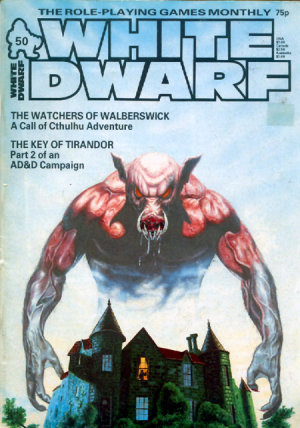

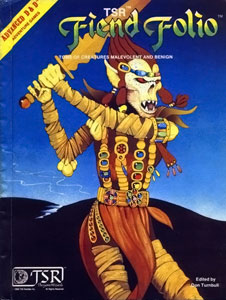
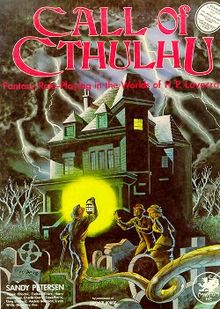
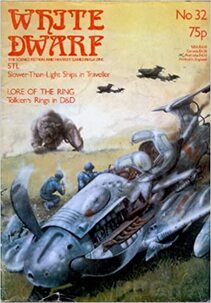
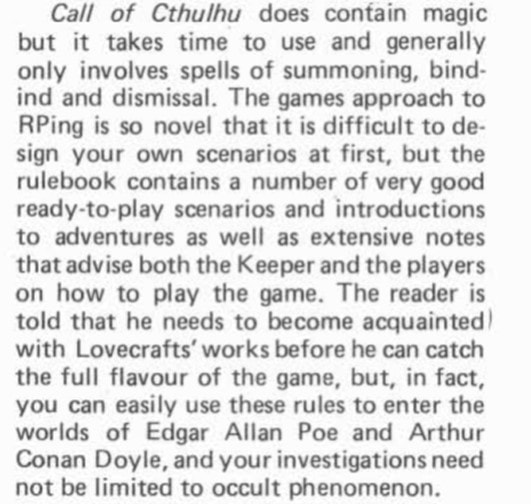
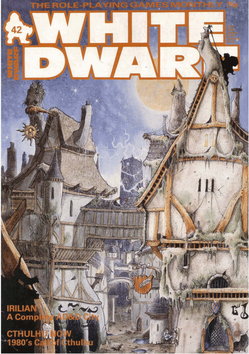
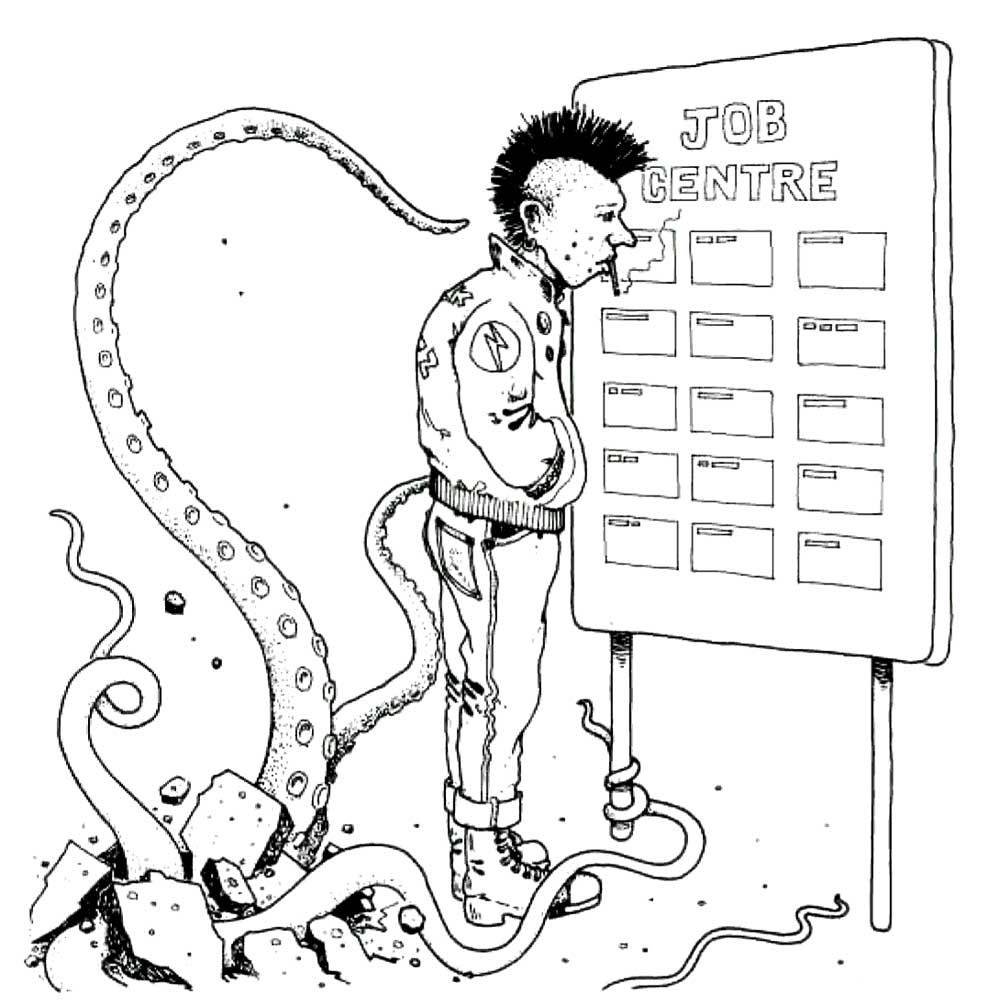
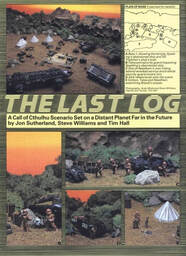
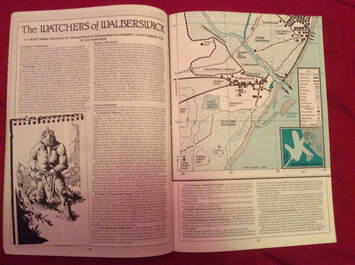
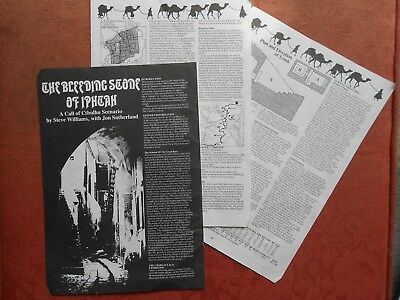
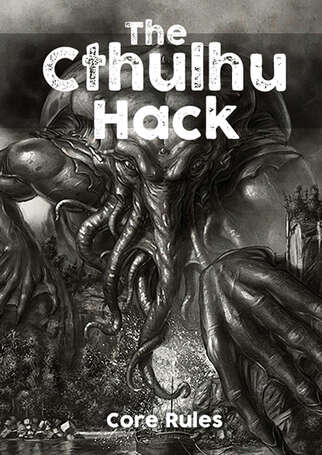
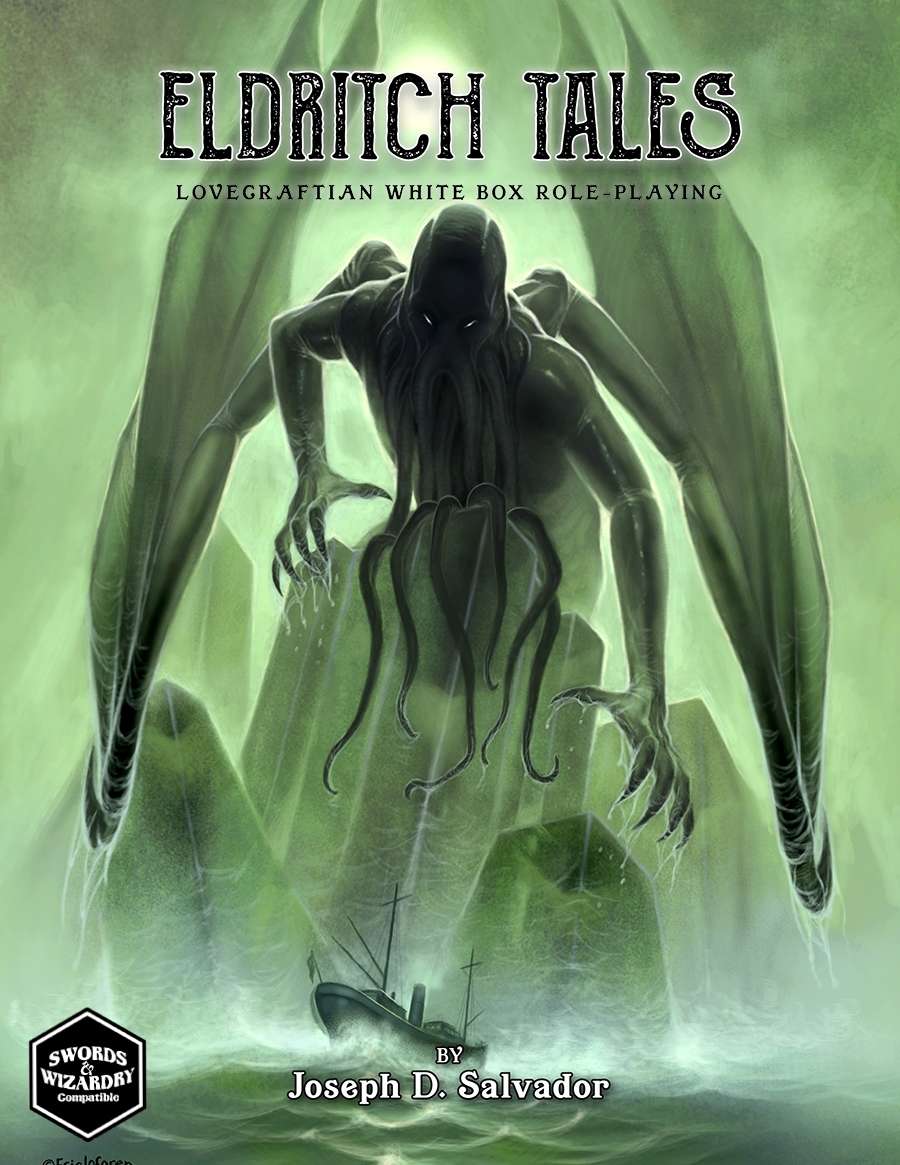
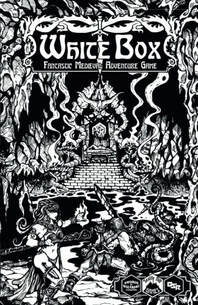
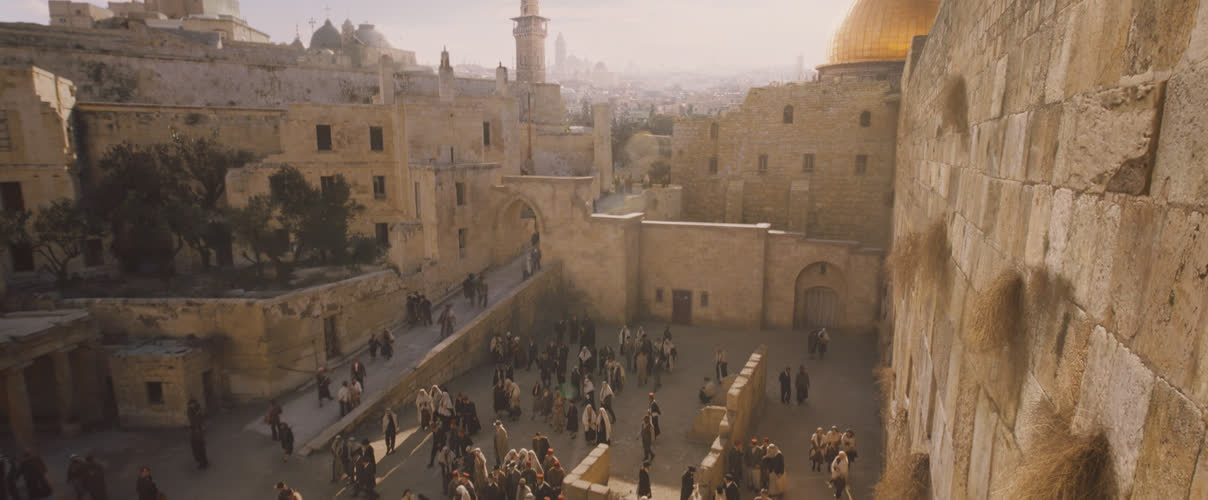
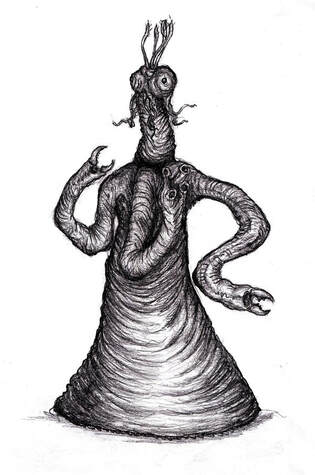

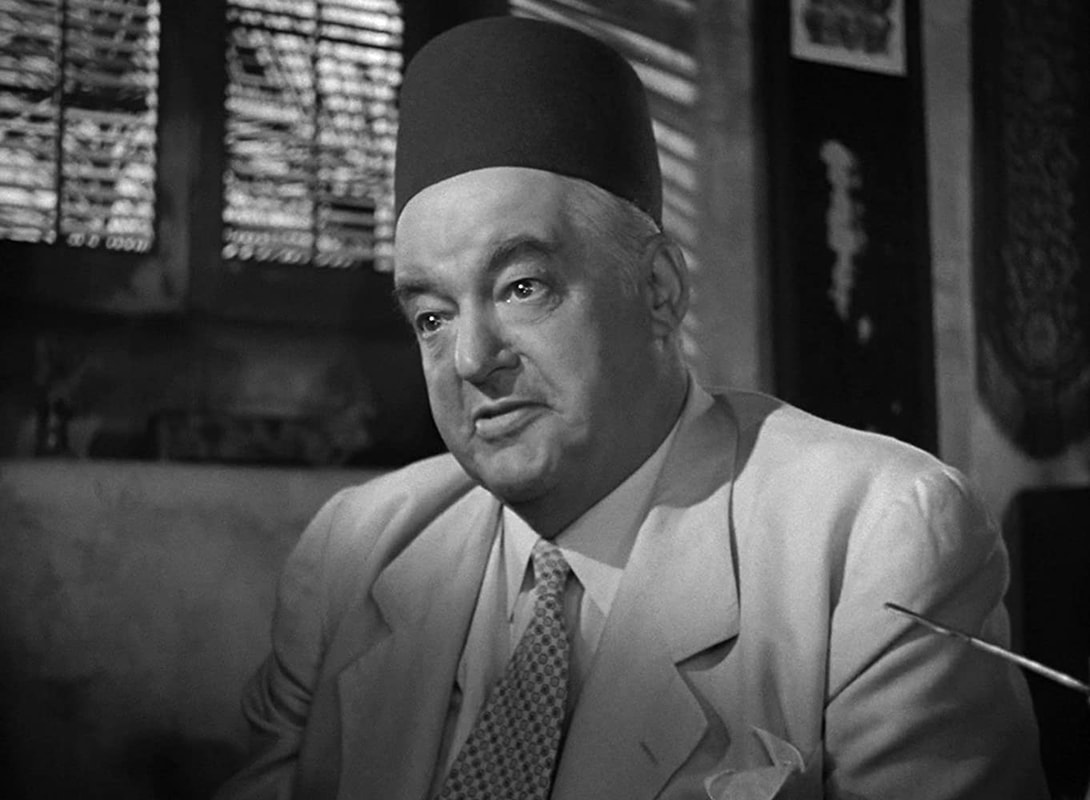

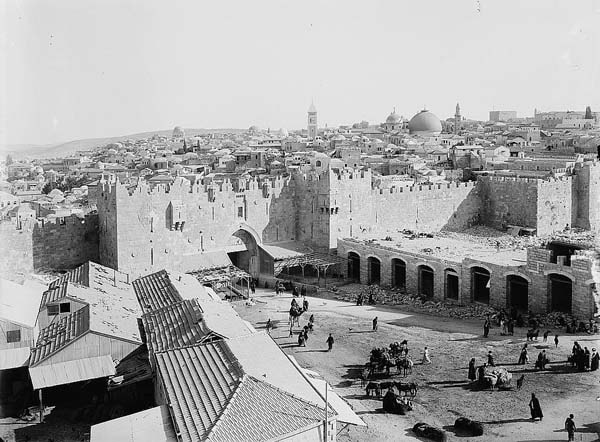

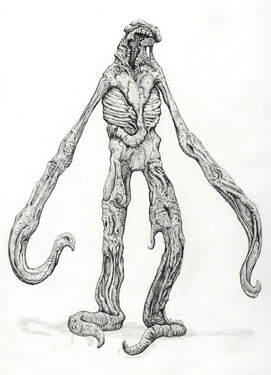

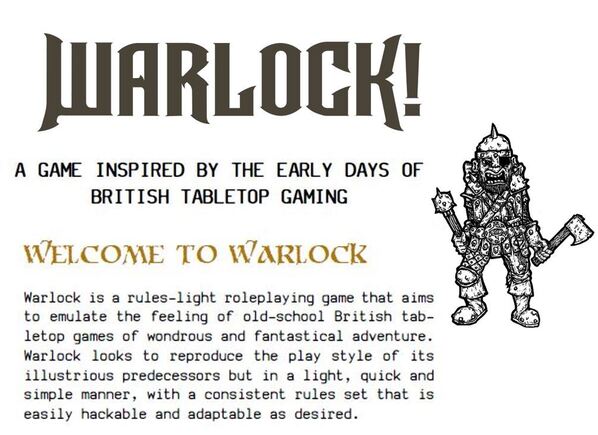
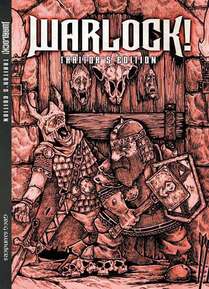

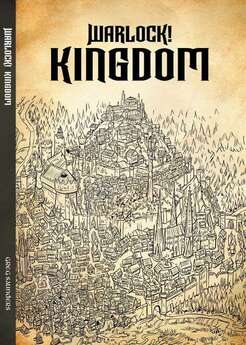
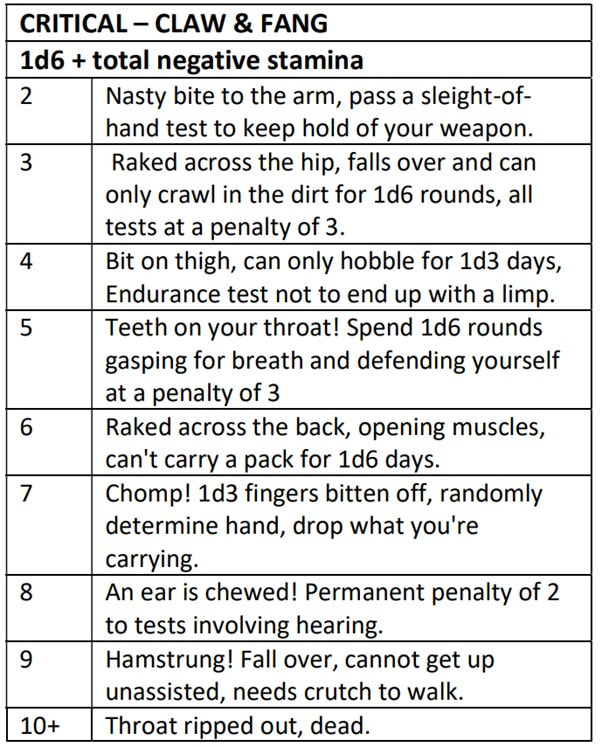
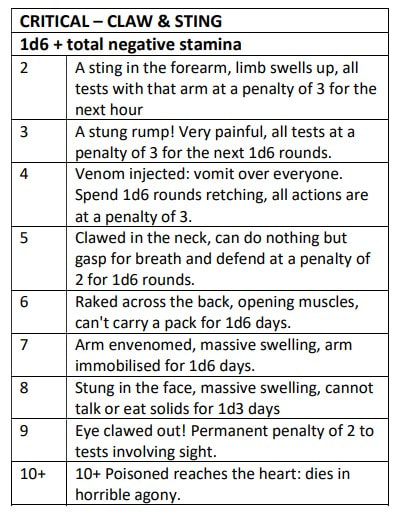
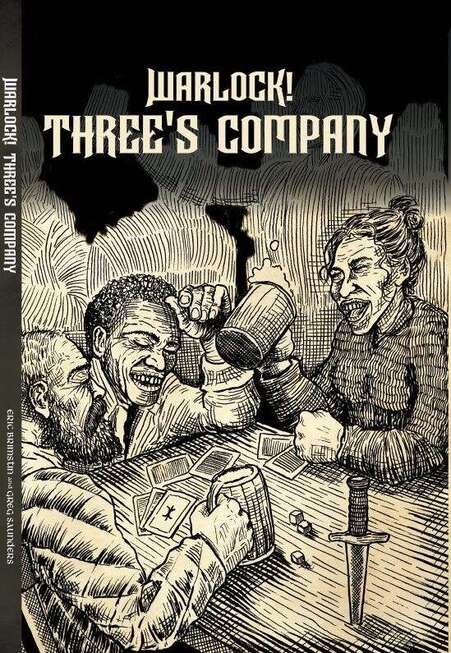
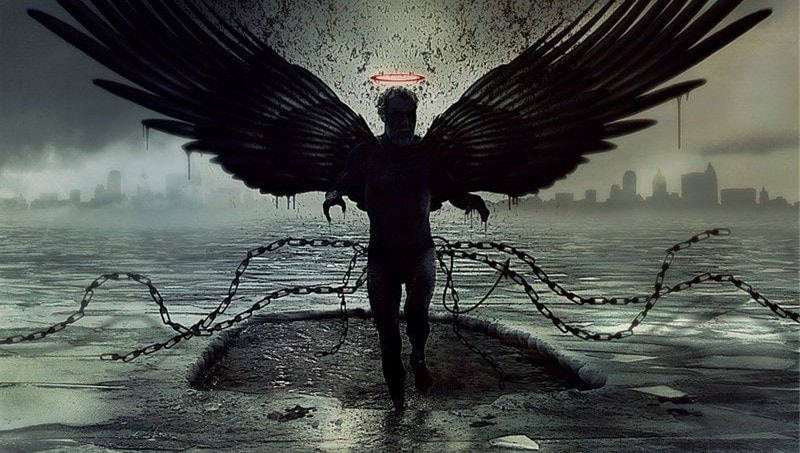

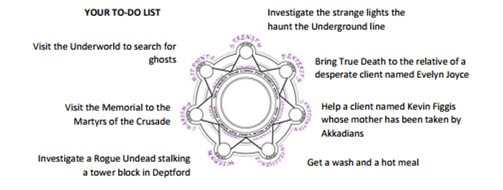

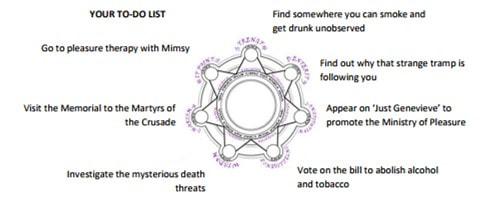


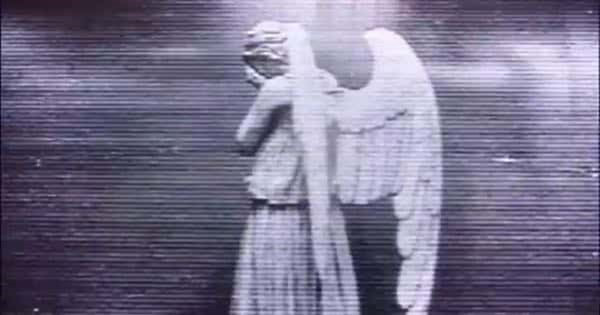
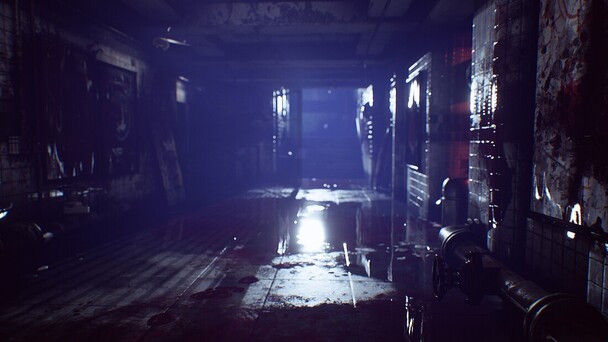




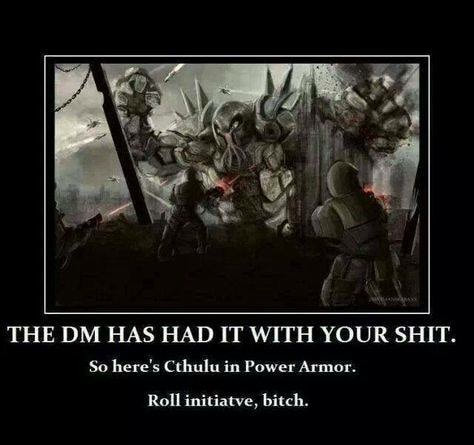
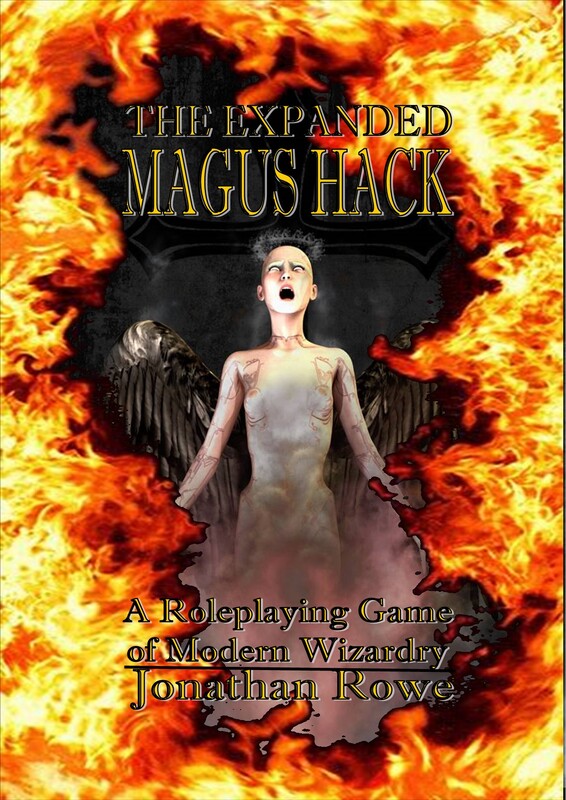
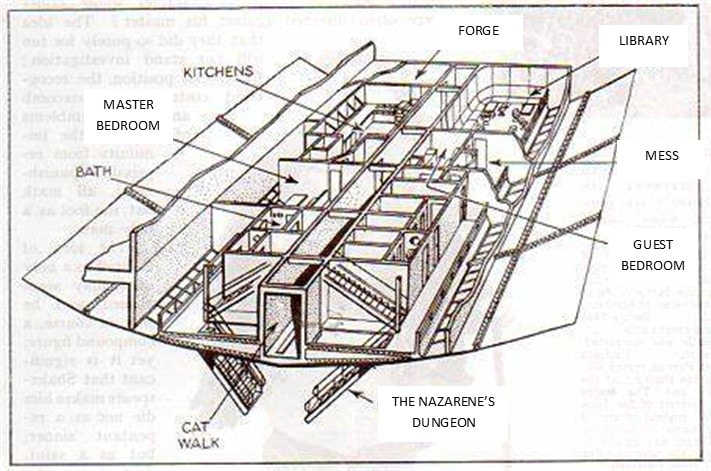
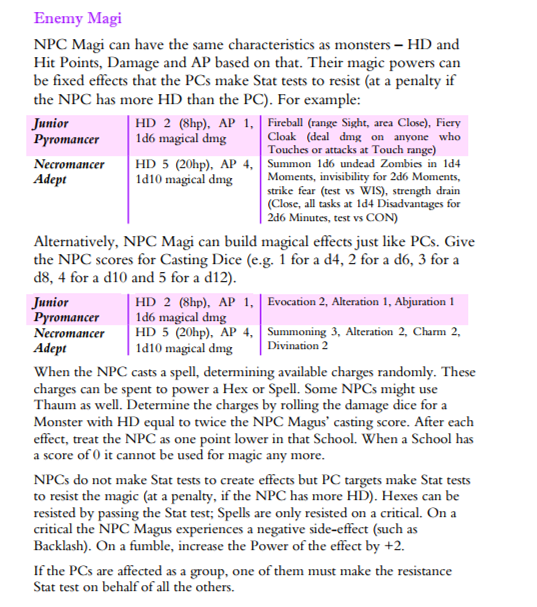
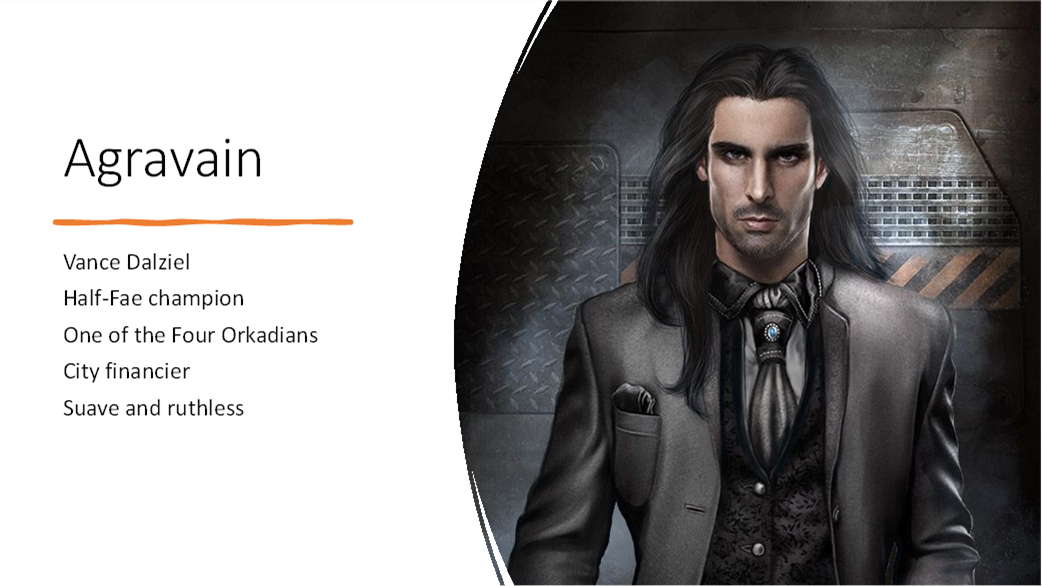
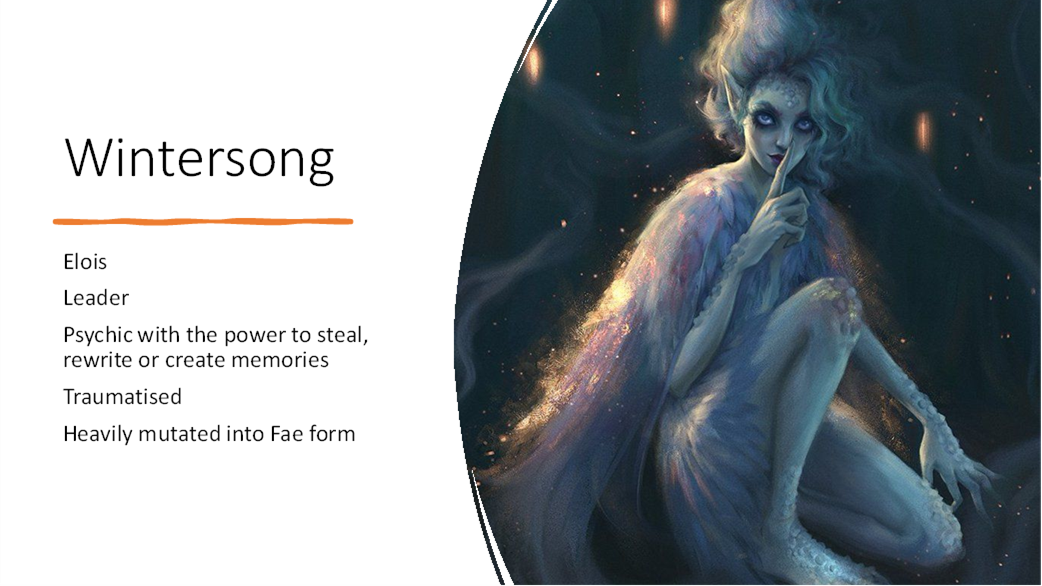
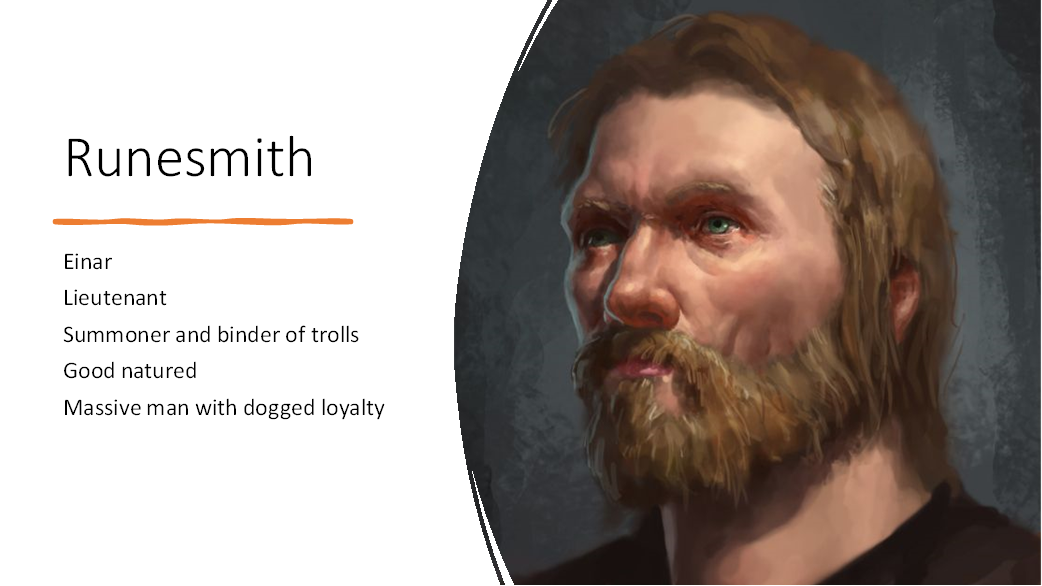
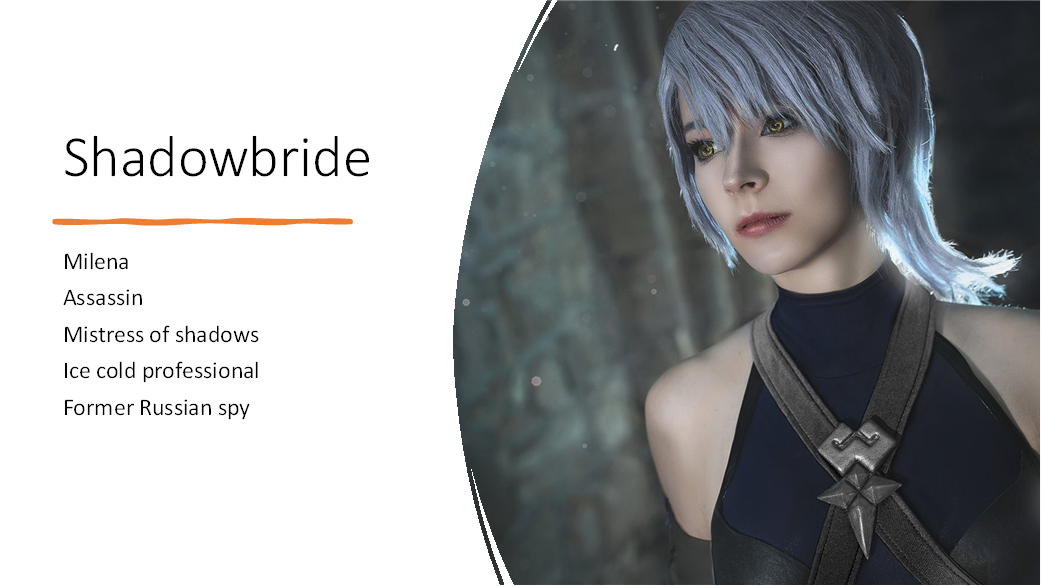

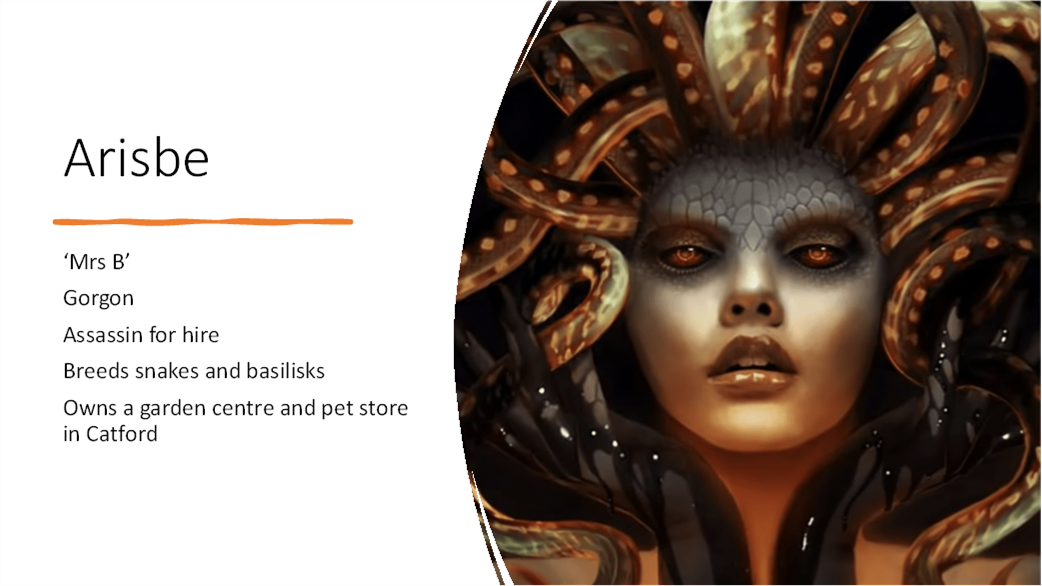



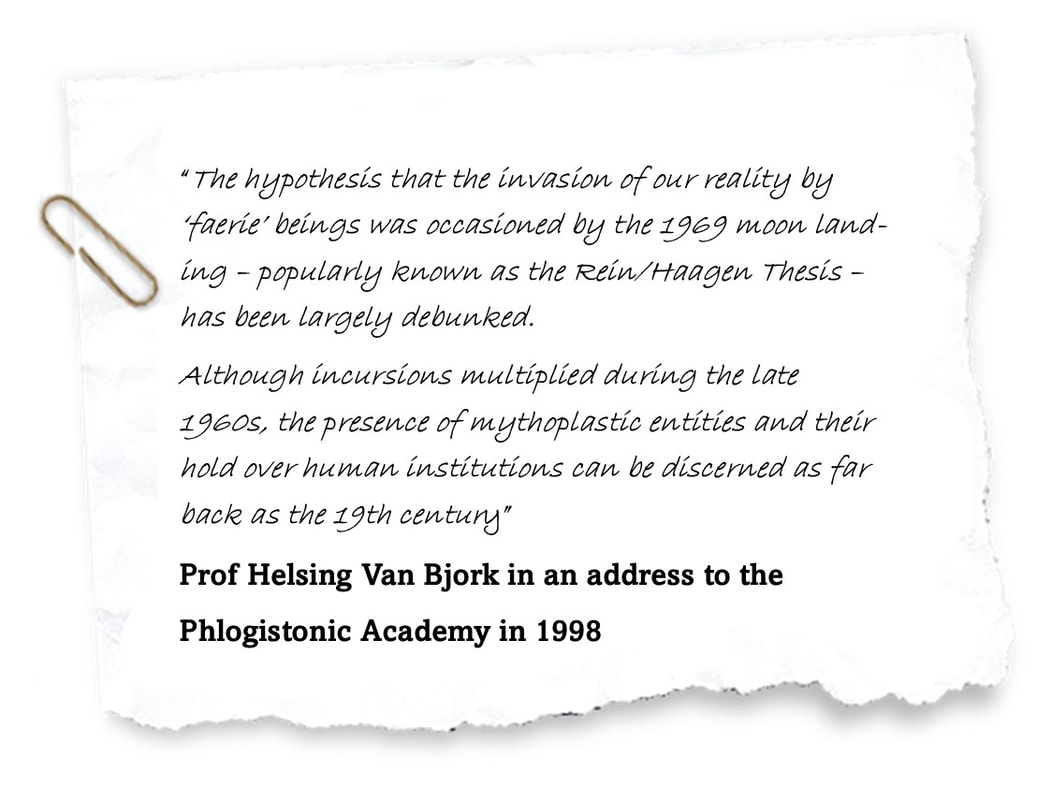
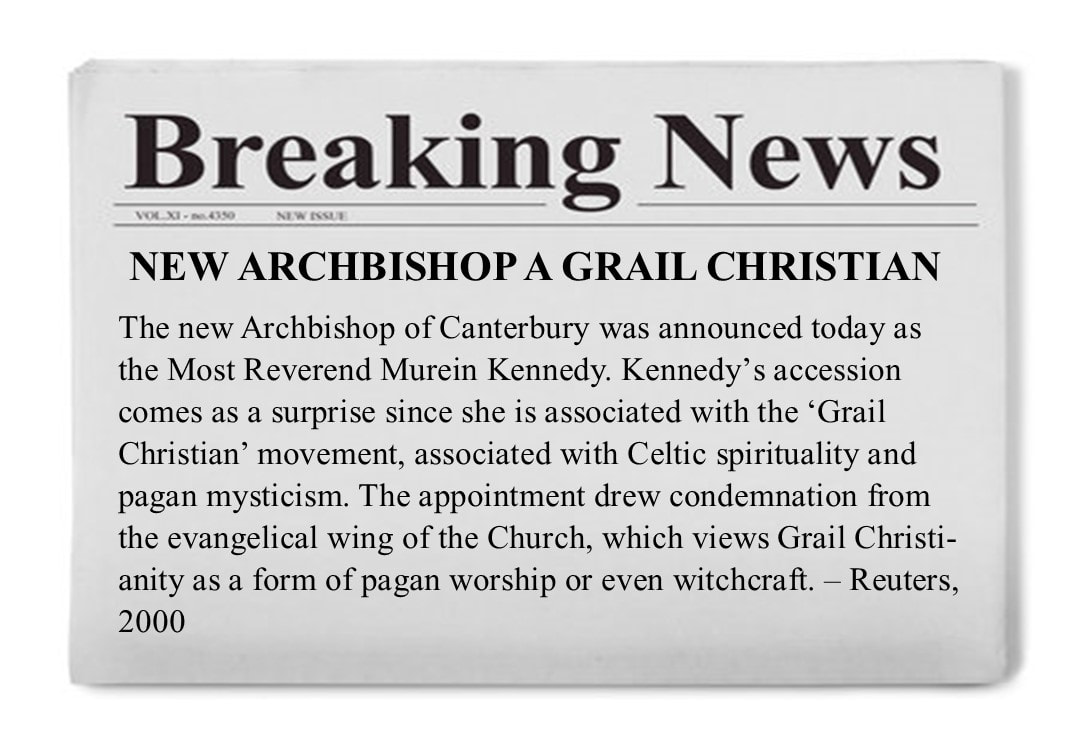
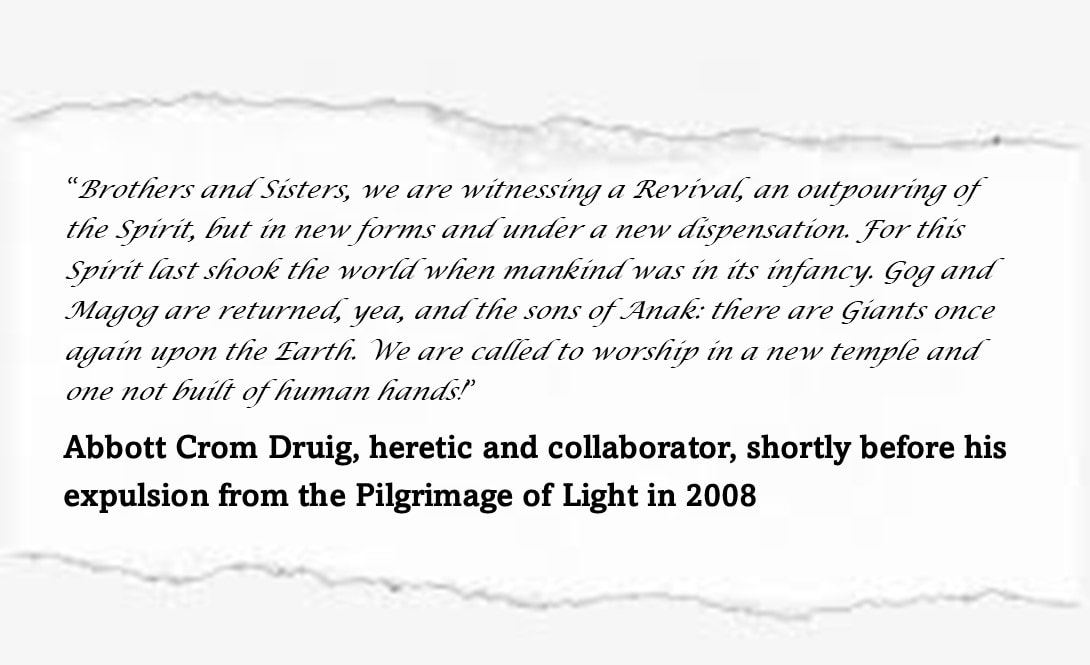

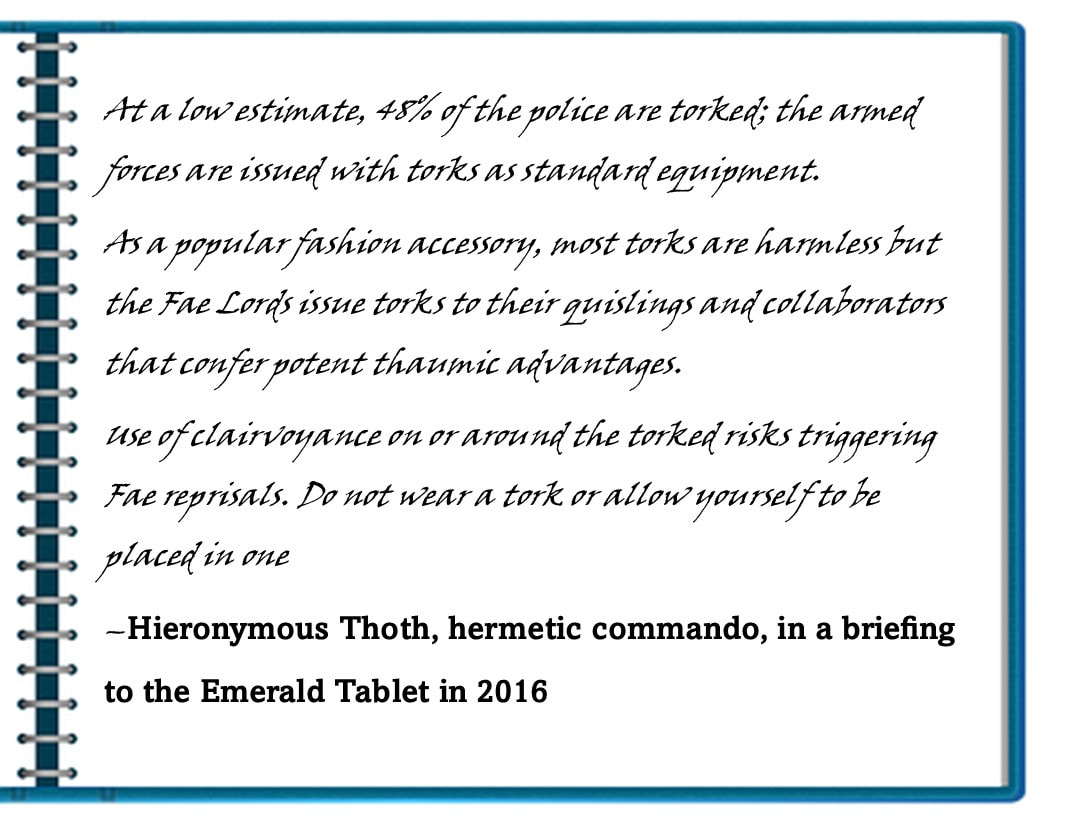
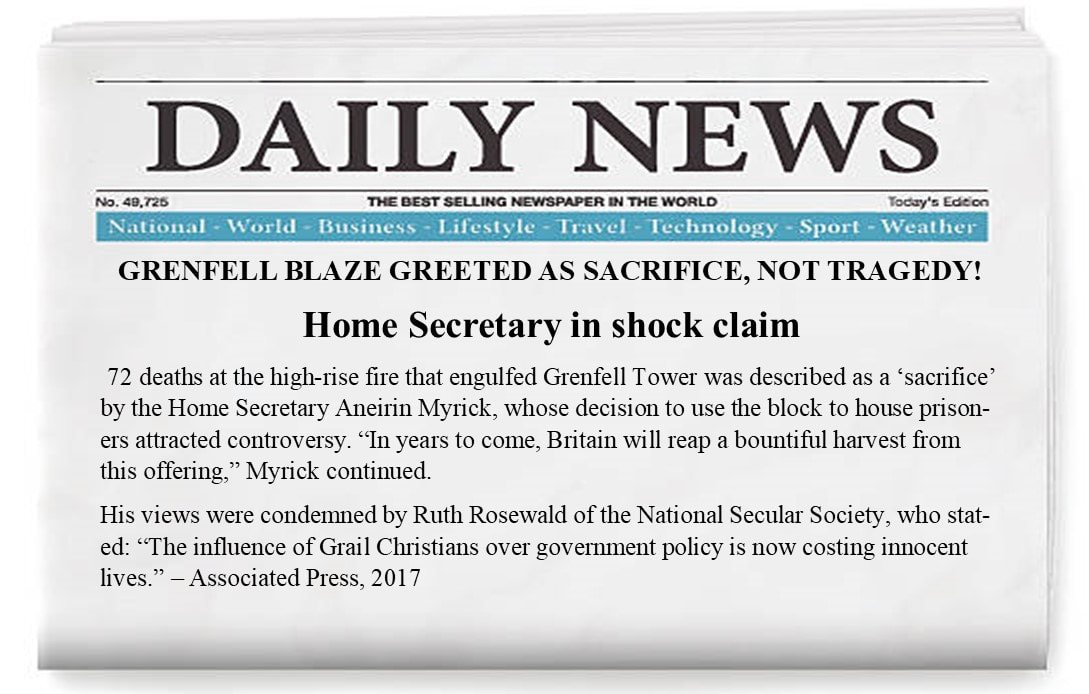


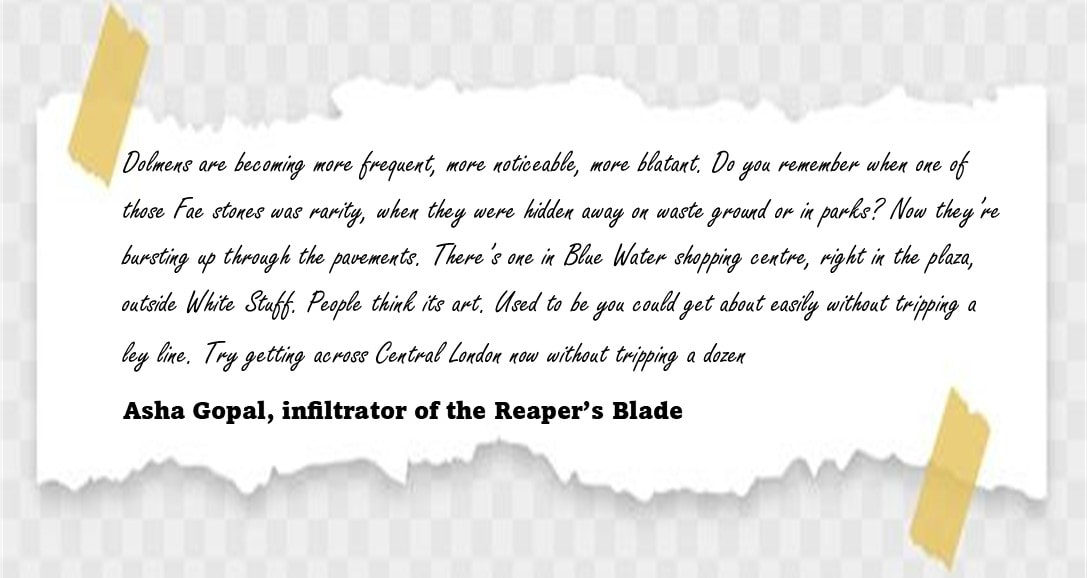



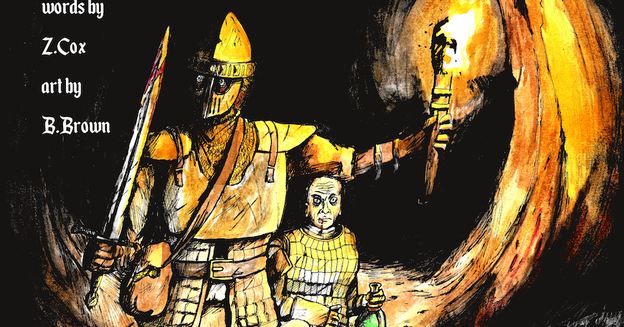
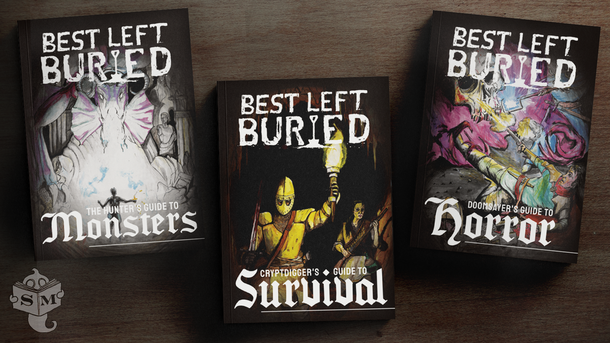

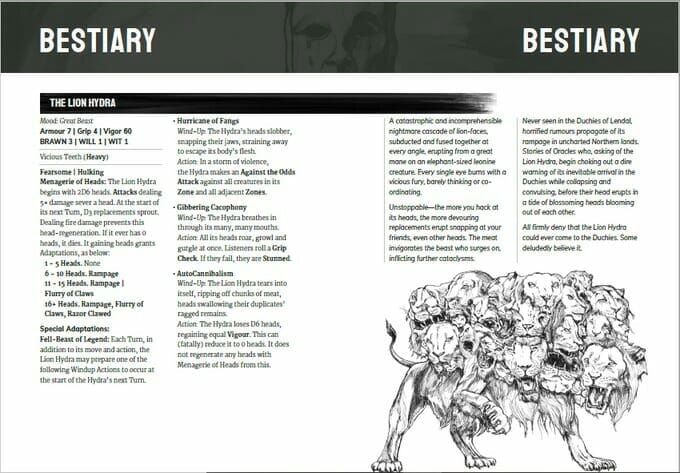
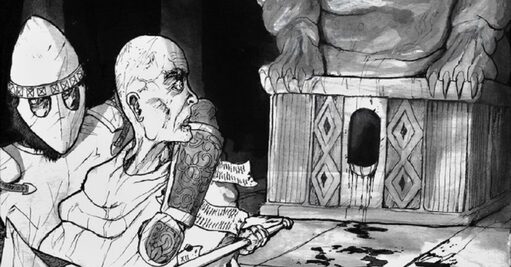
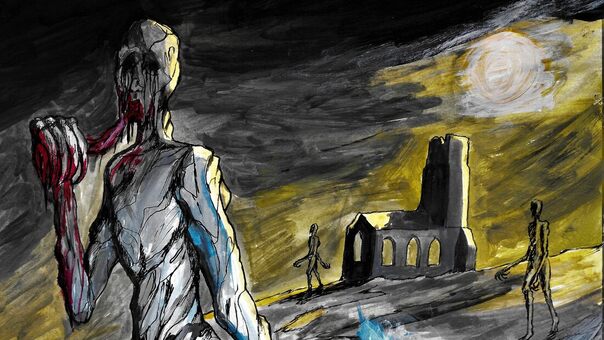
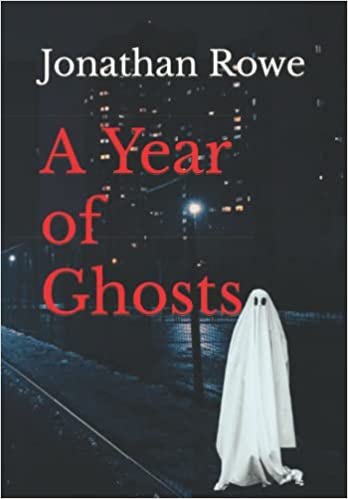
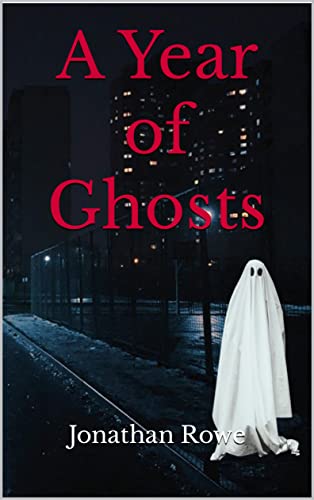
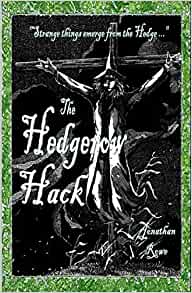
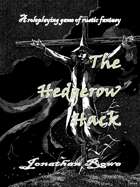
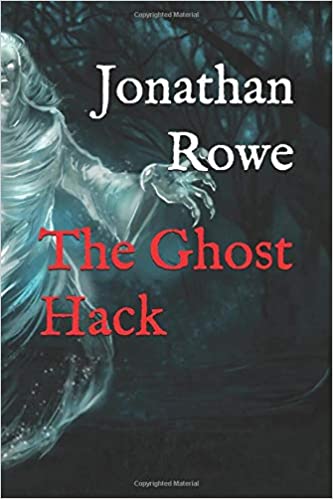
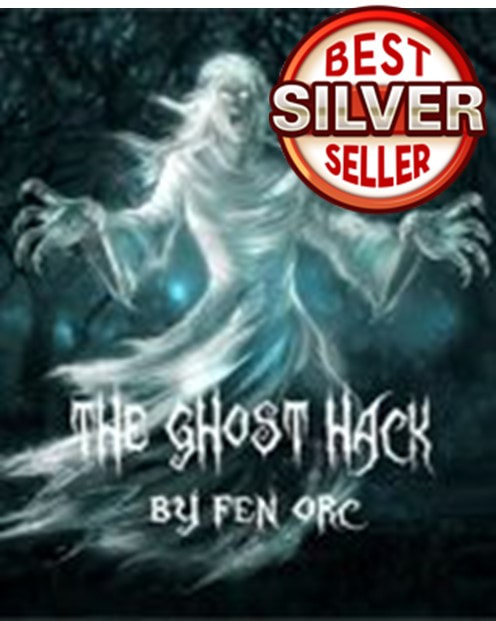
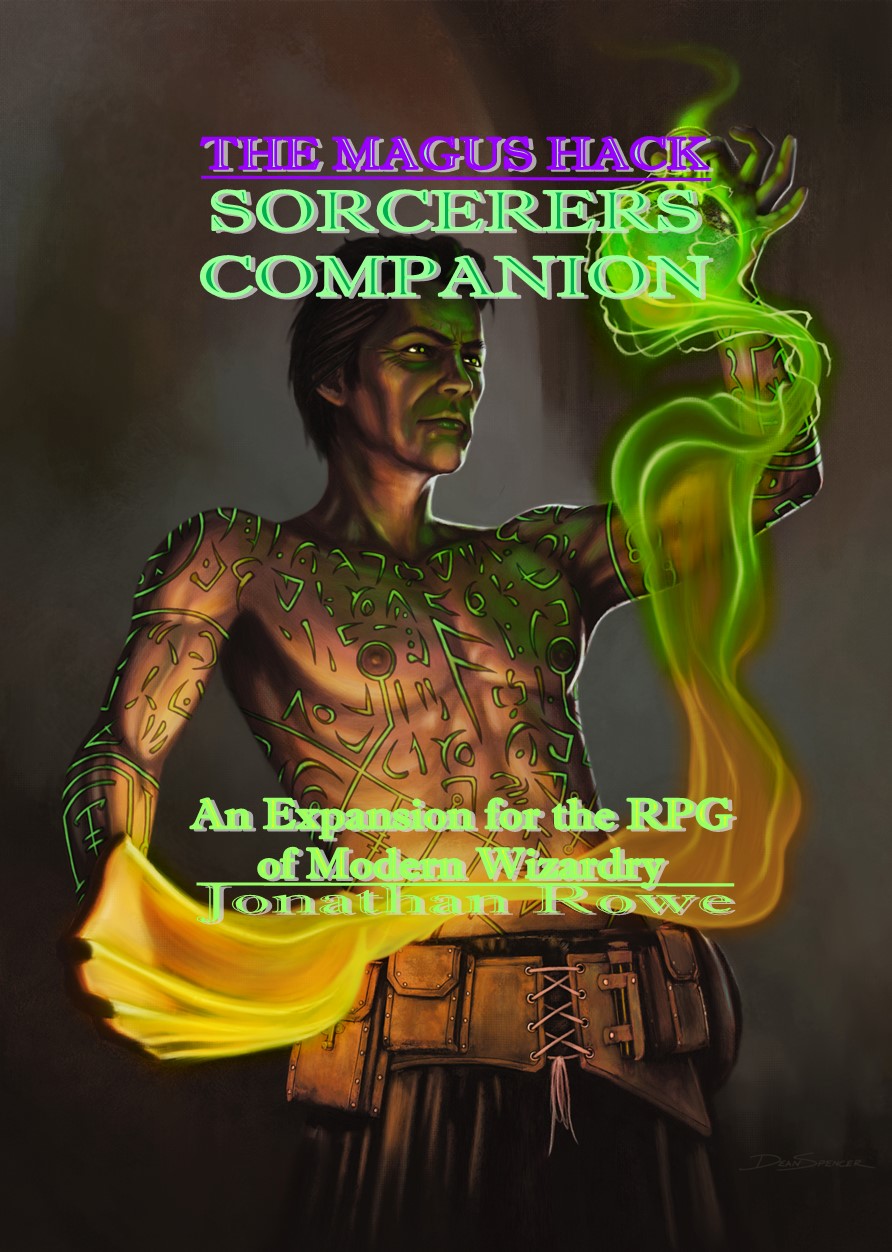
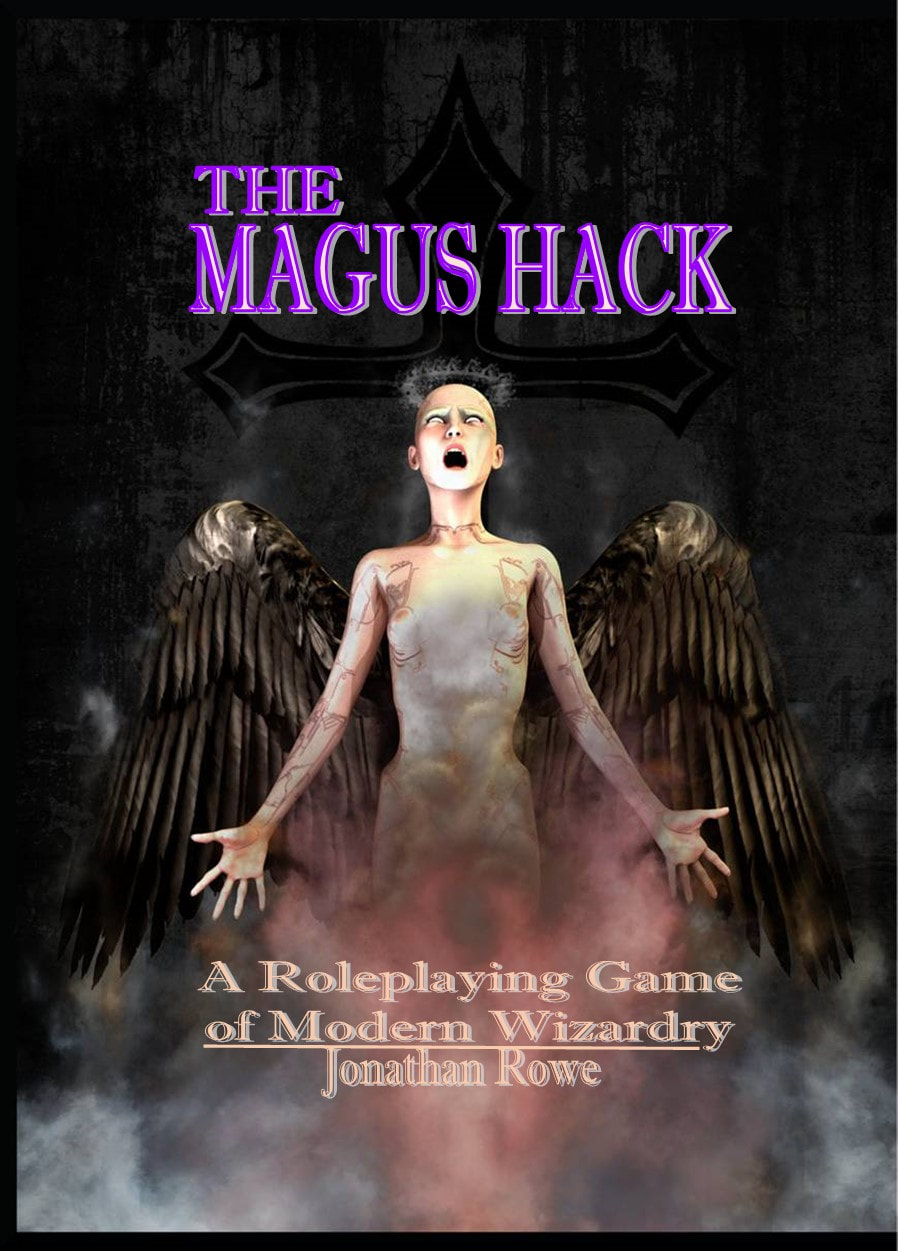
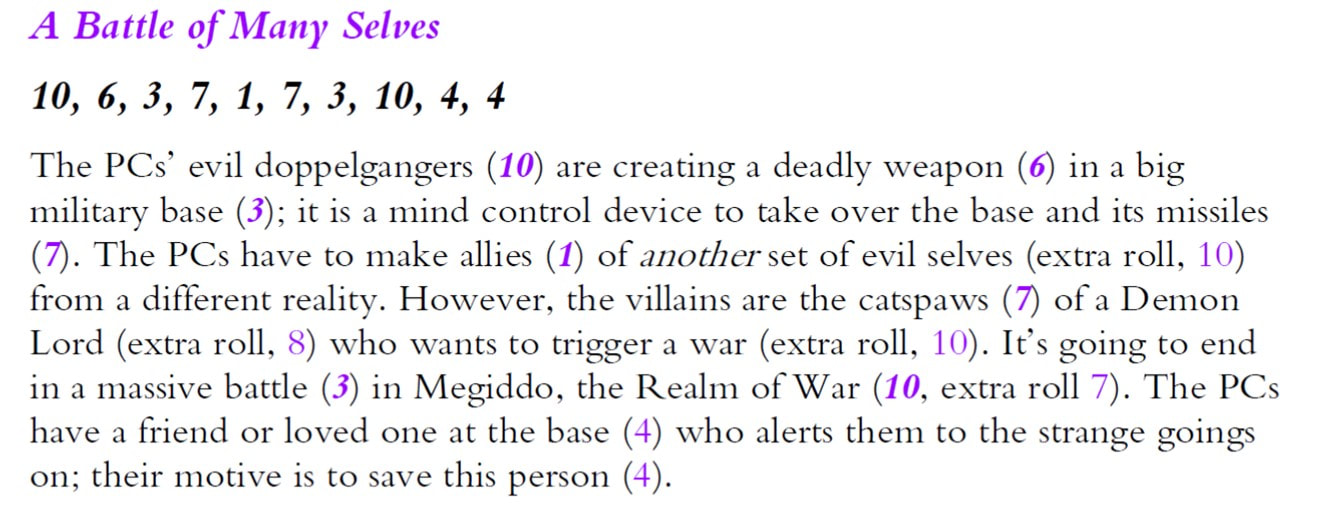
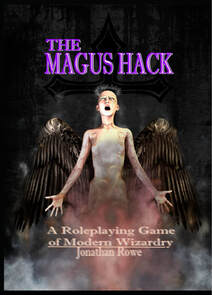
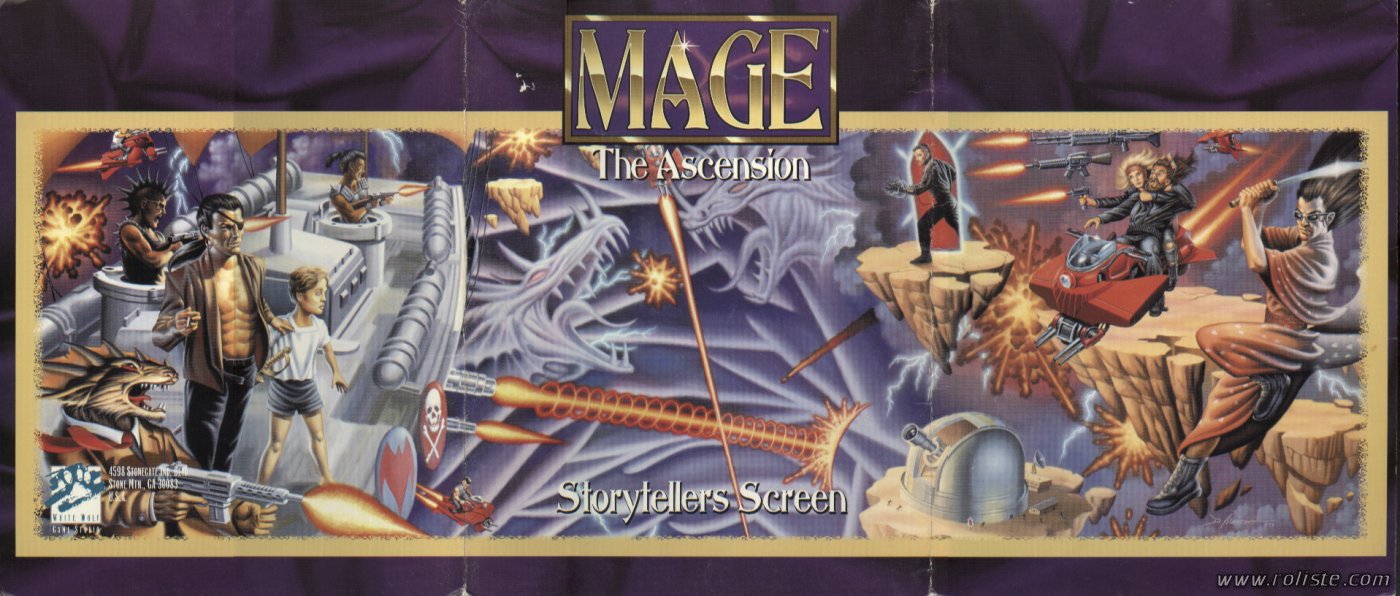
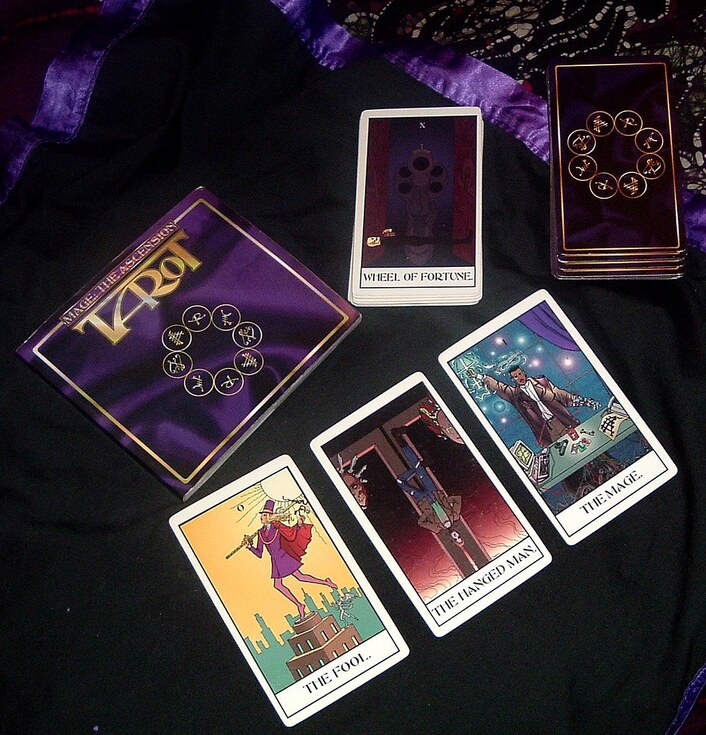
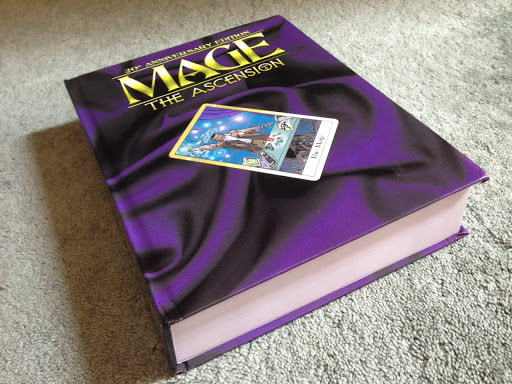

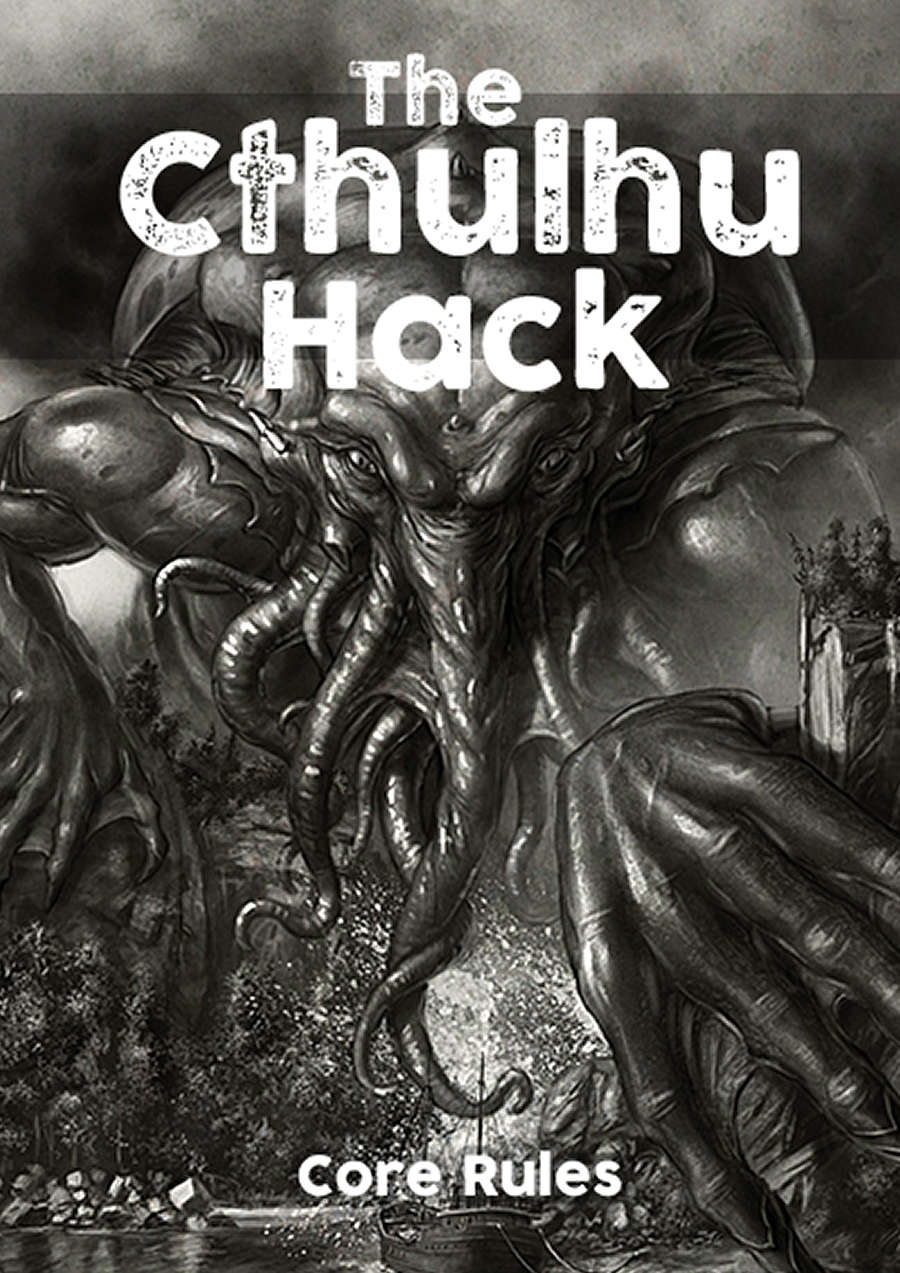
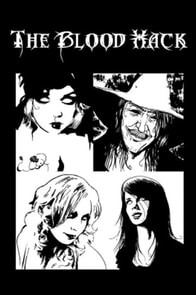
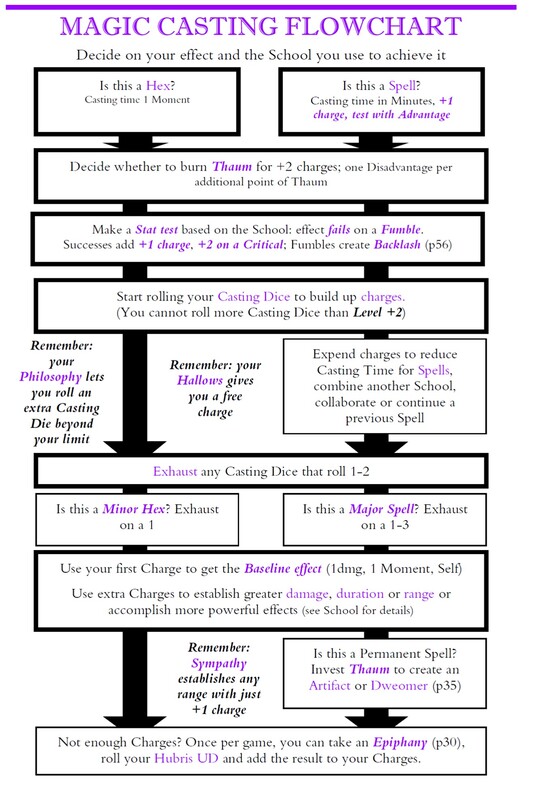

 RSS Feed
RSS Feed
